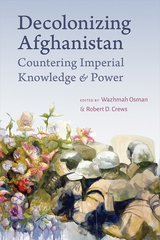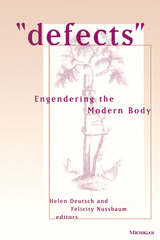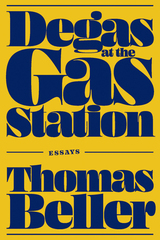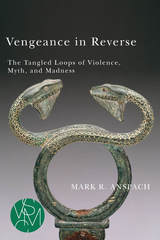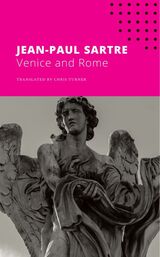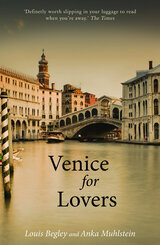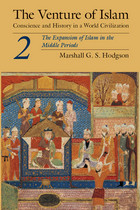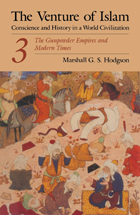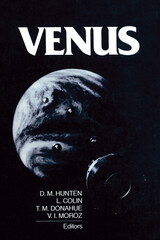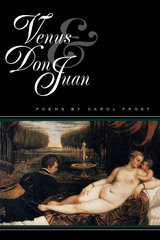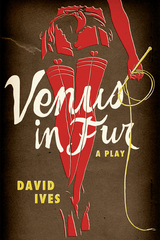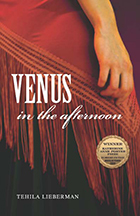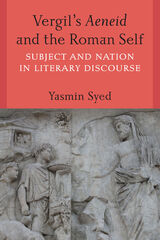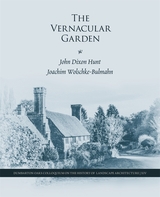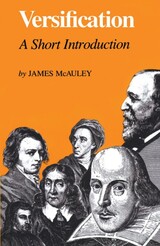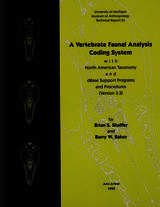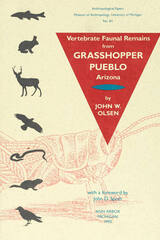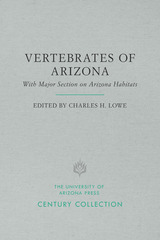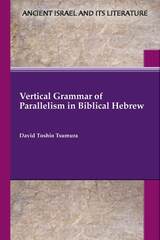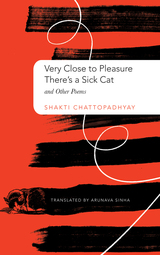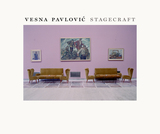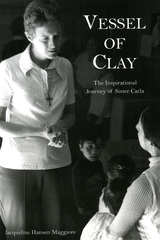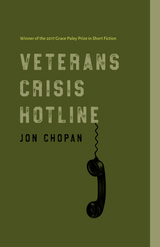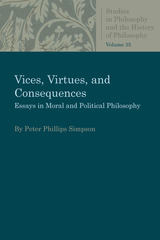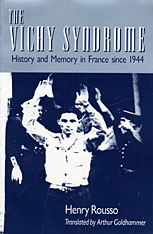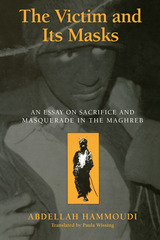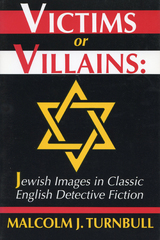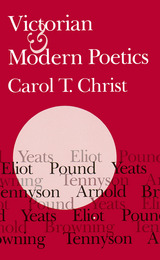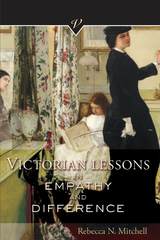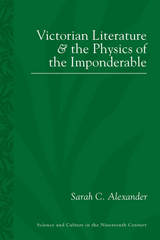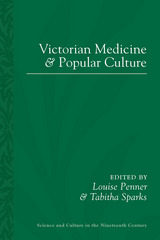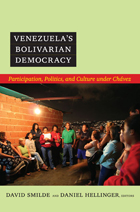 Venezuela's Bolivarian Democracy: Participation, Politics, and Culture under Chávez
David Smilde and Daniel Hellinger, eds.
Duke University Press, 2011 Venezuela’s Bolivarian Democracy brings together a variety of perspectives on participation and democracy in Venezuela. An interdisciplinary group of contributors focuses on the everyday lives of Venezuelans, examining the forms of participation that have emerged in communal councils, cultural activities, blogs, community media, and several other forums. The essays validate many of the critiques of democracy under Chávez, as well as much of the praise. They show that while government corporatism and clientelism are constant threats, the forms of political and cultural participation discussed are creating new discourses, networks, and organizational spaces—for better and for worse. With open yet critical minds, the contributors seek to analyze Venezuela’s Bolivarian democratic experience through empirical research. In doing so, they reveal a nuanced process, a richer and more complex one than is conveyed in international journalism and scholarship exclusively focused on the words and actions of Hugo Chávez. Contributors
Carolina Acosta-Alzuru
Julia Buxton
Luis Duno Gottberg
Sujatha Fernandes
María Pilar García-Guadilla
Kirk A. Hawkins
Daniel Hellinger
Michael E. Johnson
Luis E. Lander
Margarita López-Maya
Elizabeth Gackstetter Nichols
Coraly Pagan
Guillermo Rosas
Naomi Schiller
David Smilde
Alejandro Velasco
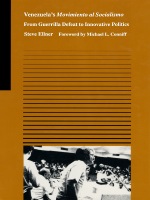 Venezuela's Movimiento al Socialismo: From Guerrilla Defeat to Innovative Politics
Steve Ellner
Duke University Press, 1988 Teodoro Petkoff and the other members of the Movimiento al Socialismo (MAS) in Venezuela had aroused the ire of the orthodox communist leaders by claiming to be both authentic communists and true nationalists, not bound by the dictates of either the Moscow or Maoist/Beijing wings of the party. To infuriate the traditionalists even further, Petkoff and his associates succeeded in being more than isolated critics, as MAS quickly eclipsed the traditional Venezuelan Communist Party and became that country's leading leftist group. The author places MAS in its international national, and historical contexts in order to determine the extent to which it is a unique communist party, as it claims to be. He traces the theory of "national democratic revolution, " which MAS rejects, back to Lenin, and discusses the Latin American left's reevaluation of that thesis. Ellner examines the guerrilla movement in Venezuela, the student movement of the late 1960s, and the emergence of the "New Left" in other countries, especially noting their influence on the formation of MAS. He also discusses the group's role in Venezuelan elections and it's relations with the other parties.
Vengeance in Reverse: The Tangled Loops of Violence, Myth, and Madness
Mark R. Anspach
Michigan State University Press, 2017 How do humans stop fighting? Where do the gods of myth come from? What does it mean to go mad? Mark R. Anspach tackles these and other conundrums as he draws on ethnography, literature, psychotherapy, and the theory of René Girard to explore some of the fundamental mechanisms of human interaction. Likening gift exchange to vengeance in reverse, the first part of the book outlines a fresh approach to reciprocity, while the second part traces the emergence of transcendence in collective myths and individual delusions. From the peacemaking rituals of prestate societies to the paradoxical structure of consciousness, Anspach takes the reader on an intellectual journey that begins with the problem of how to deceive violence and ends with the riddle of how one can deceive oneself.
 Vengeance of the Victim: History and Symbol in Giorgio Bassani’s Fiction
Marilyn Schneider
University of Minnesota Press, 1986
Vengeance of the Victim was first published in 1986. Minnesota Archive Editions uses digital technology to make long-unavailable books once again accessible, and are published unaltered from the original University of Minnesota Press editions.
More profoundly than any documentary record, the collected fiction of Giorgio Bassani—Il Romanzo di Ferrara — captures a very particular and powerful historical reality: Italian Jewish life under Fascism, especially between the passage of the so-called racial laws in 1938 and the end of World War II. Set primarily in the provincial city of Ferrara, Bassani's narratives interweave themes of death, victimization, betrayal, survival, and artistic production. His best-known novel, The Garden of the Finzi-Continis — and other works that concentrate on the crucial years of 1938-1945—stand at the center of the Romanzo.They are preceded by texts that look back on Jewish life in the liberal era of the Risorgimento, and followed by texts set in the liberated, democratic society of the postwar years. These framing narratives provide a space for remembrance and reflection.
Marilyn Schneider's aim, in Vengeance of the Victim, is to uncover the symbolic layers — historical, spatial, topographical, mythopoeic, allegorical, and sexual — that five Bassani's texts their richness and ambiguity, and in so doing to achieve a full understanding of his work and its representation of the Italian Jewish experience. Death and victimization, which pervade these texts, set in motion a process of artistic renewal that is most fully embodied in the vibrant young Micol Finzi-Contini, Bassani's textual icon and a victim of the Holocaust. Schneider also finds that the narratives, especially the late ones, pay self-reflexive attention to the creation of the text, constructing an authorial persona engaged in an existential, moral, and artistic journey from symbolic death to rebirth. It is the writing subject's successful completion of the journey that constitutes the vengeance of the victim.
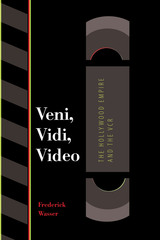 Veni, Vidi, Video: The Hollywood Empire and the VCR
By Frederick Wasser
University of Texas Press, 2002 A funny thing happened on the way to the movies. Instead of heading downtown to a first-run movie palace, or even to a suburban multiplex with the latest high-tech projection capabilities, many people's first stop is now the neighborhood video store. Indeed, video rentals and sales today generate more income than either theatrical releases or television reruns of movies. This pathfinding book chronicles the rise of home video as a mass medium and the sweeping changes it has caused throughout the film industry since the mid-1970s. Frederick Wasser discusses Hollywood's initial hostility to home video, which studio heads feared would lead to piracy and declining revenues, and shows how, paradoxically, video revitalized the film industry with huge infusions of cash that financed blockbuster movies and massive marketing campaigns to promote them. He also tracks the fallout from the video revolution in everything from changes in film production values to accommodate the small screen to the rise of media conglomerates and the loss of the diversity once provided by smaller studios and independent distributors.
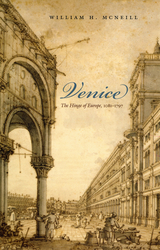 Venice
William H. McNeill
University of Chicago Press, 1974 In this magisterial history, National Book Award winner William H. McNeill chronicles the interactions and disputes between Latin Christians and the Orthodox communities of eastern Europe during the period 1081–1797. Concentrating on Venice as the hinge of European history in the late medieval and early modern period, McNeill explores the technological, economic, and political bases of Venetian power and wealth, and the city’s unique status at the frontier between the papal and Orthodox Christian worlds. He pays particular attention to Venetian influence upon southeastern Europe, and from such an angle of vision, the familiar pattern of European history changes shape.
“No other historian would have been capable of writing a book as direct, as well-informed and as little weighed down by purple prose as this one. Or as impartial. McNeill has succeeded admirably.”—Fernand Braudel, Times Literary Supplement
“The book is serious, interesting, occasionally compelling, and always suggestive.”—Stanley Chojnacki, American Historical Review
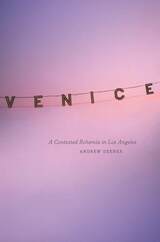 Venice: A Contested Bohemia in Los Angeles
Andrew Deener
University of Chicago Press, 2012 Nestled between Santa Monica and Marina del Rey, Venice is a Los Angeles community filled with apparent contradictions. There, people of various races and classes live side by side, a population of astounding diversity bound together by geographic proximity. From street to street, and from block to block, million dollar homes stand near housing projects and homeless encampments; and upscale boutiques are just a short walk from the (in)famous Venice Beach where artists and carnival performers practice their crafts opposite cafés and ragtag tourist shops. In Venice: A Contested Bohemia in Los Angeles, Andrew Deener invites the reader on an ethnographic tour of this legendary California beach community and the people who live there. In writing this book, the ethnographer became an insider; Deener lived as a resident of Venice for close to six years. Here, he brings a scholarly eye to bear on the effects of gentrification, homelessness, segregation, and immigration on this community. Through stories from five different parts of Venice—Oakwood, Rose Avenue, the Boardwalk, the Canals, and Abbot Kinney Boulevard— Deener identifies why Venice maintained its diversity for so long and the social and political factors that threaten it. Drenched in the details of Venice’s transformation, the themes and explanations will resonate far beyond this one city. Deener reveals that Venice is not a single locale, but a collection of neighborhoods, each with its own identity and conflicts—and he provides a cultural map infinitely more useful than one that merely shows streets and intersections. Deener's Venice appears on these pages fully fleshed out and populated with a stunning array of people. Though the character of any neighborhood is transient, Deener's work is indelible and this book will be studied for years to come by scholars across the social sciences.
Venice and Rome
Jean-Paul Sartre
Seagull Books, 2021 A trio of short pieces on two cities of eternal magic, Venice and Rome.
Iconic French novelist, playwright, and essayist Jean-Paul Sartre is widely recognized as one of the most important philosophers of the twentieth century, and his work has remained relevant and thought-provoking through the decades. The Seagull Sartre Library now presents some of his most incisive philosophical, cultural, and literary critical essays in twelve newly designed and affordable editions.
“Venice speaks to us; this false witness’s voice, shrill at times, whispering at others, broken by silences, is its voice.” In these three moving short pieces, we discover Sartre as a master stylist, lyrically describing his time in two bewitching eternal cities—Venice and Rome. “Antiquity,” Sartre writes, “is alive in Rome, with a hate-filled, magical life.”
 Venice Desired
Tony Tanner
Harvard University Press, 1992 If there is one city that might be said to embody both reason and desire, it would surely be Venice: a thousand-year triumph of rational legislation, aesthetic and sensual self-expression, and self-creation—powerful, lovely, serene. Unique in so many ways, Venice is also unique in its relation to writing. London has Dickens, Paris has Balzac, Saint Petersburg has Dostoevsky, Dublin has Joyce, but there is simply no comparable writer for, or out of, Venice.
Venice effectively disappeared from history altogether in 1797 after its defeat by Napoleon. From then on, it seemed to exist as a curiously marooned spectacle. Literally marooned—the city mysteriously growing out of the sea, the beautiful stone impossibly floating on water—but temporally marooned as well, stagnating outside history. Yet as spectacle, as the beautiful city par excellence, the city of art, the city as art and as spectacular example, as the greatest and richest republic in the history of the world, now declined and fallen, Venice became an important site for the European imagination.
Watery, dark, silent, a place of sensuality and secrecy; of masks and masquerading; of an always possibly treacherous beauty; of Desdemona and Iago, Shylock, Volpone; of conspiracy and courtesans in Otway; an obvious setting for many Gothic novels—Venice is not written from the inside but variously appropriated from without. Venice—the place, the name, the dream—seems to lend itself to a whole variety of appreciations, recuperations, and and hallucinations. In decay and decline, yet saturated with secret sexuality—suggesting a heady compound of death and desire—Venice becomes for many writers what is was for Byron: both “the greenest island of my imagination” and a “sea-sodom.” It also, as this book tries to show, plays a crucial role in the development of modern writing. Tony Tanner skillfully lays before us the many ways in which this dreamlike city has been summoned up, depicted, dramatized—then rediscovered or transfigured in selected writings through the years.
Venice For Lovers
Louis Begley and Anka Muhlstein
Haus Publishing, 2003 Every year for the 30 they have been married, Louis Begley and Anka Mulhstein spend long, enjoyable months in Venice. They write and live there and, over the decades, La Serenissima has become their second home. The owners of their favourite restaurants have become their friends and they share the lives of the locals, far off the beaten tourist tracks, as Mulhstein describes so very charmingly in this book. Louis Begley tells the story of how he fell in love in and with Venice. He is not alone, as his brilliant literary essay on the city’s place in world literature demonstrates: Henry James, Marcel Proust and Thomas Mann are only some of his illustrious predecessors. Mulhstein and Begley’s Venice is a very private view of a place, which will forever inspire dreams of love and passion.
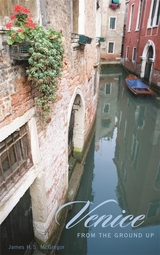 Venice from the Ground Up
James H. S. McGregor
Harvard University Press, 2008 Venice came to life on spongy mudflats at the edge of the habitable world. Protected in a tidal estuary from barbarian invaders and Byzantine overlords, the fishermen, salt gatherers, and traders who settled there crafted an amphibious way of life unlike anything the Roman Empire had ever known. In an astonishing feat of narrative history, James H. S. McGregor recreates this world-turned-upside-down, with its waterways rather than roads, its boats tethered alongside dwellings, and its livelihood harvested from the sea.
McGregor begins with the river currents that poured into the shallow Lagoon, carving channels in its bed and depositing islands of silt. He then describes the imaginative responses of Venetians to the demands and opportunities of this harsh environment—transforming the channels into canals, reclaiming salt marshes for the construction of massive churches, erecting a thriving marketplace and stately palaces along the Grand Canal. Through McGregor’s eyes, we witness the flowering of Venice’s restless creativity in the elaborate mosaics of St. Mark’s soaring basilica, the expressive paintings in smaller neighborhood churches, and the colorful religious festivals—but also in theatrical productions, gambling casinos, and masked revelry, which reveal the city’s less pious and orderly face.
McGregor tells his unique history of Venice by drawing on a crumbling, tide-threatened cityscape and a treasure-trove of art that can still be seen in place today. The narrative follows both a chronological and geographical organization, so that readers can trace the city’s evolution chapter by chapter and visitors can explore it district by district on foot and by boat.
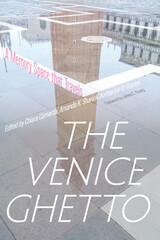 The Venice Ghetto: A Memory Space that Travels
Edited by Chiara Camarda, Amanda K. Sharick, and Katharine G. Trostel
University of Massachusetts Press, 2022 The Venice Ghetto was founded in 1516 by the Venetian government as a segregated area of the city in which Jews were compelled to live. The world's first ghetto and the origin of the English word, the term simultaneously works to mark specific places and their histories, and as a global symbol that evokes themes of identity, exile, marginalization, and segregation. To capture these multiple meanings, the editors of this volume conceptualize the ghetto as a "memory space that travels" through both time and space.
This interdisciplinary collection engages with questions about the history, conditions, and lived experience of the Venice Ghetto, including its legacy as a compulsory, segregated, and enclosed space. Contributors also consider the ghetto's influence on the figure of the Renaissance moneylender, the material culture of the ghetto archive, the urban form of North Africa's mellah and hara, and the ghetto's impact on the writings of Primo Levi and Marjorie Agosín.
In addition to the volume editors, The Venice Ghetto features a foreword from James E. Young and contributions from Shaul Bassi, Murray Baumgarten, Margaux Fitoussi, Dario Miccoli, Andrea Yaakov Lattes, Federica Ruspio, Michael Shapiro, Clive Sinclair, and Emanuela Trevisan Semi.
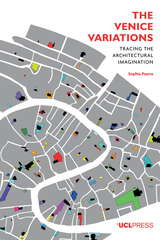 Venice Variations: Tracing the Architectural Imagination
Sophia Psarra
University College London, 2018 From the myth of Arcadia through to the twenty-first century, ideas about sustainability—how we imagine better urban environments—remain persistently relevant and raise recurring questions. How do cities evolve as complex spaces nurturing both urban creativity and the fortuitous art of discovery, and by which mechanisms do they foster imagination and innovation? While past utopias were conceived in terms of an ideal geometry, contemporary exemplary models of urban design seek technological solutions of optimal organization. The Venice Variations explores Venice as a prototypical city that may hold unique answers to the ancient narrative of utopia. Venice was not the result of a preconceived ideal but the pragmatic outcome of social and economic networks of communication. Its urban creativity, though, came to represent the quintessential combination of place and institutions of its time.
Through a discussion of Venice and two other works owing their inspiration to this city—Italo Calvino’s Invisible Cities and Le Corbusier’s Venice Hospital—Sophia Psarra describes Venice as a system that starts to resemble a highly probabilistic "algorithm." The rapidly escalating processes of urban development around our big cities share many of the motivations for survival, shelter, and trade that brought Venice into existence. Rather than seeing these places as problems to be solved, we need to understand how urban complexity can evolve, as happened from its unprepossessing origins in the marshes of the Venetian lagoon to the "model city" enduring a thousand years. This book frees Venice from stereotypical representations, revealing its generative capacity to inform potential other "Venices" for the future.
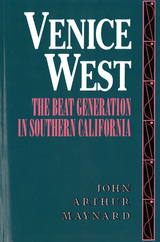 Venice West: The Beat Generation in Southern California
Maynard, John Arthur
Rutgers University Press, 1993 "A most remarkable book . . . a wonderful account of an odd and unlikely place where for a brief time a small number of people pursued a romantic vision of what a life dedicated to art should be like . . . a superb story."ÐÐWilliam O'Neill, author of American High: The Years of Confidence, 1945-1960
The beatnik was born in Venice, California, in the 1950s. An imaginary figure in many respectsÐÐthe invention of both the media and the people who played the beatnik roleÐÐthe character quickly assumed nearly mythic proportions for the American public. Coffeehouses, beards, poetry, drugs, and free-wheeling sexuality were all associated with the beatnik, the quintessential rebel who, by rejecting material values, represented both a threat and an alluring alternative to the dominant middle-class culture. In this fascinating book, John Arthur Maynard tells the story of the poets and promoters who invented the Beat Generation and who, in many cases, destroyed themselves in the process. In this look at the least remembered (but in its time, most publicized) beat enclave, Maynard focuses on two of Venice's most newsworthy residentsÐÐLawrence Lipton and Stuart Z. Perkoff. Lipton began as a writer of popular detective stories and screenplays, but was determined to be recognized as a poet and social critic. He eventually published The Holy Barbarians, which helped to create the enduring public image of the beatnik. Stuart Perkoff was a more gifted poet; with fascination and horror, we follow his failed attempts to support his family, his heroin addiction, his first wive's courage and mental fragility, his sexual entanglements, his imprisonment, and the development of his own writing. Other characters who move in and out of the story are Kenneth Rexroth, Jack Kerouac, and Allen Ginsberg, as well as lesser-known poets, artists, hangers-on, and the many women who were rarely treated as full members of the community. For most of the 1950s, the Venice beatniks were able to live and work in isolation. Once the media decided that beats made good copy, however, their peace was shattered. Reporters, drug dealers, violent criminals, and would-be beatniks invaded Venice in such force that many "square" residents began an unrelenting campaign to purge their community of bohemianism. This campaign persisted long after the beats, who tended to ignore politics, had yielded the stage to a new generation of political activists. In this collective biography, based largely on unpublished sources, Maynard tells us how these events affected public perceptions and the beats' own perceptions of themselves.
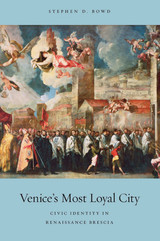 Venice's Most Loyal City: Civic Identity in Renaissance Brescia
Stephen D. Bowd
Harvard University Press, 2010 By the second decade of the fifteenth century Venice had established an empire in Italy extending from its lagoon base to the lakes, mountains, and valleys of the northwestern part of the peninsula. The wealthiest and most populous part of this empire was the city of Brescia which, together with its surrounding territory, lay in a key frontier zone between the politically powerful Milanese and the economically important Germans. Venetian governance there involved political compromise and some sensitivity to local concerns, and Brescians forged their distinctive civic identity alongside a strong Venetian cultural presence.
Based on archival, artistic, and architectural evidence, Stephen Bowd presents an innovative microhistory of a fascinating, yet historically neglected city. He shows how Brescian loyalty to Venice was repeatedly tested by a succession of disasters: assault by Milanese forces, economic downturn, demographic collapse, and occupation by French and Spanish armies intent on dismembering the Venetian empire. In spite of all these troubles the city experienced a cultural revival and a dramatic political transformation under Venetian rule, which Bowd describes and uses to illuminate the process of state formation in one of the most powerful regions of Renaissance Italy.
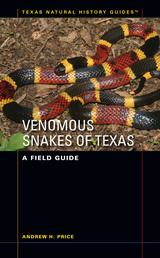 Venomous Snakes of Texas: A Field Guide
By Andrew H. Price
University of Texas Press, 2009 Texas has about one hundred twenty native species and subspecies of snakes, fifteen of which are venomous. Since 1950, Texans have turned to the Poisonous Snakes of Texas pamphlet series published by the Texas Parks and Wildlife Department for help in identifying these snakes and for expert advice on preventing and treating snakebite. Venomous Snakes of Texas, a thoroughly revised and updated edition of Poisonous Snakes, carries on this tradition as a one-stop, all-you-need-to-know guide to Texas's rattlesnakes, copperheads, cottonmouths, and coral snakes. In this authoritative field guide, you'll find: - Full-color photographs and a county-by-county distribution map for each species.
- Each species' common and scientific name, description, look-alikes, and a summary sketch of its habitat, behavior, reproduction, venom characteristics, predator-prey relationships, and fossil record.
- Up-to-date advice on recognizing venomous snakes and preventing and treating snakebite, both at home and in the field.
- A glossary of terms and an extensive bibliography.
A special feature of this guide is an expanded treatment of the ecological and evolutionary context in which venomous snakes live, which supports Price's goal "to lessen the hatred and fear and to increase the understanding, the respect, and even the appreciation with which venomous snakes should be regarded."
Venous Thrombosis and Pulmonary Embolism
Michael Hume, Simon Sevitt, and Duncan P. Thomas
Harvard University Press, 1970 This volume, representing the combined efforts of a surgeon, a pathologist, and an internist, is the first comprehensive survey of the subject in many years. Interpreting anatomic, experimental, and clinical data the authors present the subject as a single disease—venous thromboembolism—with pulmonary embolism as its most important complication. Incidence, pathogenesis, clinical manifestations, diagnosis, and management have been dealt with throughout in a way that will acquaint the student with the fundamentals of the disease, the practitioner with current laboratory progress, and the research scientist with the most compelling unsolved problems in clinical management. A significant and lucidly written study, the monograph is thoroughly referenced and illustrated and includes a bibliography at the end of each chapter.
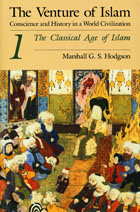 The Venture of Islam, Volume 1: The Classical Age of Islam
Marshall G. S. Hodgson
University of Chicago Press, 1974 The Venture of Islam has been honored as a magisterial work of the mind since its publication in early 1975. In this three-volume study, illustrated with charts and maps, Hodgson traces and interprets the historical development of Islamic civilization from before the birth of Muhammad to the middle of the twentieth century. This work grew out of the famous course on Islamic civilization that Hodgson created and taught for many years at the University of Chicago.
"This is a nonpareil work, not only because of its command of its subject but also because it demonstrates how, ideally, history should be written."—The New Yorker
Volume 1, The Classical Age of Islam, analyzes the world before Islam, Muhammad's challenge, and the early Muslim state between 625 and 692. Hodgson then discusses the classical civilization of the High Caliphate. The volume also contains a general introduction to the complete work and a foreword by Reuben Smith, who, as Hodgson's colleague and friend, finished the Venture of Islam after the author's death and saw it through to publication.
The Venture of Islam, Volume 2: The Expansion of Islam in the Middle Periods
Marshall G. S. Hodgson
University of Chicago Press, 1977 A sweeping work of history that the New Yorker says "demonstrates how history should be written"
The Venture of Islam has been honored as a magisterial work of the mind since its publication in early 1975. In this three-volume study, illustrated with charts and maps, Hodgson traces and interprets the historical development of Islamic civilization from before the birth of Muhammad to the middle of the twentieth century. This work grew out of the famous course on Islamic civilization that Hodgson created and taught for many years at the University of Chicago.
In the second work of this three-volume set, Hodgson investigates the establishment of an international Islamic civilization through about 1500. This includes a theoretical discussion of cultural patterning in the Islamic world and the Occident.
The Venture of Islam, Volume 3: The Gunpowder Empires and Modern Times
Marshall G. S. Hodgson
University of Chicago Press, 1977 The Venture of Islam has been honored as a magisterial work of the mind since its publication in early 1975. In this three-volume study, illustrated with charts and maps, Hodgson traces and interprets the historical development of Islamic civilization from before the birth of Muhammad to the middle of the twentieth century. This work grew out of the famous course on Islamic civilization that Hodgson created and taught for many years at the University of Chicago.
In this concluding volume of The Venture of Islam, Hodgson describes the second flowering of Islam: the Safavi, Timuri, and Ottoman empires. The final part of the volume analyzes the widespread Islamic heritage in today's world.
"This is a nonpareil work, not only because of its command of its subject but also because it demonstrates how, ideally, history should be written."—The New Yorker
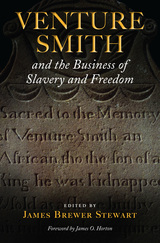 Venture Smith and the Business of Slavery and Freedom
James Brewer Stewart
University of Massachusetts Press, 2010 This book originated in the summer of 2006, in the burial ground of the First Church of Christ, Congregational, of East Haddam, Connecticut, where a team of forensic scientists began excavating the graves of two emancipated slaves, Venture Smith (d. 1805) and his wife, Marget (d. 1809). Those requesting this remarkable investigation were the Smiths' direct descendants, members of the eighth, ninth, tenth, and eleventh generations, who were determined to honor the bicentennial of their founding ancestor's death by discovering everything possible about his life. Opening burial plots in the hope of recovering DNA for genealogical tracing proved a compelling first step.
But what began as a scientific inquiry into African origins rapidly evolved into an unparalleled interdisciplinary collaboration between historians, literary analysts, geographers, genealogists, anthropologists, political philosophers, genomic biologists, and, perhaps most revealingly, a poet. Their common goal has been to reconstruct the life of an extraordinary African American and to assay its implications for the sprawling, troubled eighteenth-century world of racial exploitation over which he triumphed. This volume displays the rich results of that collaboration.
A highly intelligent, deeply self-motivated and immensely energetic slave transported from Africa, Venture Smith transformed himself through unstinting labor into a respectable Connecticut citizen, a successful entrepreneur, and the liberator of other enslaved African Americans. As James O. Horton emphasizes in his foreword to this volume, "Venture Smith's saga is a gift to all who seek to understand the complex racial beginnings of America. It helps to connect the broad American story with the stories of many Americans whose lives illustrate the national struggle to live out the national ideals."
In addition to Horton and volume editor James Brewer Stewart, contributors include Cameron Blevins, Vincent Carretta, Anna Mae Duane, Robert P. Forbes, Anne L. Hiskes, Paul Lovejoy, Marilyn Nelson, David Richardson, Chandler B. Saint, Linda Strausbaugh, Kevin Tulimieri, and John Wood Sweet.
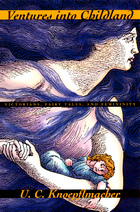 Ventures into Childland: Victorians, Fairy Tales, and Femininity
U. C. Knoepflmacher
University of Chicago Press, 1998 Behind the innocent face of Victorian fairy tales such as Through the Looking Glass or Mopsa the Fairy lurks the specter of an intense gender debate about the very nature of childhood. Offering brilliant rereadings of classics from the "Golden Age of Children's Literature" as well as literature commonly considered "grown-up," U. C. Knoepflmacher illuminates this debate, probing deeply into the relations between adults and children, adults and their own childhood selves, and the lives of beloved Victorian authors and their "children's tales." Ventures into Childland will delight and instruct all readers of children's classics, and will be essential reading for students of Victorian culture and gender studies.
"Ventures into Childland is acute, well written and stimulating. It also has a political purpose, to insist on the importance of protecting and nurturing children, imaginatively and physically."—Jan Marsh, Times Literary Supplement
"A provocative and interesting book about Victorian culture."—Library Journal
 Venturing to Do Justice: Reforming Private Law
Robert E. Keeton
Harvard University Press, 1969 Since 1958 state courts of last resort in the United States have handed down a notably larger number of overruling decisions than ever before. This distinctive record raises many questions about how and by whom law reform should be effected. Mr. Keeton examines this issue in relation to private law the branch of law concerned with the rights and duties of private individuals toward each other, enforceable through civil proceedings.
In the first part of this book, the author reviews methods of law reform. He focuses on the role of the courts and legislatures as agencies of abrupt change; the remarkable rate at which the role of the courts has grown; and the means by which courts may discharge their increased responsibility for changing private law to meet contemporary needs. He strongly urges a more active and imaginative participation in law reform by both courts and legislatures, and proposes concrete methods for achieving it.
In the second part of this book, Mr. Keeton concentrates on reform in two important areas of private law: harms caused by defective products and by traffic accidents. He considers the developing rules for strict liability, and discusses the issues of principle underlying the basic protection plan for traffic victims--a proposal, of which he is co-author, which is under consideration in a number of state legislatures.
The closing chapter treats problems stemming from the necessity of blending the old with the new when private law reform is undertaken. This discussion stresses one of the book's recurring themes: the need to balance stability and predictability of law with flexibility and reform.
The author disposes of some misconceptions about the role of public policy in a workable legal system-misconceptions that sometimes affect the attitudes and thinking not only of professionals in the field of law, but also of those who see the system from the outside.
This book contains controversial ideas that will be of interest to all who are concerned with law reform, whether professionally or as informed citizens.
Venus
Edited by D. M. Hunten, L. Colin, T. M. Donahue, and V. I. Moroz
University of Arizona Press, 1983 No serious astronomical library can be complete without it.—Journal of the British Astronomical Association
"The book contains the results of the exploration of Venus by spacecraft during the period 1962-1978. . . . The book represents an excellent review of the principal results of Venus in the period covered."—Bulletin of the Astronomical Institute of Czechoslovakia
"A wealth of new information."—Science
"Strongly recommended."—Science Books & Films
Venus and Don Juan
Carol Frost
Northwestern University Press, 1996 In her sixth book of poems, Carol Frost gives a bravura performance as metaphorist and deft artist. Her poems are an inquiry into morals and mystery: she explores love, lust, pleasure, loneliness, regret, and envy, while voicing a longing for love that cannot be sustained. Frost is a thoroughly original poet whose artistic project is unique in American poetry, and this is her best work.
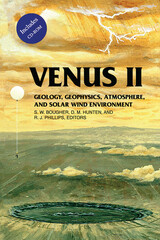 Venus II: Geology, Geophysics, Atmosphere, and Solar Wind Environment
Edited by S. W. Bougher, D. M. Hunten, and R. J. Phillips
University of Arizona Press, 1997 The final orbit of Venus by the Magellan spacecraft in October 1994 brought to a close an exciting period of Venus reconnaissance and exploration. The scientific studies resulting from data collected by the Magellan, Galileo, and Pioneer missions are unprecedented in their detail for any planet except Earth. Venus II re-evaluates initial assessments of Venus in light of these and other spacecraft missions and ground-based observations conducted over the past 30 years. More than a hundred contributors summarize our current knowledge of the planet, consider points of disagreement in interpretation, and identify priorities for future research.
Topics addressed include geology, surface processes, volcanism, tectonism, impact cratering, geodynamics, upper and lower atmospheres, and solar wind environment. The diversity of the coverage reflects the interdisciplinary nature of Venus science and the breadth of knowledge that has contributed to it. A CD-ROM developed by the Jet Propulsion Laboratory accompanies the book and incorporates text, graphics, video, software, and various digital products from selected contributors to the text. A multimedia interface allows users to navigate the text and the extensive databases included on the disk. Venus II is the most authoritative single volume available on the second planet. Its contents will not only help shape the goals of future Venus missions but will also enhance our understanding of current Mars explorations.
 "Venus in Boston" and Other Tales of Nineteenth-Century City Life
George Thompson
University of Massachusetts Press, 2002 This book reprints for the first time since the 1850s three short works by George Thompson (1823–c. 1873), one of antebellum America's most successful and prolific authors of sensational fiction. Beginning in the 1840s, he wrote stories for sporting papers like Life in Boston and New York, edited the humorous New York weekly The Broadway Belle, and contributed regularly to the sexually explicit Venus' Miscellany. He also published dozens of novels, most of which were set in Northeastern cities. His writing blends entertainment and social protest, combining commentary on such issues as urbanization, poverty, race, and class with some of the era's most shocking depictions of sex and violence.
The three works in this volume offer a rich representative sample of Thompson's writing. The two novels—Venus in Boston and City Crimes—depict the American city as a place of dark mystery, bawdy humor, and near-universal corruption peopled with con artists and criminals of all kinds. In each novel, a complex narrative structure interweaves multiple stories of exploited labor, abuse of power, seduction, intrigue, and crime. Thompson's autobiography, My Life, presents the author's life in terms nearly as lively as his fiction.
Thompson's zestful, unconventional writings fly in the face of the stereotypical view of Victorian America as straitlaced and sentimental. Ideal for use as a classroom text, this new edition includes a scholarly introduction and an extensive bibliography.
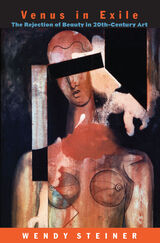 Venus in Exile: The Rejection of Beauty in Twentieth-Century Art
Wendy Steiner
University of Chicago Press, 2002 In Venus in Exile renowned cultural critic Wendy Steiner explores the twentieth century's troubled relationship with beauty. Disdained by avant-garde artists, feminists, and activists, beauty and its major symbols of art—the female subject and ornament—became modernist taboos. To this day it is hard to champion beauty in art without sounding aesthetically or politically retrograde. Steiner argues instead that the experience of beauty is a form of communication, a subject-object interchange in which finding someone or something beautiful is at the same time recognizing beauty in oneself. This idea has led artists and writers such as Marlene Dumas, Christopher Bram, and Cindy Sherman to focus on the long-ignored figure of the model, who function in art as both a subject and an object. Steiner concludes Venus in Exile on a decidedly optimistic note, demonstrating that beauty has created a new and intensely pleasurable direction for contemporary artistic practice.
Venus in Fur: A Play
David Ives
Northwestern University Press, 2012 An unsettling drama, a playful comedy, and an exploration of gender roles and sexuality, Venus in Fur is a witty, dark look at the art of acting—onstage and off. A young playwright, Thomas, has written an adaptation of the 1870 novel Venus in Fur by Leopold von Sacher-Masoch (after whom the term “masochism” was coined); the novel is the story of an obsessive adulterous relationship between a man and the mistress to whom he becomes enslaved. At the end of a long day in which the actresses Thomas auditions fail to impress him, in walks Vanda, very late and seemingly clueless, but she convinces him to give her a chance. As they perform scenes from Thomas’s play, and Vanda the actor and Vanda the character gradually take control of the audition, the lines between writer, actor, director, and character begin to blur.
 Venus Inferred
Laura Letinsky
University of Chicago Press, 2000 We are all, it is said, looking for love. But what does love look like? Does it look the way it feels? The visual vocabulary of romance-its attendant comforts and vulnerabilities, ambivalences and unclarities-is the subject of Venus Inferred. This collection of 46 richly reproduced color photographs is Laura Letinsky's study of contemporary lovers as they are seen, as they show, and as they see themselves making love and inhabiting domestic space. Entering what might be called the intimate sphere, Letinsky's camera explores a space too personal to be termed public and yet whose cultural and emotional shape is uncannily recognizable. Over a seven-year period, Letinsky visited lovers in their homes, hotel rooms, bedrooms, bathrooms, and kitchens and recorded in detail the promises, disharmonies, and disappointments that inhere in modern coupling.
Accompanying the photographs is an essay by critic Lauren Berlant, which presents an aesthetic and cultural analysis of the contemporary images of romance and intimacy. Berlant contemplates the burden of clarity that sexuality bears, implicit both in conventional romantic ideals and in the "counterpolitics of the flesh" that desires to escape them. Thus arises the sublime ordinariness of Letinsky's couples, Berlant argues: "As 'normal' pleasures themselves become deemed modes of domination, the already destabilizing aspects of sexuality can feel even more unsettling." An interview between Letinsky and Berlant unfolds the artist's intellectual formation while exploring the unsettling and pleasurable power of her images as they circulate through the domains of romance, sexuality, and contemporary culture.
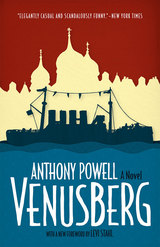 Venusberg: A Novel
Anthony Powell
University of Chicago Press, 1932 Written from a vantage point both high and deliberately narrow, the early novels of the late British master Anthony Powell nevertheless deal in the universal themes that would become a substantial part of his oeuvre: pride, greed, and the strange drivers of human behavior. More explorations of relationships and vanity than plot-driven narratives, Powell’s early works reveal the stirrings of the unequaled style, ear for dialogue, and eye for irony that would reach their caustic peak in his epic, A Dance to the Music of Time.
Powell’s sophomore novel, Venusberg, follows journalist Lushington as he leaves behind his unrequited love in England and travels by boat to an unnamed Baltic state. Awash in a marvelously odd assortment of counts and ladies navigating a multicultural, elegant, and politically precarious social scene, Lushington becomes infatuated with his very own, very foreign Venus. An action-packed literary precursor to Wes Anderson’s The Grand Budapest Hotel, Venusberg is replete with assassins and Nazis, loose countesses and misunderstandings, fatal accidents and social comedy. But beyond its humor, this early installment in Powell’s literary canon will offer readers a welcome window onto the mind of a great artist learning his craft.
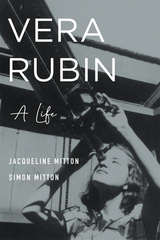 Vera Rubin: A Life
Jacqueline Mitton and Simon Mitton
Harvard University Press, 2021 A Physics Today Best Book of the Year
The first biography of a pioneering scientist who made significant contributions to our understanding of dark matter and championed the advancement of women in science.
One of the great lingering mysteries of the universe is dark matter. Scientists are not sure what it is, but most believe it’s out there, and in abundance. The astronomer who finally convinced many of them was Vera Rubin. When Rubin died in 2016, she was regarded as one of the most influential astronomers of her era. Her research on the rotation of spiral galaxies was groundbreaking, and her observations contributed significantly to the confirmation of dark matter, a most notable achievement.
In Vera Rubin: A Life, prolific science writers Jacqueline Mitton and Simon Mitton provide a detailed, accessible overview of Rubin’s work, showing how she leveraged immense curiosity, profound intelligence, and novel technologies to help transform our understanding of the cosmos. But Rubin’s impact was not limited to her contributions to scientific knowledge. She also helped to transform scientific practice by promoting the careers of women researchers. Not content to be an inspiration, Rubin was a mentor and a champion. She advocated for hiring women faculty, inviting women speakers to major conferences, and honoring women with awards that were historically the exclusive province of men.
Rubin’s papers and correspondence yield vivid insights into her life and work, as she faced down gender discrimination and met the demands of family and research throughout a long and influential career. Deftly written, with both scientific experts and general readers in mind, Vera Rubin is a portrait of a woman with insatiable curiosity about the universe who never stopped asking questions and encouraging other women to do the same.
 Verbal Art, Verbal Sign, Verbal Time
Roman JakobsonKrystyna Pomorska and Stephen Rudy, Editors
University of Minnesota Press, 1985 Verbal Art, Verbal Sign, Verbal Time was first published in 1985. Minnesota Archive Editions uses digital technology to make long-unavailable books once again accessible, and are published unaltered from the original University of Minnesota Press editions. Roman Jakobson, one of the most important thinkers of our century, was bet known for his role in the rise and spread of the structural approach to linguistics and literature. His formative structuralism approach to linguistics and literature. His formative years with the Russian Futurists and subsequent involvement in the Moscow and Prague Linguistic Circles (which he co-founded) resulted in a lifelong devotion to fundamental change in both literary theory and linguistics. In bringing each to bear upon the other, he enlivened both disciplines; if a literary work was to a him a linguistic fact, it was also a semiotic phenomenon - part of the entire universe of signs; and above all, for both language and literature, time was an integral factor, one that produced momentum and change. Jakobson's books and articles, written in many languages and published around the world, were collected in a monumental seven-volume work, Selected Writings (1962 -1984), which has been available only to a limited readership. Not long before his death in 1982, Jakobson brought together this group of eleven essays—Verbal Art, Verbal Sign, Verbal Time — to serve as an introduction to some of his linguistic theories and especially, to his work in poetics. Jakobson's introductory article and the editor's preface together suggest the range of his work and provide a context for the essays in this book, which fall into three groups. Those in the first section reflect his preoccupation with the dynamic role of time in language and society. Jakobson challenges Saussure's rigid distinction between language as a static (synchronic) system and its historical (diachronic) development - a false opposition, in his view, since it ignores the role of time in the present moment of language. The essays on time counter the notion that structuralism itself, as heir to Saussure's work, has discarded history; in Jakabson's hands, we see a struggle to integrate the two modes. In central group essays, on poetic theory, he shows how the grammatical categories of everyday speech become the expressive, highly charged language of poetry. These essays also deal with the related issues of subliminal and intentional linguistic patterns of poetry. These essays also deal with the related issues of subliminal and intentional linguistic patterns in poetry—areas that are problematic in structural analysis—and provide exemplary readings of Pushkin and Yeats. The last essays, on Mayakovsky and Holderlin, make clear that Jakobson was aware of the essential (and in these instances, tragic) bond between a poet's life and art. The book closes with essays by Linda Waugh, Krystyna Pomorska, and Igor Melchuk that provide a thoughtful perspective on Jakobson's work as a whole.
 Verbs, Bones, and Brains: Interdisciplinary Perspectives on Human Nature
Agustín Fuentes
University of Notre Dame Press, 2017 The last few decades have seen an unprecedented surge of empirical and philosophical research into the evolutionary history of Homo sapiens, the origins of the mind/brain, and human culture. This research and its popular interpretations have sparked heated debates about the nature of human beings and how knowledge about humans from the sciences and humanities should be properly understood. The goal of Verbs, Bones, and Brains: Interdisciplinary Perspectives on Human Nature is to engage these themes and present current debates, discussions, and discourse for a range of readers. The contributors bring the discussion to life with key experts outlining major concepts paired with cross-disciplinary commentaries in order to create a novel approach to thinking about, and with, human natures. The intent of the contributors to this volume is not to enter into or adjudicate complex philosophical issues of an epistemological or metaphysical nature. Instead, their common concern is to set aside the rigid distinctions between biology and culture that have made such discussions problematic. First, informing their approach is an acknowledgment of the widespread disagreement about such basic metaphysical and epistemological questions as the existence of God, the nature of scientific knowledge, and the existence of essences, among other topics. Second, they try to identify and explicate the assumptions that enter into their conceptualizations of human nature. Throughout, they emphasize the importance of seeking a convergence in our views on human nature, despite metaphysical disagreements. They caution that if convergence eludes us and a common ground cannot be found, this is itself a relevant result: it would reveal to us how deeply our questions about ourselves are connected to our basic metaphysical assumptions. Instead, their focus is on how the interdisciplinary and possibly transdisciplinary conversation can be enhanced in order to identify and develop a common ground on what constitutes human nature.
"Editors Fuentes and Visala have led their contributors in producing a benchmark collection of essays on the contemporary understanding of human nature. Their work engages very different fields of study, from biology and anthropology to theology and philosophy, yet the authors clearly convey the idea that they are dealing with a shared set of questions while making the case for this transdisciplinary approach to the problem. Engaging and accessible, the volume opens up many opportunities for further exploration." —Robin W. Lovin, Cary M. Maguire University Professor of Ethics emeritus, Southern Methodist University
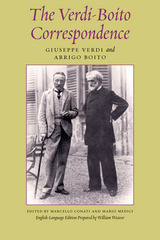 The Verdi-Boito Correspondence
Giuseppe Verdi and Arrigo Boito
University of Chicago Press, 1994 These 301 letters between Giuseppe Verdi and his last, most gifted librettist, Arrigo Boito, document an extraordinary chapter in musical history. Now available for the first time in English, this correspondence records both a unique friendship and its creative legacy.
This new edition of the landmark Carteggio Verdi/Boito is at once a valuable resource for all students, teachers, and scholars of opera and a fascinating glimpse of the daily life of European art and artists during the fertile last decades of the 19th century.
Embarking on a 20-year collaboration, Verdi and Boito produced a successful revision of Simon Boccanegra, and two new operas, Otello and Falstaff. They created what many consider to be Verdi's greatest operas, thanks both to Boito's poetry and to his handling of the composer. Here are the day-to-day tasks of creation: poet and composer debating problems of dramatic structure, words, phrases, and meters; altering dialogue as, at the same time, they converse about the wider worlds of art and music. The give and take of artistic creation is rendered fascinatingly.
This edition features a new introduction by Marcello Conati, improvements and updatings to the original edition, and an appendix of undated correspondence. William Weaver's translation is characteristically pitch-perfect; he also provides a short closing sketch of Boito's life after the death of his beloved maestro. Explanatory "linking texts" between the letters create a narrative.
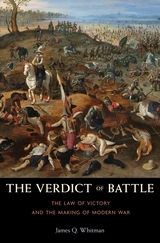 The Verdict of Battle: The Law of Victory and the Making of Modern War
James Q. Whitman
Harvard University Press, 2012 Today, war is considered a last resort for resolving disagreements. But a day of staged slaughter on the battlefield was once seen as a legitimate means of settling political disputes. James Whitman argues that pitched battle was essentially a trial with a lawful verdict. And when this contained form of battle ceased to exist, the law of victory gave way to the rule of unbridled force. The Verdict of Battle explains why the ritualized violence of the past was more effective than modern warfare in bringing carnage to an end, and why humanitarian laws that cling to a notion of war as evil have led to longer, more barbaric conflicts.
Belief that sovereigns could, by rights, wage war for profit made the eighteenth century battle’s golden age. A pitched battle was understood as a kind of legal proceeding in which both sides agreed to be bound by the result. To the victor went the spoils, including the fate of kingdoms. But with the nineteenth-century decline of monarchical legitimacy and the rise of republican sentiment, the public no longer accepted the verdict of pitched battles. Ideology rather than politics became war’s just cause. And because modern humanitarian law provided no means for declaring a victor or dispensing spoils at the end of battle, the violence of war dragged on.
The most dangerous wars, Whitman asserts in this iconoclastic tour de force, are the lawless wars we wage today to remake the world in the name of higher moral imperatives.
Verdi’s Aida: The History of an Opera in Letters and Documents
Translated by Hans Busch
University of Minnesota Press, 1978 Verdi's Aida was first published in 1978. Minnesota Archive Editions uses digital technology to make long-unavailable books once again accessible, and are published unaltered from the original University of Minnesota Press editions.
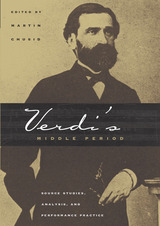 Verdi's Middle Period: Source Studies, Analysis, and Performance Practice
Edited by Martin Chusid
University of Chicago Press, 1997 During the middle phase of his career, 1849-59, Verdi adopted new compositional procedures to create some of his best-loved and most-performed works. Focusing on the operas he composed during this period, this volume explores Verdi's work from three interlinked perspectives: studies of the original source material, cross-disciplinary analyses of musical and textual issues, and the relationship of performance practice to Verdi's musical and dramatic conception.
In addition to offering new insights into such staples as Il trovatore, La traviata, and Un ballo in maschera, Verdi's Middle Period also highlights works which have only recently begun to re-enter public consciousness, such as Stiffelio, as well as lesser-known works such as Luisa Miller and Les Vêpres siciliennes. Comprising major essays by some of the best-known Verdians of our day, as well as articles from up-and-coming scholars, this volume has much to offer readers ranging from musicologists to serious opera buffs.
Contributors are Martin Chusid, Markus Engelhardt, Linda B. Fairtile, Philip Gossett, Kathleen Kuzmick Hansell, Elizabeth Hudson, James Hepokoski, Roberta Montemorra Marvin, Carlo Matteo Mossa, Roger Parker, Harold S. Powers, David Rosen, and Mary Ann Smart.
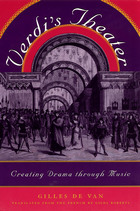 Verdi's Theater: Creating Drama through Music
Gilles de Van
University of Chicago Press, 1998 In this innovative study, Gilles de Van focuses on an often neglected aspect of Verdi's operas: their effectiveness as theater. De Van argues that two main aesthetic conceptions underlie all of Verdi's works: that of the "melodrama" and the "musical drama." In the melodrama the composer relies mainly on dramatic intensity and the rhythm linking various stages of the plot, using exemplary characters and situations. But in the musical drama reality begins to blur, the musical forms lose their excessively neat patterns, and doubt and ambiguity undermine characters and situations, reflecting the crisis of character typical of modernity.
Although melodrama tends to dominate Verdi's early work and musical drama his later, both aesthetics are woven into all his operas: musical drama is already present in Ernani (1844), and melodrama is still present in Otello (1887). Indeed, much of the interest and originality of Verdi's operas lies in his adherence to both these contradictory systems, allowing the composer/dramatist to be simultaneously classical and modern, traditionalist and innovator.
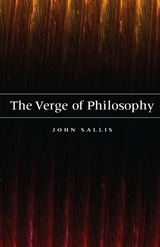 The Verge of Philosophy
John Sallis
University of Chicago Press, 2007 The Verge of Philosophy is both an exploration of the limits of philosophy and a memorial for John Sallis’s longtime friend and interlocutor Jacques Derrida. The centerpiece of the book is an extended examination of three sites in Derrida’s thought: his interpretation of Heidegger regarding the privileging of the question; his account of the Platonic figure of the good; and his interpretation of Plato’s discourse on the crucial notion of the chora, the originating space of the universe. Sallis’s reflections are given added weight—even poignancy—by his discussion of his many public and private philosophical conversations with Derrida over the decades of their friendship. This volume thus simultaneously serves to mourn and remember a friend and to push forward the deeply searching discussions that lie at the very heart of that friendship. “All of John Sallis’s work is essential, but [this book] in particular is remarkable. . . . Sallis shows better than anyone I have ever read what it means to practice philosophy on the verge.”—Walter Brogan, Villanova University
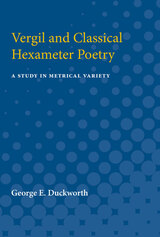 Vergil and Classical Hexameter Poetry: A Study in Metrical Variety
George E. Duckworth
University of Michigan Press, 1969 Using Vergil's Aeneid as a norm, George E. Duckworth provides an authoritative and comprehensive analysis of the metrics of Vergil and other Latin poets who composed in hexameters—from Ennius to Arator and Corippus, from the second century before Christ to the Age of Justinian.Duckworth begins by describing the various patterns of hexameter poetry and goes on to apply these statistical criteria to poems written over a period of 750 years—thus providing a history as well as an analysis of the genre. The study of metrical variety serves to reveal the influence of earlier poets on later writers and to illuminate successive developments in an individual poet's work. Comparisons support Duckworth's views on the authenticity of works of questionable authorship, and the structural approach aids in the determination of the correct chronology of works written by a specific poet. Also included are juxtapositions of Latin poets with selected Greek hexameter poets—Ennius with Homer, Catullus with Callimachus and Apollonius of Rhodes, the later Roman poets with Quintus of Smyrna and Nonnus.Like his earlier work on the structures of the Aeneid, Duckworth's new book provides material on which to base a heightened appreciation of the genius of Vergil and other Latin poets.
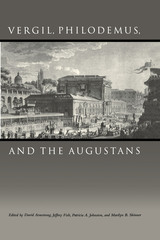 Vergil, Philodemus, and the Augustans
Edited by David Armstrong, Jeffrey Fish, Patricia A. Johnston, and Marilyn B. Skinner
University of Texas Press, 2003 The Epicurean teacher and poet Philodemus of Gadara (c. 110-c. 40/35 BC) exercised significant literary and philosophical influence on Roman writers of the Augustan Age, most notably the poets Vergil and Horace. Yet a modern appreciation for Philodemus' place in Roman intellectual history has had to wait on the decipherment of the charred remains of Philodemus' library, which was buried in Herculaneum by the eruption of Vesuvius in 79 AD. As improved texts and translations of Philodemus' writings have become available since the 1970s, scholars have taken a keen interest in his relations with leading Latin poets. The essays in this book, derived from papers presented at the First International Symposium on Philodemus, Vergil, and the Augustans held in 2000, offer a new baseline for understanding the effect of Philodemus and Epicureanism on both the thought and poetic practices of Vergil, Horace, and other Augustan writers. Sixteen leading scholars trace his influence on Vergil's early writings, the Eclogues and the Georgics, and on the Aeneid, as well as on the writings of Horace and others. The volume editors also provide a substantial introduction to Philodemus' philosophical ideas for all classicists seeking a fuller understanding of this pivotal figure.
Vergil's Aeneid and the Roman Self: Subject and Nation in Literary Discourse
Yasmin Syed
University of Michigan Press, 2005 Now in Paper! As the most widely read Roman poem in antiquity, the Aeneid was indelibly burned into the memories of generations of Roman school children. In this book, author Yasmin Syed analyzes the formative influence the poem exerted on its broad audience of educated Romans. Syed analyzes Roman pedagogy and reading practices as well as ancient beliefs about the powerful influence of poetry. Her study considers these cultural components together with the aspects of identity that define the Aeneid’s characters. By doing so, Syed shows how Vergil’s ancient audiences saw themselves—their experiences, goals, and values—reflected in the poem and guided by it. In particular, Syed’s treatment of gender and ethnicity brings to light the key role of Vergil’s poem in the formation of Romanness.
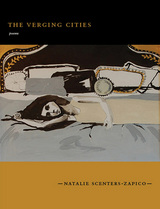 The Verging Cities
Natalie Scenters-Zapico
University Press of Colorado, 2015 From undocumented men named Angel, to angels falling from the sky, Natalie Scenters-Zapico’s gripping debut collection, The Verging Cities, is filled with explorations of immigration and marriage, narco-violence and femicide, and angels in the domestic sphere. Deeply rooted along the US-México border in the sister cities of El Paso, Texas, and Cd. Juárez, Chihuahua, these poems give a brave new voice to the ways in which international politics affect the individual. Composed in a variety of forms, from sonnet and epithalamium to endnotes and field notes, each poem distills violent stories of narcos, undocumented immigrants, border patrol agents, and the people who fall in love with each other and their traumas.
The border in Scenters-Zapico’s The Verging Cities exists in a visceral place where the real is (sur)real. In these poems mouths speak suspended from ceilings, numbered metal poles mark the border and lovers’ spines, and cities scream to each other at night through fences that “ooze only silt.” This bold new vision of border life between what has been named the safest city in the United States and the murder capital of the world is in deep conversation with other border poets—Benjamin Alire Saenz, Gloria Anzaldúa, Alberto Ríos, and Luis Alberto Urrea—while establishing itself as a new and haunting interpretation of the border as a verge, the beginning of one thing and the end of another in constant cycle.
 Verified: How to Think Straight, Get Duped Less, and Make Better Decisions about What to Believe Online
Mike Caulfield and Sam Wineburg
University of Chicago Press, 2023 An indispensable guide for telling fact from fiction on the internet—often in less than 30 seconds. The internet brings information to our fingertips almost instantly. The result is that we often jump to thinking too fast, without taking a few moments to verify the source before engaging with a claim or viral piece of media. Information literacy expert Mike Caulfield and educational researcher Sam Wineburg are here to enable us to take a moment for due diligence with this informative, approachable guide to the internet. With this illustrated tool kit, you will learn to identify red flags, get quick context, and make better use of common websites like Google and Wikipedia that can help and hinder in equal measure. This how-to guide will teach you how to use the web to verify the web, quickly and efficiently, including how to • Verify news stories and other events in as little as thirty seconds ( seriously) • Determine if the article you’re citing is by a reputable scholar or a quack • Detect the slippery tactics scammers use to make their sites look credible • Decide in a minute if that shocking video is truly shocking • Deduce who’s behind a site—even when its ownership is cleverly disguised • Uncover if that feature story is actually a piece planted by a foreign government • Use Wikipedia wisely to gain a foothold on new topics and leads for digging deeper And so much more. Building on techniques like SIFT and lateral reading, Verified will help students and anyone else looking to get a handle on the internet’s endless flood of information through quick, practical, and accessible steps. For more information, visit the website for the book.
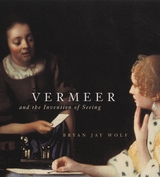 Vermeer and the Invention of Seeing
Bryan Jay Wolf
University of Chicago Press, 2001 This book begins with a single premise: that Vermeer painted images not only of extraordinary beauty, but of extraordinary strangeness. To understand that strangeness, Bryan Jay Wolf turns to the history of early modernism and to ways of seeing that first developed in the seventeenth century. In a series of provocative readings, Wolf presents Vermeer in bracing new ways, arguing for the painter's immersion in—rather than withdrawal from—the intellectual concerns of his day.
The result is a Vermeer we have not seen before: a painter whose serene spaces and calm subjects incorporate within themselves, however obliquely, the world's troubles. Vermeer abandons what his predecessors had labored so carefully to achieve: legible spaces, a world of moral clarity defined by the pressure of a hand against a table, or the scatter of light across a bare wall. Instead Vermeer complicated Dutch domestic art and invented what has puzzled and captivated his admirers ever since: the odd daubs of white pigment, scattered across the plane of the canvas; patches of blurred surface, contradicting the painting's illusionism without explanation; and the querulous silence that endows his women with secrets they dare not reveal.
This beautifully illustrated book situates Vermeer in relation to his predecessors and contemporaries, and it demonstrates how powerfully he wrestled with questions of gender, class, and representation. By rethinking Vermeer's achievement in relation to the early modern world that gave him birth, Wolf takes northern Renaissance and early modern studies in new directions.
 Vermont in the Making, 1750-1777
Matt Bushnell Jones
Harvard University Press This volume covers the formative period of Vermont history from 1750, when Governor Benning Wentworth of New Hampshire began his speculation in the lands of a province over which he had no authority, until 1777, when the settlers on the New Hampshire Grants had freed themselves from the overlordship of New York, had adopted a constitution more liberal than that of any of the older states, and had begun to function as the independent republic that ultimately became the fourteenth state of the Union. Among other matters Matt Bushnell Jones discusses the efforts of Governor John Wentworth to persuade the English government to set aside its boundary order of 1764 and put the territory of the present state of Vermont under the jurisdiction of New Hampshire; Captain Samuel Robinson's mission to London to persuade George III to confirm the New Hampshire grant; and the revolution of the Green Mountain Boys against New York under the leadership of Ethan Allen, Seth Warner, and Remember Baker in their conflicts with New York officials and their posses or with settlers and land speculators claiming lands under New York grants. Jones, from his study of the original sources, has reached conclusions that differ widely from many long-accepted opinions and has written a book of first importance to everyone interested in New England history.
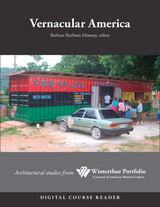 Vernacular America: Architectural Studies from Winterthur Portfolio
Edited by Barbara Burlison Mooney
University of Chicago Press, 2014 For many students, vernacular architecture represents a novel approach to the study of the built environment. Even after several decades of intellectual embrace, many professors of art and architectural history continue to find it difficult to integrate vernacular architecture into a course syllabus. Instructors face a daunting task: how can a more expansive, nuanced picture of the history of the American built environment be taught when standard textbooks continue to privilege the same monuments decade after decade without acknowledging the richness of the American architectural legacy? Vernacular America, selected from three decades of Winterthur Portfolio articles on the subject, addresses that problem by suggesting practical strategies for balancing, and perhaps even undermining, the canon of American architecture as it is taught in many college classrooms.
Many instructors of New World architectural history seek to bring broad social, ethnic, political, and technical perspectives to the study of the built environment. While they await a survey book that fully integrates academic and vernacular narratives, the articles in this course reader are intended to encourage instructors and students to incorporate a diverse and inclusive approach into the curriculum, one that continues to understand the past, but also one that pays attention to the future. The aim of this publication is to offer both instructors and students the opportunity to create and nurture a more comprehensive picture of the history of the built environment of the United States.
Barbara Burlison Mooney is associate professor of art history at the University of Iowa. Professor Mooney’s area of specialization encompasses both American architecture and African American art.
The Vernacular Garden
John Dixon Hunt
Harvard University Press, 1993 The study of vernacular gardening is a new departure for scholarly investigations of gardening practices and forms. While much has been written on the traditions of elite gardens—Villa d’Este, Versailles, Stowe, and others—little attention has been directed to the gardens of more humble and popular cultures reflecting regional, localized, ethnic, personal, or folk creations. The articles in this volume parallel developments in other areas of cultural studies and reflect a growing interest in a wider range of cultural artifacts that demonstrate how culture can profoundly influence our surroundings. These essays consider vernacular gardens, gardening, and gardening communities, including the journalism of popular homemaking, African-American communities, a “cooperative” of French market gardeners, the closed world of British Royal Naval housing, and a French mining community.
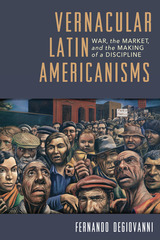 Vernacular Latin Americanisms: War, the Market, and the Making of a Discipline
Fernando Degiovanni
University of Pittsburgh Press, 2018 Winner, 2019 LASA Southern Cone Section Best Book Award
In Vernacular Latin Americanisms, Fernando Degiovanni offers a long-view perspective on the intense debates that shaped Latin American studies and still inform their function in the globalized and neoliberal university of today. By doing so he provides a reevaluation of a field whose epistemological and political status has obsessed its participants up until the present. The book focuses on the emergence of Latin Americanism as a field of critical debate and scholarly inquiry between the 1890s and the 1960s. Drawing on contemporary theory, intellectual history, and extensive archival research, Degiovanni explores in particular how the discourse and realities of war and capitalism have left an indelible mark on the formation of disciplinary perspectives on Latin American cultures in both the United States and Latin America. Questioning the premise that Latin Americanism as a discipline comes out of the tradition of continental identity developed by prominent intellectuals such as José Martí, José E. Rodó or José Vasconcelos, Degiovanni proposes that the scholars who established the discipline did not set out to defend Latin America as a place of uncontaminated spiritual values opposed to a utilitarian and materialist United States. Their mission was entirely different, even the opposite: giving a place to culture in the consolidation of alternative models of regional economic cooperation at moments of international armed conflict. For scholars theorizing Latin Americanism in market terms, this meant questioning nativist and cosmopolitan narratives about identity; it also meant abandoning any Bolivarian project of continental unity or of socialist internationalism.
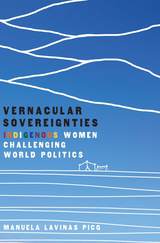 Vernacular Sovereignties: Indigenous Women Challenging World Politics
Manuela Lavinas Picq
University of Arizona Press, 2018 Indigenous women are rarely accounted for in world politics. Imagined as passive subjects at the margins of political decision-making, they often epitomize the antithesis of international relations. Yet from their positions of marginality they are shaping sovereignty.
In Vernacular Sovereignties, Manuela Lavinas Picq shows that Indigenous women have long been dynamic political actors who have partaken in international politics and have shaped state practices carrying different forms of resistance. Her research on Ecuador shows that although Kichwa women face overlapping oppressions from socioeconomic exclusions to sexual violence, they are achieving rights unparalleled in the world. They successfully advocated for women’s participation in the administration of Indigenous justice during the 2008 constitutional reform, creating the first constitution in Latin America to explicitly guarantee the rights of Indigenous women and the first constitution worldwide to require gender parity in the administration of justice.
Picq argues that Indigenous women are among the important forces reshaping states in Latin America. She offers empirical research that shows the significance of Indigenous women in international politics and the sophistication of their activism. Indigenous women strategically use international norms to shape legal authority locally, defying Western practices of authority as they build what the author calls vernacular sovereignties. Weaving feminist perspectives with Indigenous studies, this interdisciplinary work expands conceptual debates on state sovereignty.
Picq persuasively suggests that the invisibility of Indigenous women in high politics is more a consequence of our failure to recognize their agency than a result of their de facto absence. It is an invitation not merely to recognize their achievements but also to understand why they matter to world politics.
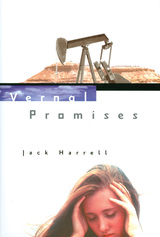 Vernal Promises
Jack Harrell
Signature Books, 2003 Jacob Dennison believes that every good thing in life comes at a cost. His wife Pam’s miscarriage confirms that. Never mind that his boss at Food World has outrageous demands; that his father, a shady oil field equipment salesman, wants to make him a man in his own image. Never mind that his new friend Dwayne, a cunning drug dealer and occultist, wants nothing less than his discipleship. Jacob is willing to push beyond their expectations. His greatest struggle will prove to be his saving grace: he can follow only one voice—the one that speaks within him and drives him to the brink of ruin and ultimately a higher price than even he had imagined.
“This is a brilliant novel, written with language that crackles. The relationships are treated with force and poignancy. The power of the story is its authenticity and the character’s compelling conversion. He begins as a boy who refuses to accept responsibility, becomes the husband who longs for freedom, and at last the man who feels God’s grace in spite of himself and the self-destructive path that has beckoned to him with a siren’s allure. This brings a voice to Mormon literature that is clearly worth honoring.” —Marilyn Brown, author of The Wine Dark Sea of Grass
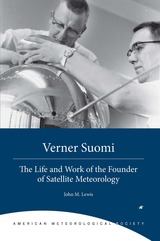 Verner Suomi: The Life and Work of the Founder of Satellite Meteorology
John M. Lewis et al.
American Meteorological Society, 2018 As the space age got underway in the wake of Sputnik, one of the earliest areas of science to take advantage of the new observational opportunities it afforded was the study of climate and weather. This book tells the story of Finnish-American educator, inventor, and scientist Verner Suomi, who, in those early days of space science, brought his pragmatic engineering skills to bear on finding ways to use our new access to space to put observational instruments into orbit. In 1959, Suomi’s work resulted in the launching of Explorer VII, a satellite that measured the earth’s radiation budget, a major step in our ability to understand and forecast weather. Drawing on personal letters and oral histories, the book presents a rounded picture of the man who launched the field of satellite meteorology—in the process changing forever the way we understand and interact with the weather around us.
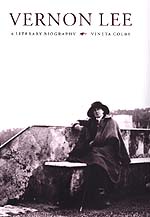 Vernon Lee: A Literary Biography
Vineta Colby
University of Virginia Press, 2003 "Vernon Lee wrote over forty books during her lifetime; she wrote in virtually every genre, and about the entire range of intellectually and morally challenging subjects that faced educated men and women of her time. She also knew everybody, spoke four languages fluently, and was a major contributor to debates on aesthetics and art at the turn of the century. Vernon Lee will be an invaluable resource to all of us who are fascinated with Lee and her life, and for any literary critic interested in the transition from the Victorian period to the modernist period."
--Martha Vicinus, University of Michigan, editor of Lesbian Subjects: A Feminist Studies Reader and Intimate Friends: Women Who Loved Women, 1778-1928
Vernon Lee, born Violet Paget in 1856 to English parents who lived on the Continent, bridged two worlds and many cultures. She was a Victorian by birth but lived into the second quarter of the twentieth century. Her chosen home was Italy, but she spent part of every year in England, where she published over the years an impressive number of books: novels, short stories, travel essays, studies of Italian art and music, psychological aesthetics, polemics. She was widely recognized as a woman of letters and moved freely in major literary and social circles, meeting and at times having close friendships with a huge number of the major writers and intellectuals of her time, among them Robert Browning, Walter Pater, Henry James, H. G. Wells, Bertrand Russell, Bernard Berenson, and Mario Praz. Although she never committed herself to one program of political activism, she was an advocate for feminism and social reform and during World War I was an ardent pacifist. In her last years she watched with dismay the emergence of fascism.
Vernon Lee: A Literary Biography recovers this crowded and intellectually eventful life from her previously unpublished letters and journals, as well as from her books themselves. Vineta Colby also explores Lee's troubled personal life, from her childhood in an eccentric expatriate family to her several unhappy love affairs with women to her frank recognition that her work, brilliant as some of it was, remained unappreciated. Through it all, Vernon Lee clung to her faith in the life of the mind, and through Colby's engaging biographical narrative, she emerges today as a writer worthy of renewed attention and admiration.
--------------------------------------------------------------------------------
Vineta Colby, Professor Emerita of English, Queens College, City University of New York, is the author of The Singular Anomaly: Women Novelists of the Nineteenth Century and Yesterday's Woman: Domestic Realism in the English Novel, and coauthor with Robert A. Colby of The Equivocal Virtue: Mrs. Oliphant and the Victorian Literary Marketplace. She is also the editor of three volumes in the World Authors series and the coeditor of European Authors: 1000-1900.
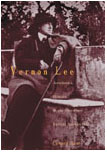 Vernon Lee: Aesthetics, History, and the Victorian Female Intellectual
Christa Zorn
Ohio University Press, 2003 The subject of renewed interest among literary and cultural scholars, Vernon Lee wrote more than forty books, in a broad range of genres, including fiction, history, aesthetics, and travel literature. Early on, Lee established her reputation as a public critic whose unconventional viewpoints stood out among those of her contemporaries. To feminist and cultural critics, she is a fascinating model of the independent female intellectual who, as Desmond MacCarthy once put it, provides a rare combination of intellectual curiosity and imaginative sensibility. A startlingly original critical study, Vernon Lee adds new dimensions to the legacy of this woman of letters whose career spans the transition from the late Victorian to the modernist period. Zorn draws on archival materials to discuss Lee’s work in terms of British aestheticism and in the context of the Western European history of ideas. Zorn contends that Lee’s fiction and nonfiction represent a literary position that bridges and surpasses both the Victorian sage and the modernist aesthetic critic. Through Professor Zorn’s approach, which combines theoretical framings of texts in terms of recent feminist and cultural criticism with passages of close reading, Vernon Lee emerges as an influential figure in late-nineteenth-century British and continental European thinking on history, art, culture, and gender.
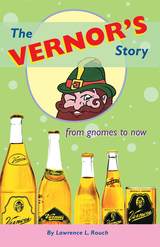 The Vernor's Story: From Gnomes to Now
Lawrence L. Rouch
University of Michigan Press, 2003 Amply illustrated, The Vernor's Story -- From Gnomes to Now captures the spirit and genius of the people who transformed Vernors into an iconic American soft drink that has spanned two centuries of shifting public taste. With over seventy photographs depicting the history of the company, The Vernor's Story is an insider's look at early operations, as well as the firm's famous marketing blitz, featuring Vernor's distinctive green and gold packaging and its engaging gnome.
Add to that the legion of devoted Vernor's fans, and the beverage itself, a unique, spicy, mysteriously flavored carbonated ginger drink that's appealed to generations of Michiganders and others alike, and you have the makings of a great American success story.
A treasure on its own and sure to be a future collectible, this is a fascinating slice of Americana for Vernor's fans everywhere.
Lawrence Rouch is President of Studio3/Innovations, a marketing and consulting firm representing fine artists in the automotive and fine-arts fields.
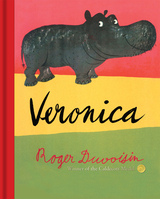 Veronica
Roger Duvoisin
Bodleian Library Publishing, 2016 Veronica is your average hippopotamus with a big dream: she wants to become famous. But with so many hippopotamuses wallowing in the cool mud and swimming and splashing in the clear water along the riverbank, it’s more difficult to stand out than one might think. So Veronica does what any determined young mammal would do: she sets off to find her fortune in the nearby pink-and-white city. If she were the only hippopotamus, everyone would surely take notice, and it would be marvelous—or would it?
Many miles from the cool, muddy riverbank, the men and women of the pink-and-white city stare at Veronica, bump into her with their cars, and shout angrily when she steps on their toes. In the city, Veronica is not only conspicuous—she is very much in the way! Mishaps befall her at every turn. While taking a curbside nap, she is issued a warning for stopping traffic. When she bathes in the public fountain, the townspeople cluck unsympathetically. At the farmers’ market, Veronica is unused to city manners and helps herself happily to an entire cart of fresh, delicious vegetables—including the paper bags. When a policeman is called to capture the hungry hippo, Veronica decides that the city is not the place for a hippopotamus. But the hustle and bustle of city life is not the only surprise to come from Veronica’s big journey. When she returns home to the riverbank, she finds her dream has come true after all. From that day forward, Veronica is famous among the hippopotamuses, who gather each day at sunset to hear about her adventures in the pink-and-white city.
Originally published in the 1960s, Veronica by Caldecott Medal–winning author and illustrator Roger Duvoisin is the most recent addition to the Bodleian Library’s newly minted children’s book imprint. For little readers with big dreams, it offers a timeless tale of the surprising places those dreams may take us.
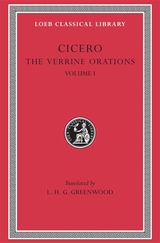 The Verrine Orations, Volume I: Against Caecilius. Against Verres, Part 1; Part 2, Books 1–2
Cicero
Harvard University Press The young statesman’s first major prosecution.
Cicero (Marcus Tullius, 106–43 BC), Roman lawyer, orator, politician, and philosopher, of whom we know more than of any other Roman, lived through the stirring era that saw the rise, dictatorship, and death of Julius Caesar in a tottering republic. In his political speeches especially and in his correspondence we see the excitement, tension and intrigue of politics and the part he played in the turmoil of the time. Of about 106 speeches, delivered before the Roman people or the Senate if they were political, before jurors if judicial, fifty-eight survive (a few of them incompletely). In the fourteenth century Petrarch and other Italian humanists discovered manuscripts containing more than 900 letters of which more than 800 were written by Cicero and nearly 100 by others to him. These afford a revelation of the man all the more striking because most were not written for publication. Six rhetorical works survive and another in fragments. Philosophical works include seven extant major compositions and a number of others; and some lost. There is also poetry, some original, some as translations from the Greek.
The Loeb Classical Library edition of Cicero is in twenty-nine volumes.
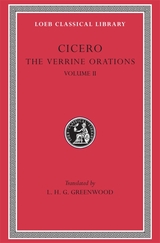 The Verrine Orations, Volume II: Against Verres, Part 2, Books 3–5
Cicero
Harvard University Press The young statesman’s first major prosecution.
Cicero (Marcus Tullius, 106–43 BC), Roman lawyer, orator, politician, and philosopher, of whom we know more than of any other Roman, lived through the stirring era that saw the rise, dictatorship, and death of Julius Caesar in a tottering republic. In his political speeches especially and in his correspondence we see the excitement, tension and intrigue of politics and the part he played in the turmoil of the time. Of about 106 speeches, delivered before the Roman people or the Senate if they were political, before jurors if judicial, fifty-eight survive (a few of them incompletely). In the fourteenth century Petrarch and other Italian humanists discovered manuscripts containing more than 900 letters of which more than 800 were written by Cicero and nearly 100 by others to him. These afford a revelation of the man all the more striking because most were not written for publication. Six rhetorical works survive and another in fragments. Philosophical works include seven extant major compositions and a number of others; and some lost. There is also poetry, some original, some as translations from the Greek.
The Loeb Classical Library edition of Cicero is in twenty-nine volumes.
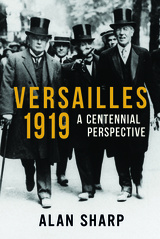 Versailles 1919: A Centennial Perspective
Alan Sharp
Haus Publishing, 2018 The Versailles Settlement, at the time of its creation a vital part of the Paris Peace Conference, suffers today from a poor reputation: despite its lofty aim to settle the world’s affairs at a stroke, it is widely considered to have paved the way for a second major global conflict within a generation. Woodrow Wilson’s controversial principle of self-determination amplified political complexities in the Balkans, and the war and its settlement bear significant responsibility for boundaries and related conflicts in today’s Middle East. After almost a century, the settlement still casts a long shadow.
Fully revised and updated for the centennial of the Conference, Versailles 1919 sets the ramifications of the Paris Peace treaties—for good or ill—within a long-term context. Alan Sharp mounts a powerful argument that the responsibility for Europe’s continuing interwar instability cannot be wholly attributed to the peacemakers of 1919–23. Concise and convincing, Versailles 1919 is a clear guide to the global legacy of the Versailles Settlement.
 Verse with Prose from Petronius to Dante: The Art and Scope of the Mixed Form
Peter Dronke
Harvard University Press, 1994 Peter Dronke illuminates a unique literary tradition: the narrative that mixes prose with verse. Highlighting a wide range of texts, he defines and explores the creative ways in which mixed forms were used in Europe from antiquity through the thirteenth century. Verse with Prose from Petronius to Dante distinguishes for the first time some of the most significant uses of mixed forms.
Dronke looks at the way prose and verse elements function in satirical works, beginning in the third century B.C. with Menippus. He examines allegorical techniques in the mixed form, giving especially rewarding attention to Boethius' Consolation of Philosophy. His lucid analysis encompasses a feast of medieval sagas and romances—ranging from Iceland to Italy—including vernacular works by Marguerite Porete in France and Mechthild in Germany. A number of the medieval Latin texts presented have remained virtually unknown, but emerge here as narratives with unusual and at times brilliant literary qualities. To enable not only specialists but all who love literature to respond to the works discussed, they are quoted in fresh translations, as well as in the originals.
Versification: A Short Introduction
James McAuley
Michigan State University Press, 1996 Versification: A Short Introduction is written by one of Australia's most distinguished poets. The book discusses poetic meter, and may be the only source you need. McAuley devotes a short chapter to versification based on accent, syllable count, free verse and "classical" meters, but the book as a whole focuses on metrical verse and its constant reference back to stress in normal speech—it suceeds in showing meterical verse as a natural outgrowth of what we do naturally. This dispels quickly any sense of the esoteric—poetry is of and for people in general not for a special literati. After establishing meter in the normal sphere of speech, McAuley then discusses how abstract meterical patterns are actually applied and how variety is added to avoid a sing-song effect.
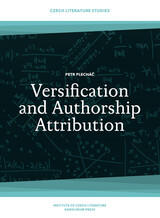 Versification and Authorship Attribution
Petr Plechác
Karolinum Press, 2022 A clever investigation into two unsolved mysteries of poetic authorship.
The technique known as contemporary stylometry uses different methods, including machine learning, to discover a poem’s author based on features like the frequencies of words and character n-grams. However, there is one potential textual fingerprint stylometry tends to ignore: versification, or the very making of language into verse. Using poetic texts in three different languages (Czech, German, and Spanish), Petr Plecháč asks whether versification features like rhythm patterns and types of rhyme can help determine authorship. He then tests his findings on two unsolved literary mysteries. In the first, Plecháč distinguishes the parts of the Elizabethan verse play The Two Noble Kinsmen written by William Shakespeare from those written by his coauthor, John Fletcher. In the second, he seeks to solve a case of suspected forgery: how authentic was a group of poems first published as the work of the nineteenth-century Russian author Gavriil Stepanovich Batenkov? This book of poetic investigation should appeal to literary sleuths the world over.
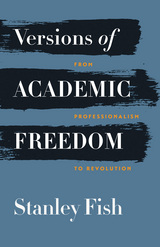 Versions of Academic Freedom: From Professionalism to Revolution
Stanley Fish
University of Chicago Press, 2014 Through his columns in the New York Times and his numerous best-selling books, Stanley Fish has established himself as our foremost public analyst of the fraught intersection of academia and politics. Here Fish for the first time turns his full attention to one of the core concepts of the contemporary academy: academic freedom.
Depending on who’s talking, academic freedom is an essential bulwark of democracy, an absurd fig leaf disguising liberal agendas, or, most often, some in-between muddle that both exaggerates its own importance and misunderstands its actual value to scholarship. Fish enters the fray with his typical clear-eyed, no-nonsense analysis. The crucial question, he says, is located in the phrase “academic freedom” itself: Do you emphasize “academic” or “freedom”? The former, he shows, suggests a limited, professional freedom, while the conception of freedom implied by the latter could expand almost infinitely. Guided by that distinction, Fish analyzes various arguments for the value of academic freedom: Is academic freedom a contribution to society's common good? Does it authorize professors to critique the status quo, both inside and outside the university? Does it license and even require the overturning of all received ideas and policies? Is it an engine of revolution? Are academics inherently different from other professionals? Or is academia just a job, and academic freedom merely a tool for doing that job?
No reader of Fish will be surprised by the deftness with which he dismantles weak arguments, corrects misconceptions, and clarifies muddy arguments. And while his conclusion—that academic freedom is simply a tool, an essential one, for doing a job—may surprise, it is unquestionably bracing. Stripping away the mystifications that obscure academic freedom allows its beneficiaries to concentrate on what they should be doing: following their intellectual interests and furthering scholarship.
 Versions of Hollywood Crime Cinema: Studies in Ford, Wilder, Coppola, Scorsese, and Others
Carl Freedman
Intellect Books, 2013 No society is without crime, prompting Nathaniel Hawthorne’s narrator to make his famous statement in The Scarlet Letter that, however high its hopes are, no civilization can fail to allot a portion of its soil as the site of a prison. Crime has also been a prevailing, common theme in films that call us to consider its construction: How do we determine what is lawful and what is criminal? And how, in turn, does this often hypocritical distinction determine society?
Film, argues Carl Freedman, is an especially fruitful medium for considering questions like these. With Versions of Hollywood Crime Cinema, he offers a series of critical readings spanning several genres. From among the mob movies, Freedman focuses on Francis Ford Coppola’s Godfather trilogy—arguably the foremost work of crime cinema—crafting a convincing argument that the plot’s action is principally driven by the shift from Sicily to America, which marks the shift to a capitalist society. Turning his attention to other genres, Freedman also looks at film noir and Westerns, in addition to films for which crime is significant but not central, from horror movies like Stanley Kubrick’s The Shining to science fiction and social realist films like The Grapes of Wrath. In recent years, television has welcomed innovative works like Boardwalk Empire, The Wire, and The Sopranos, and Freedman discusses how television’s increasingly congenial creative environment has allowed it to turn out productions whose ability to engage with these larger social questions rivals that of films from the height of cinema’s Golden Age.
 Versions of Pygmalion
J. Hillis Miller
Harvard University Press, 1990 The literary school called “deconstruction” has long been dogged by the charge that it is unprincipled, its doors closed to the larger world of moral and social concern. J. Hillis Miller, one of America’s leading teacher-critics, sets the record straight by looking into a series of fictions that allow him to show that ethics has always been at the heart of deconstructive literary criticism. Miller proves his point not by assertion but by doing—deconstruction is here in the hands of a master teacher.
Miller’s controlling image is Ovid’s Pygmalion, who made a statue that came alive and whose descendants (the incestuous Myrrha, the bloodied Adonis) then had to bear the effects of what he did. All storytellers can be seen as Pygmalions, creating characters (personification) who must then act, choose, and evaluate (what Miller calls the “ethics of narration”). If storytellers must be held accountable for what they create, then so must critics or teachers who have their own stories to tell when they write or discuss stories. If the choices are heavy, they are also, Miller wryly points out, happily unpredictable.
The teacher’s first “ethical act” is the choice of what to teach, and Miller chooses his texts boldly. As an active reader, the kind demanded by deconstruction, Miller refashions each story, another ethical act, an intervention that may have social, political, and historical consequences. He then looks beyond text and critical theory to ask whether writing literature, reading it, teaching it, or writing about it makes anything happen in the real world of material history.
Vertebrate Faunal Remains from Grasshopper Pueblo, Arizona
John W. Olsen with a foreword by John D. Speth
University of Michigan Press, 1990 Grasshopper Pueblo is a large fourteenth-century community in the forested Mogollon highlands of central Arizona. This book is an examination of the entire suite of animal remains from the site.
The Vertebrates of Arizona: With Major Section on Arizona Habitats
Edited by Charles H. Lowe
University of Arizona Press, 1964 “This compact book summarizes the distribution of all of the Recent species of vertebrates of Arizona. The introductory Part 1, “Arizona landscapes and habitats,” by Lowe, is an instructive and detailed ecological discussion of the diversified topography, climate, and flora of the state, illustrated with numerous excellent photographs.”—The Auk
“An impressive volume . . . a valuable reference for professional biologists, students, and others interested in the native fauna of Arizona and its distribution there.”—Science
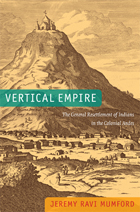 Vertical Empire: The General Resettlement of Indians in the Colonial Andes
Jeremy Ravi Mumford
Duke University Press, 2012 In 1569 the Spanish viceroy Francisco de Toledo ordered more than one million native people of the central Andes to move to newly founded Spanish-style towns called reducciones. This campaign, known as the General Resettlement of Indians, represented a turning point in the history of European colonialism: a state forcing an entire conquered society to change its way of life overnight. But while this radical restructuring destroyed certain aspects of indigenous society, Jeremy Ravi Mumford's Vertical Empire reveals the ways that it preserved others. The campaign drew on colonial ethnographic inquiries into indigenous culture and strengthened the place of native lords in colonial society. In the end, rather than destroying the web of Andean communities, the General Resettlement added another layer to indigenous culture, a culture that the Spaniards glimpsed and that Andeans defended fiercely.
Vertical Grammar of Parallelism in Biblical Hebrew
David Toshio Tsumura
SBL Press, 2023 An essential resource for sound exegesis of biblical poetry
While previous books on parallelism have focused almost exclusively on semantic classification, in his new book David Toshio Tsumura focuses on the grammatical and phonetic aspects as well. In particular, he defines and illustrates the vertical grammatical relationship between parallel lines. Readers will master how to read Biblical Hebrew poetry effectively by focusing on the basic linguistic features of word order, parallelistic structure, and rhetorical devices. For the benefit of nonspecialists, all Hebrew poems are given in accessible transliteration. This book is an indispensable companion to the Hebrew Bible for both beginners and experienced scholars.
 Vertical Integration and Joint Ventures in the Aluminum Industry
John A. Stuckey
Harvard University Press, 1983 A consultant with McKinsey & Company surveys the international aluminum industry and asks why its various activities are divided among firms in the way that they are. These components include the minding of bauxite, its refining into alumina, aluminum smelting, fabrication, and manufacture of the final product. What is it about this industry that encourages joint ventures in some cases, long-term contracts in others, and vertical integration and merger in still others?
The author identifies and analyzes the factors which motivate firms to adopt one or another of these patterns of doing business. He draws on and extends recent developments in theory relating to the operation of markets and organizations, and tests the power of theories to explain what is observed in the industry. He has assembled a great deal of empirical evidence, focusing on the United States, Japan, and Australia. The book should become the standard study of the aluminum industry.
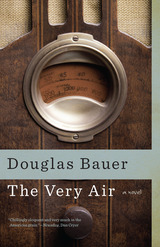 The Very Air: A Novel
Douglas Bauer
University of Iowa Press, 2014 Luther Mathias sells “snake oil” in scrubby West Texas dirt towns. He learns that substance is never a substitute for style and eventually develops his own remedies that promise to cure any ailment a man might suffer. In time, his imagination and ambition combine to mold him into medicine’s version of Elmer Gantry: loved and hated, imponderably wealthy and famous, powerful and pursued.
The Very Air is a compelling exploration of human motives and hidden meanings. It is a detailed picture of America’s myth of the rugged individual in the psychological and narrative tradition of The Great Gatsby and Citizen Kane. With a resonant sense of the period and culture, Douglas Bauer evokes the freewheeling feel of the old Southwest in the charlatans of our own era. The Very Air shows, through storytelling both exhilarating and chilling, that the past is prologue and that our personal histories indeed shape the course of our individual futures.
Very Close to Pleasure, There's a Sick Cat: And Other Poems
Shakti Chattopadhyay
Seagull Books, 2018 In the early 1960s, the Hungry Generation revitalized Bengali poetry in Calcutta, liberating it from the fetters of scholarship and the fog of punditry and freeing it to explore new forms, language, and subjects. Shakti Chattopadhyay was a cofounder of the movement, and his poems remain vibrant and surprising more than a half century later. In his “urban pastoral” lines, we encounter street colloquialisms alongside high diction, a combination that at the time was unprecedented. Loneliness, anxiety, and dislocation trouble this verse, but they are balanced by a compelling belief in the redemptive power of beauty.
This book presents more than one hundred of Chattopadhyay’s poems, introducing an international audience to one of the most prominent and important Bengali poets of the twentieth century.
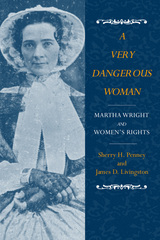 A Very Dangerous Woman: Martha Wright and Women's Rights
Sharon H. Penney
University of Massachusetts Press, 2004 A very dangerous woman is what Martha Coffin Wright's conservative neighbors considered her, because of her work in the women's rights and abolition movements. In 1848, Wright and her older sister Lucretia Mott were among the five brave women who organized the historic Seneca Falls Women's Rights Convention. Wright remained a prominent figure in the women's movement until her death in 1875 at age sixty-eight, when she was president of the National Woman Suffrage Association. At age twenty-six, she attended the 1833 founding of the American Anti-Slavery Society and later presided over numerous antislavery meetings, including two in 1861 that were disrupted by angry antiabolitionist mobs. Active in the Underground Railroad, she sheltered fugitive slaves and was a close friend and supporter of Harriet Tubman.
In telling Wright's story, the authors make good use of her lively letters to her family, friends, and colleagues, including Susan B. Anthony and Elizabeth Cady Stanton. These letters reveal Wright's engaging wit and offer an insider's view of nineteenth-century reform and family life. Her correspondence with slaveholding relatives in the South grew increasingly contentious with the approach of the Civil War. One nephew became a hero of the Confederacy with his exploits at the Battle of Fredericksburg, and her son in the Union artillery was seriously wounded at Gettysburg while repelling Pickett's Charge.
Wright's life never lacked for drama. She survived a shipwreck, spent time at a frontier fort, experienced the trauma of the deaths of a fiancé, her first husband, and three of her seven children, and navigated intense conflicts within the women's rights and abolition movements. Throughout her tumultuous career, she drew on a reservoir of humor to promote her ideas and overcome the many challenges she faced. This accessible biography, written with the general reader in mind, does justice to her remarkable life.
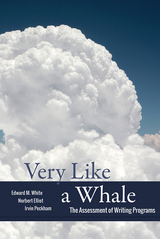 Very Like a Whale: The Assessment of Writing Programs
Edward M. White
Utah State University Press, 2015 Winner of the 2015 CPTSC Award for Excellence in Program Assessment
Written for those who design, redesign, and assess writing programs, Very Like a Whale is an intensive discussion of writing program assessment issues. Taking its title from Hamlet, the book explores the multifaceted forces that shape writing programs and the central role these programs can and should play in defining college education.
Given the new era of assessment in higher education, writing programs must provide valid evidence that they are serving students, instructors, administrators, alumni, accreditors, and policymakers. This book introduces new conceptualizations associated with assessment, making them clear and available to those in the profession of rhetoric and composition/writing studies. It also offers strategies that aid in gathering information about the relative success of a writing program in achieving its identified goals.
Philosophically and historically aligned with quantitative approaches, White, Elliot, and Peckham use case study and best-practice scholarship to demonstrate the applicability of their innovative approach, termed Design for Assessment (DFA). Well grounded in assessment theory, Very Like a Whale will be of practical use to new and seasoned writing program administrators alike, as well as to any educator involved with the accreditation process.
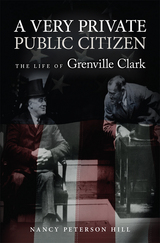 A Very Private Public Citizen: The Life of Grenville Clark
Nancy Peterson Hill
University of Missouri Press, 2016 Grenville Clark was born to wealth and privilege in Manhattan, where his maternal grandfather, LeGrand Bouton Cannon, was an industry titan, retired Civil War colonel, and personal friend of Abraham Lincoln. Clark grew up on a first-name basis with both Presidents Roosevelt, and his close friends included Supreme Court justices. He was well known and respected in the inner circles of business, government, and education. In A Very Private Public Citizen: The Life of Grenville Clark, Nancy Peterson Hill gives life to the unsung account of this great and largely anonymous American hero and reveals how the scope of Clark’s life and career reflected his selfless passion for progress, equality, and peace. As a member of the “Corporation,” Harvard’s elite governing board, Clark wrote a still-relevant treatise on academic freedom. He fought a successful public battle with his good friend President Franklin Roosevelt over FDR’s attempt to “pack” the Supreme Court in 1937. He refused pay while serving as a private advisor for the Secretary of War of the United States during the Second World War, and he worked closely with the NAACP to uphold civil rights for African Americans during the tumultuous 1950s and ‘60s. Clark devoted his last decades to a quest for world peace through limited but enforceable world law, rewriting the charter of the United Nations and traveling the globe to lobby the world’s leaders. An enthusiastic husband, father, and friend, Clark was a lawyer, civil rights activist, traveler, advisor, and world citizen at large. Memories from Clark’s family and friends weave through the book, as do Clark’s own inimitable observations on his life and the world in which he lived. A Very Private Public Citizen brings Clark out of the shadows, offering readers an inspiring example of a true patriot and humanitarian, more concerned with the well-being of his country and his fellow man than with his own fame.
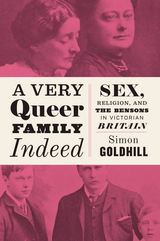 A Very Queer Family Indeed: Sex, Religion, and the Bensons in Victorian Britain
Simon Goldhill
University of Chicago Press, 2016 “We can begin with a kiss, though this will not turn out to be a love story, at least not a love story of anything like the usual kind.”
So begins A Very Queer Family Indeed, which introduces us to the extraordinary Benson family. Edward White Benson became Archbishop of Canterbury at the height of Queen Victoria’s reign, while his wife, Mary, was renowned for her wit and charm—the prime minister once wondered whether she was “the cleverest woman in England or in Europe.” The couple’s six precocious children included E. F. Benson, celebrated creator of the Mapp and Lucia novels, and Margaret Benson, the first published female Egyptologist.
What interests Simon Goldhill most, however, is what went on behind the scenes, which was even more unusual than anyone could imagine. Inveterate writers, the Benson family spun out novels, essays, and thousands of letters that open stunning new perspectives—including what it might mean for an adult to kiss and propose marriage to a twelve-year-old girl, how religion in a family could support or destroy relationships, or how the death of a child could be celebrated. No other family has left such detailed records about their most intimate moments, and in these remarkable accounts, we see how family life and a family’s understanding of itself took shape during a time when psychoanalysis, scientific and historical challenges to religion, and new ways of thinking about society were developing. This is the story of the Bensons, but it is also more than that—it is the story of how society transitioned from the high Victorian period into modernity.
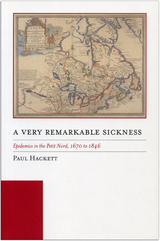 A Very Remarkable Sickness: Epidemics in the Petit Nord, 1670 to 1846
Paul Hackett
University of Manitoba Press, 2002 The area between the Great Lakes and Lake Winnipeg, bounded on the north by the Hudson Bay lowlands, is sometimes known as the "Petit Nord." Providing a link between the cities of eastern Canada and the western interior, the Petit Nord was a critical communication and transportation hub for the North American fur trade for over 200 years.Although new diseases had first arrived in the New World in the 16th century, by the end of the 17th century shorter transoceanic travel time meant that a far greater number of diseases survived the journey from Europe and were still able to infect new communities. These acute, directly transmitted infectious diseases – including smallpox, influenza, and measles – would be responsible for a monumental loss of life and would forever transform North American Aboriginal communities.Historical geographer Paul Hackett meticulously traces the diffusion of these diseases from Europe through central Canada to the West. Significant trading gatherings at Sault Ste. Marie, the trade carried throughout the Petit Nord by Hudson Bay Company ships, and the travel nexus at the Red River Settlement, all provided prime breeding ground for the introduction, incubation and transmission of acute disease. Hackettís analysis of evidence in fur-trade journals and oral history, combined with his study of the diffusion behaviour and characteristics of specific diseases, yields a comprehensive picture of where, when, and how the staggering impact of these epidemics was felt.
 The Very Rich Hours of Jacques Maritain: A Spiritual Life
Ralph McInerny
University of Notre Dame Press, 2003 The Very Rich Hours of Jacques Maritain is distinguished philosopher Ralph McInerny's hymn of praise to the spiritual and intellectual life of the great Catholic philosopher Jacques Maritain (1881-1973). The structure of this work is modeled on the medieval book of hours, making use of the daily offices, from Matins through Compline, to examine each stage of the life of Maritain and his wife, Raïssa. Through this unique blending of biography and meditation, McInerny creates a powerful portrait of the Maritains, one that reveals a model of the intellectual life as lived by Christian believers.
McInerny's authoritative work provides an interesting and accessible avenue of entry to Maritain's life and thought. Among the topics McInerny covers are Maritain's remarkable and diverse set of friends, his involvement in French politics, and the development of his views on the nature and future of democracy, the church, and Catholic intellectual life. By skillfully interweaving Maritain's philosophy with anecdotes from his life, McInerny demonstrates what distinguished Maritain as a Catholic philosopher and why he is a source of inspiration for McInerny and others of his generation.
This engagingly written book will appeal to anyone who values the thought of Jacques Maritain and the work of Ralph McInerny.
RALPH MCINERNY is Michael P. Grace Professor of Medieval Studies and director of the Jacques Maritain Center, University of Notre Dame. He is the author of numerous works in philosophy, literature, and journalism, including Characters in Search of Their Author, also published by the University of Notre Dame Press.
----------
"This is the best book about Jacques Maritain in the English language. McInerny provides a standard for Maritain scholarship." --Jude P. Dougherty, Catholic University of America
"Ralph McInerny has done a great service to the study of Maritain in producing a work that is informative, engaging, and inspiring. No one reading this book can fail to be impressed by the achievements of Maritain or be struck by how apt an author is McInerny to relate them, for he shares in the multifaceted talent of his subject. This book will be read in years to come." --John Haldane, University of St Andrews
"This marvelous portrait of Jacques Maritain demonstrates why in the 20th century he was a unique role model for intellectuals and artists throughout the world. Amidst the tumultuous events of that century, political, cultural, philosophical, Maritain kept his compass pointing to true north, on sanctity through Christ and the Church. McInerny shows why Maritain ought to remain a model for all with a similar goal now." --John P. O'Callaghan, University of Notre Dame
"McInerny delivers a luminous biography of one of Thomas Aquinas' most astute modern commentators. In narrating Maritain's life, McInerny illustrates the transforming power of truth, pursued not merely to stimulate the intellect but to redeem the soul. This nuanced portrait ... is a major work and will help secure Maritain's status as a modern Catholic icon." --Booklist
"… a beautifully made book, a joy to hold." --ChristianityToday.com
"… a delightful introduction to the life and thought of Jacques Maritain. … I cannot more highly recommend this book. No matter if one knows quite a bit or next to nothing about this influential twentieth-century Catholic philosopher, there is much that can be learned from this work." --Providence
"McInerny's spiritual and intellectual biography of Maritain and his wife, Raissa, was one of my favorite books from the past year, and I am keeping it close at hand to dip into again." --Books & Culture
"For most of us, watching a masterful artist at work is always delightful and humbling. This is the sort of conclusion I think many people will form after they put down Ralph M. McInerny's delightful monograph The Very Rich Hours of Jacques Maritain. Coming to contact with a great intellect, even at a far distance, is a joy. Being introduced to a great intellect by a masterful author, a great mind, in a personal way, is doubly enriching. In every way, this is a beautiful book." --Notre Dame Philosophical Reviews
 The Very Rich Hours of Jacques Maritain: A Spiritual Life
Ralph McInerny
University of Notre Dame Press, 2003
The Very Rich Hours of Jacques Maritain is distinguished philosopher Ralph McInerny’s hymn of praise to the spiritual and intellectual life of the great Catholic philosopher Jacques Maritain (1881–1973). The structure of this work is modeled on the medieval book of hours, making use of the daily offices, from Matins through Compline, to examine each stage of the life of Maritain and his wife, Raïssa. Through this unique blending of biography and meditation, McInerny creates a powerful portrait of the Maritains, one that reveals a model of the intellectual life as lived by Christian believers.
McInerny’s authoritative work provides an interesting and accessible avenue of entry to Maritain’s life and thought. Among the topics McInerny covers are Maritain’s remarkable and diverse set of friends, his involvement in French politics, and the development of his views on the nature and future of democracy, the church, and Catholic intellectual life. By skillfully interweaving Maritain’s philosophy with anecdotes from his life, McInerny demonstrates what distinguished Maritain as a Catholic philosopher and why he is a source of inspiration for McInerny and others of his generation.
“This is the best book about Jacques Maritain in the English language. McInerny provides a standard for Maritain scholarship.” —Jude P. Dougherty, Catholic University of America
“Ralph McInerny has done a great service to the study of Maritain in producing a work that is informative, engaging, and inspiring. No one reading this book can fail to be impressed by the achievements of Maritain or be struck by how apt an author is McInerny to relate them, for he shares in the multifaceted talent of his subject. This book will be read in years to come.” —John Haldane, University of St Andrews
“This marvelous portrait of Jacques Maritain demonstrates why in the 20th century he was a unique role model for intellectuals and artists throughout the world. Amidst the tumultuous events of that century, political, cultural, philosophical, Maritain kept his compass pointing to true north, on sanctity through Christ and the Church. McInerny shows why Maritain ought to remain a model for all with a similar goal now.” —John P. O'Callaghan, University of Notre Dame
 A Very Serious Thing: Women’s Humor and American Culture
Nancy A. Walker
University of Minnesota Press, 1988 A Very Serious Thing was first published in 1988. Minnesota Archive Editions uses digital technology to make long-unavailable books once again accessible, and are published unaltered from the original University of Minnesota Press editions. "It is a very serious thing to be a funny woman." –Frances Miriam Berry Whitcher A Very Serious Thing is the first book-length study of a part of American literature that has been consistently neglected by scholars and underrepresented in anthologies—American women's humorous writing. Nancy Walker proposes that the American humorous tradition to be redefined to include women's humor as well as men's, because, contrary to popular opinion, women do have a sense of humor. Her book draws on history, sociology, anthropology, literature, and psychology to posit that the reasons for neglect of women's humorous expression are rooted in a male-dominated culture that has officially denied women the freedom and self-confidence essential to the humorist. Rather than a study of individual writers, the book is an exploration of relationships between cultural realities—including expectations of "true womanhood"—and women's humorous response to those realities. Humorous expression, Walker maintains, is at odds with the culturally sanctioned ideal of the "lady," and much of women's humor seems to accept, while actually denying, this ideal. In fact, most of American women's humorous writing has been a feminist critique of American culture and its attitudes toward women, according to the author.
Very Small Aperture Terminals (VSATs)
John Everett
The Institution of Engineering and Technology, 1992 One of the most significant developments in telecommunications in the last decade, the very small aperture terminal (VSAT), as part of a satellite communications network, is the culmination of technology that allows earth terminals to be located on users' premises to provide data, voice and even video services. Networks based on VSATs can be established rapidly and reconfigured to respond to changing communications needs in a flexible and cost-effective manner.
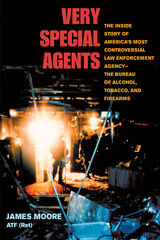 Very Special Agents: The Inside Story of America's Most Controversial Law Enforcement Agency--The Bureau of Alcohol, Tobacco, and Firearms
James Moore, ATF (Ret.)
University of Illinois Press, 1997 When James Moore joined the ATF in 1960, it was an arm of the Internal Revenue Service with one job: to catch the Mafia bootleggers whose distilleries cheated Uncle Sam of millions in tax revenue. During his twenty-five years of service, Moore saw the organization shift to enforcing of gun laws, be reborn as a separate bureau, and take on bombings and arson cases that most law officers wrote off as impossible to solve. Moore's personal, from-the-hip history spans the long-running war against dons and drug dealers and covers agents' daring infiltration of the Ku Klux Klan, Hell's Angels, and other violent groups. He reveals the cutting-edge forensics work that helped crack the World Trade Center and Oklahoma City bombings and also provides an insider account of the raid on the Branch Davidians at Waco. Finally, Moore discusses the ATF's rivalry with the FBI and the political power games that impede the government's ability to fight crime.
Very Special Episodes: Televising Industrial and Social Change
Jonathan Cohn
Rutgers University Press, 2021 Very Special Episodes examines how the quintessential “very special episode” format became a primary way in which the television industry responded to and shaped social change, cultural traumas, and industrial transformations. With essays covering shows ranging from the birth of Desi Arnaz, Jr. on I Love Lucy to contemporary examples such as a delayed episode of Black-ish and the streaming-era phenomenon of the “Very Special Seasons” of UnReal and 13 Reasons Why, this collection seriously and critically uses the “very special episode” to chart the history of American television and its self-identified status as an arbiter of culture.
 Very Special Relativity: An Illustrated Guide
Sander Bais
Harvard University Press, 2007 Einstein's Special Theory of Relativity, first published in 1905, radically changed our understanding of the world. Familiar notions of space and time and energy were turned on their head, and our struggle with Einstein's counterintuitive explanation of these concepts was under way. The task is no easier today than it was a hundred years ago, but in this book Sander Bais has found an original and uniquely effective way to convey the fundamental ideas of Einstein's Special Theory.
Bais's previous book, The Equations, was widely read and roundly praised for its clear and commonsense explanation of the math in physics. Very Special Relativity brings the same accessible approach to Einstein's theory. Using a series of easy-to-follow diagrams and employing only elementary high school geometry, Bais conducts readers through the quirks and quandaries of such fundamental concepts as simultaneity, causality, and time dilation. The diagrams also illustrate the difference between the Newtonian view, in which time was universal, and the Einsteinian, in which the speed of light is universal.
Following Bais's straightforward sequence of simple, commonsense arguments, readers can tinker with the theory and its great paradoxes and, finally, arrive at a truly deep understanding of Einstein's interpretation of space and time. An intellectual journey into the heart of the Special Theory, the book offers an intimate look at the terms and ideas that define our reality.
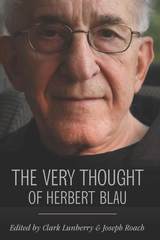 The Very Thought of Herbert Blau
Clark Lunberry and Joseph Roach, Editors
University of Michigan Press, 2018 Herbert Blau (1926–2013) was the most influential theater theorist, practitioner, and educator of his generation. He was the leading American interpreter of the works of Samuel Beckett and as a director was instrumental in introducing works of the European avant-garde to American audiences. He was also one of the most far-reaching and thoughtful American theorists of theater and performance, and author of influential books such as The Dubious Spectacle, The Audience, and Take Up the Bodies: Theater at the Vanishing Point. In The Very Thought of Herbert Blau, distinguished artists and scholars offer reflections on what made Blau's contributions so visionary, transformative, and unforgettable, and why his ideas endure in both seminar rooms and studios. The contributors, including Lee Breuer, Sue-Ellen Case, Gautam Dasgupta, Elin Diamond, S. E. Gontarski, Linda Gregerson, Martin Harries, Bill Irwin, Julia Jarcho, Anthony Kubiak, Daniel Listoe, Clark Lunberry, Bonnie Marranca, Peggy Phelan, Joseph Roach, Richard Schechner, Morton Subotnick, Julie Taymor, and Gregory Whitehead, respond to Blau's fierce and polymorphous intellect, his relentless drive and determination, and his audacity, his authority, to think, as he frequently insisted, "at the very nerve ends of thought."
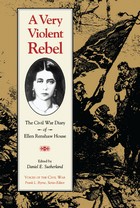 A Very Violent Rebel: The Civil War Diary of Ellen Renshaw House
Daniel E. Sutherland
University of Tennessee Press, 1996 Ellen Renshaw House was only nineteen years old in 1863 when she began a detailed journal of her experiences in Knoxville, Tennessee, amid the turmoil of the Civil War. Her diary, now published for the first time, is a remarkable document of the divided loyalties that were so pronounced in that part of the state and of the daily effects the war had on civilians.
A member of a middle-class family that had moved to Knoxville in 1860 from Georgia, Ellen House became, like her parents and siblings, a fervent Confederate—or, as she called herself, “a very violent Rebel.” When the city fell to Federal forces in September 1863, Ellen’s resentments ran deep, and she filled her diary with scornful words for the occupying Yankees. She eagerly followed the news of military actions that might mean the recapture of the city and became an eyewitness to the war’s dangers when Confederate General James Longstreet launched an ill-fated attack on Knoxville late in 1863. Despite her own privations, Ellen gave much of her time to providing relief to Confederate prisoners of war in the city. Since she made no secret of where her sympathies lay, Federal military authorities eventually suspected her of spying and expelled her to Georgia, where she continued to record her impressions and observations.
Only recently brought to light by the diarist’s descendants, this compelling personal record has been meticulously edited and annotated by Daniel Sutherland. The resulting volume adds a spirited and articulate voice to the chorus of available firsthand testimony on America’s bloodiest conflict.
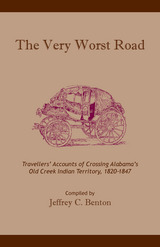 The Very Worst Road: Travellers' Accounts of Crossing Alabama's Old Creek Indian Territory, 1820-1847
Jeffrey C. Benton
University of Alabama Press, 2009 The Very Worst Road contains sixteen contemporary accounts by travelers who reached Alabama along what was known as the “Old Federal Road,” more a network of paths than a single road, that ran from Columbus and points south in Georgia for more or less due west into central Alabama and to where the confluence of the Tallapoosa and Coosa Rivers forms the Alabama River. These accounts deal candidly with the rather remarkable array of impediments that faced travelers in Alabama in its first decades as a state, and they describe with wonder, interest, and, frequently with some disgust, the road, the inns, the travelling companions, and the few and raw communities they encountered as they made their way, often with difficulty, through what seemed to many of them uncharted wilderness. The Very Worst Road was originally published by the Historic Chattahoochee Commission in 1998.
Vesna Pavlovic: Stagecraft
Vesna Pavlovic
Vanderbilt University Press, 2021 Vesna Pavlović: Stagecraft features four extensive bodies of the photographer's work, spanning from the early 2000s to today—photographs of the Yugoslav socialist modernist hotel spaces from her internationally recognized series "Hotels"; photographs of the ceremonial space of the Yugoslav Presidential Palace in Belgrade from the series "Collection/Kolekcija" and the recent "Fabrics of Socialism" and "Sites of Memory" series exploring the archives of the Museum of Yugoslav History.
The book includes critical essays that contextualize and expound on Pavlović's unique treatment of the photographic medium, in which a photographic moment is expanded to include the conditions of image making, production, documentation, and representation.
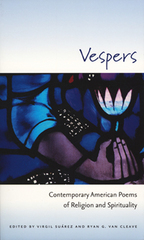 Vespers: Contemporary American Poems of Religion and Spirituality
Virgil Suarez
University of Iowa Press, 2003 At the heart of human existence lie fundamental questions that are pondered by philosophers, theologians, poets and thoughtful people from all walks of life. What is the meaning of life? Who or what is a divine being? How can a benevolent deity justify human suffering? Such questions are especially relevant to our lives in the current climate of American society. In Vespers: American Poems of Religion and Spirituality, editors Virgil Suárez and Ryan G. Van Cleave offer the reading world a timely anthology of powerful and passionate poems that cut to the heart of our contemporary theological and spiritual underpinnings. Featuring fifty of today's most respected American poets, including Pulitzer Prize winners Stephen Dunn and Carolyn Kizer, Vespers allows us to witness and understand the challenging ideas and philosophies surrounding religion and spirituality. Through these poems, we can come to a better understanding of who, what, and why we are. From deathbed spirituals to initiation songs, transformative ballads to transcendent sonnets, poets of myriad backgrounds—Native American, African American, Asian American, Latino, Protestant, Buddhist, Catholic, Jewish—echo the thoughts, concerns, and fears that linger in our souls. Their poems help us realize that we are not alone, that we're never truly alone, that even in the face of darkness the world is vibrant, beautiful, joyous. More than a creative exploration of theological concerns—Vespers is a roadmap of where we've been, where we are, and where we are heading in terms of our spiritual and religious existence. It will keep you company, good company, whatever your religious or spiritual background.
Vessel of Clay: The Inspirational Journey of Sister Carla
Jacqueline Hansen Maggiore
University of Scranton Press, 2010 Jacqueline Hansen Maggiore presents in this volume the biography of her lifelong friend Carol Piette, known throughout Chile and El Salvador as Sister Carla. Drawing from the memories of those who knew her and excerpts from her letters and diaries, Vessel of Clay chronicles Sister Carla’s extraordinary life, highlighting her dedication to the poor of Latin America but also revealing her struggles with self-doubt and emotional frailty. Vessel of Clay will appeal to both lay and religious readers interested in peace and social justice, spiritual formation and development, women’s issues, liberation theology, and mission service.
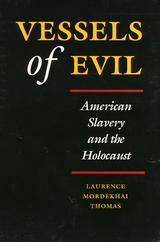 Vessels of Evil: American Slavery and the Holocaust
Laurence Mordekhai Thomas
Temple University Press, 1993 Two profound atrocities in the history of Western culture form the subject of this moving philosophical exploration: American Slavery and the Holocaust. An African American and a Jew, Laurence Mordekhai Thomas denounces efforts to place the suffering of one group above the other. Rather, he pronounces these two defining historical experiences as profoundly evil in radically different ways and points to their logically incompatible aims. The author begins with a discussion of the nature of evil, exploring the fragility of human beings and the phenomena of compartmentalizing, unquestioning obedience to authority, and moral drift. Citing compelling examples from history and contemporary life, he characterizes evil acts in terms of moral agency, magnitude, and intent. With moving testimony, Thomas depicts the moral pain of African Americans and Jews during their ordeals and describes how their past as victims has affected their future. Without invidious comparison, he distinguishes between extermination and domination, death and natal alienation, physical and mental cruelty, and between being viewed as irredeemable evil and as a moral simpleton. Thomas also considers the role of blacks and Jews in the Christian narrative. In Vessels of Evil, Thomas also considers the ways Jews and blacks have gone on to survive. He analyzes the relative flourishing of Jews and the languishing of blacks in this country and examines the implications of their dissimilar tragedies on any future relationship between these two minorities.
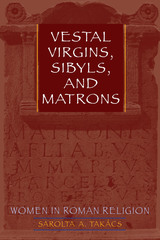 Vestal Virgins, Sibyls, and Matrons: Women in Roman Religion
By Sarolta A. Takács
University of Texas Press, 2007 Roman women were the procreators and nurturers of life, both in the domestic world of the family and in the larger sphere of the state. Although deterred from participating in most aspects of public life, women played an essential role in public religious ceremonies, taking part in rituals designed to ensure the fecundity and success of the agricultural cycle on which Roman society depended. Thus religion is a key area for understanding the contributions of women to Roman society and their importance beyond their homes and families. In this book, Sarolta A. Takács offers a sweeping overview of Roman women's roles and functions in religion and, by extension, in Rome's history and culture from the republic through the empire. She begins with the religious calendar and the various festivals in which women played a significant role. She then examines major female deities and cults, including the Sibyl, Mater Magna, Isis, and the Vestal Virgins, to show how conservative Roman society adopted and integrated Greek culture into its mythic history, artistic expressions, and religion. Takács's discussion of the Bona Dea Festival of 62 BCE and of the Bacchantes, female worshippers of the god Bacchus or Dionysus, reveals how women could also jeopardize Rome's existence by stepping out of their assigned roles. Takács's examination of the provincial female flaminate and the Matres/Matronae demonstrates how women served to bind imperial Rome and its provinces into a cohesive society.
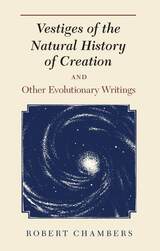 Vestiges of the Natural History of Creation and Other Evolutionary Writings
Robert Chambers
University of Chicago Press, 1994 Originally published anonymously in 1844, Vestiges proved to be as controversial as its author expected. Integrating research in the burgeoning sciences of anthropology, geology, astronomy, biology, economics, and chemistry, it was the first attempt to connect the natural sciences to a history of creation. The author, whose identity was not revealed until 1884, was Robert Chambers, a leading Scottish writer and publisher. Vestiges reached a huge popular audience and was widely read by the social and intellectual elite. It sparked debate about natural law, setting the stage for the controversy over Darwin's Origin. In response to the surrounding debate and criticism, Chambers published Explanations: A Sequel, in which he offered a reasoned defense of his ideas about natural law, castigating what he saw as the narrowness of specialist science.
With a new introduction by James Secord, a bibliography of reviews, and a new index, this volume adds to Vestiges and Explanations Chambers's earliest works on cosmology, an essay on Darwin, and an autobiographical essay, raising important issues about the changing meanings of popular science and religion and the rise of secular ideologies in Western culture.
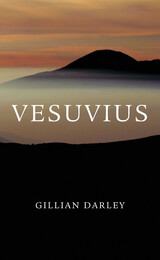 Vesuvius
Gillian Darley
Harvard University Press, 2015 Volcanoes around the world have their own legends, and many have wrought terrible devastation, but none has caught the imagination like Vesuvius. We now know that immense eruptions destroyed Bronze Age settlements around Vesuvius, but the Romans knew nothing of those disasters and were lulled into complacency—much as we are today—by its long period of inactivity. None of the nearly thirty eruptions since AD 79 has matched the infamous cataclysm that destroyed Pompeii and Herculaneum within hours. Nearly two thousand years later, the allure of the volcano remains—as evidenced by its popularity as a tourist attraction, from Shelley and the Romantics to modern-day visitors.
Vesuvius has loomed large throughout history, both feared and celebrated. Gillian Darley unveils the human responses to Vesuvius from a cast of characters as far-flung as Pliny the Younger and Andy Warhol, revealing shifts over time. This cultural and scientific meditation on a powerful natural wonder touches on pagan religious beliefs, vulcanology, and travel writing. Sifting through the ashes of Vesuvius, Darley exposes how changes in our relationship to the volcano mirror changes in our understanding of our cultural and natural environments.
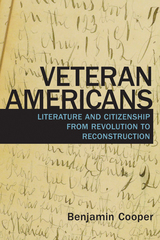 Veteran Americans: Literature and Citizenship from Revolution to Reconstruction
Benjamin Cooper
University of Massachusetts Press, 2018 "I may dare to speak, and I intend to speak and write what I think," wrote a New York volunteer serving in the Mexican War in 1848. Such sentiments of resistance and confrontation run throughout the literature produced by veteran Americans in the nineteenth century—from prisoner-of-war narratives and memoirs to periodicals, adventure pamphlets, and novels. Military men and women were active participants in early American print culture, yet they struggled against civilian prejudice about their character, against shifting collective memories that removed military experience from the nation's self-definition, and against a variety of headwinds in the uneven development of antebellum print culture.
In this new literary history of early American veterans, Benjamin Cooper reveals how soldiers and sailors from the Revolutionary War through the Civil War demanded, through their writing, that their value as American citizens and authors be recognized. Relying on an archive of largely understudied veteran authors, Cooper situates their perspective against a civilian monopoly in defining American citizenship and literature that endures to this day.
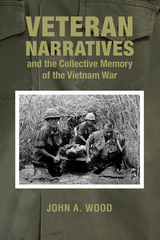 Veteran Narratives and the Collective Memory of the Vietnam War
John A. Wood
Ohio University Press, 2016 In the decades since the Vietnam War, veteran memoirs have influenced Americans’ understanding of the conflict. Yet few historians or literary scholars have scrutinized how the genre has shaped the nation’s collective memory of the war and its aftermath. Instead, veterans’ accounts are mined for colorful quotes and then dropped from public discourse; are accepted as factual sources with little attention to how memory, no matter how authentic, can diverge from events; or are not contextualized in terms of the race, gender, or class of the narrators. Veteran Narratives and the Collective Memory of the Vietnam War is a landmark study of the cultural heritage of the war in Vietnam as presented through the experience of its American participants. Crossing disciplinary borders in ways rarely attempted by historians, John A. Wood unearths truths embedded in the memoirists’ treatments of combat, the Vietnamese people, race relations in the United States military, male-female relationships in the war zone, and veterans’ postwar troubles. He also examines the publishing industry’s influence on collective memory, discussing, for example, the tendency of publishers and reviewers to privilege memoirs critical of the war. Veteran Narratives is a significant and original addition to the literature on Vietnam veterans and the conflict as a whole.
Veterans Crisis Hotline
Jon Chopan
University of Massachusetts Press, 2018 The twelve stories of Veterans Crisis Hotline offer a meditation on the relationship between war and righteousness and consider the impossible distance between who men are and who they want to be. A veteran working at the hotline listens to the stories men tell when they need someone to hear their voices, when they need to access a language for their pain. Two men search for the head of a decapitated Iraqi civilian so that they might absolve themselves of the atrocities of war, a Marine hunts for the man who raped his girlfriend, and a teenage son replaces his dead father on the battlefield. With a quick wit and offbeat humor, Jon Chopan takes us from the banks of the Euphrates to the bars and VFW halls of the Rust Belt, providing insight into the Iraq War and its enduring impact on those who volunteered to fight in it.
 Veterans Stadium: Field Of Memories
Rich Westcott
Temple University Press, 2005 Veterans Stadium was the outdoor sports and concert capital of Philadelphia from 1971 until its televised demolition in 2004. At its best, "The Vet" spawned two of the greatest moments in the city's sports history—Tug McGraw's 1980 strikeout of Willie Wilson to win the World Series and the Eagles thrashing of the Dallas Cowboys to clinch their first Super Bowl bid. At its worst, it saw fans pelt Santa Claus with snowballs and the opening of an in-stadium branch of Philadelphia municipal court to deal with rowdy Eagles fans.
Part of a look-alike generation of all-purpose stadiums erected around the country, the Vet took on its own personality over the years. For all its deficiencies, it left fans loving it in the way they loved their own families—warts and all. Almost 100 photographs and Rich Westcott's yarns make Veterans Stadium the one book that will help Philadelphians—and Philadelphia visitors—remember thirty years of their history.
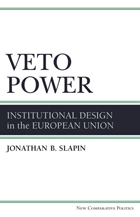 Veto Power: Institutional Design in the European Union
Jonathan B. Slapin
University of Michigan Press, 2011 "This is a terrific book. The questions that Slapin asks about intergovernmental conferences (IGCs) in the European Union are extraordinarily important and ambitious, with implications for the EU and for international cooperation more generally. Furthermore, Slapin's theorizing of his core questions is rigorous, lucid, and accessible to scholarly readers without extensive formal modeling background . . . This book is a solid, serious contribution to the literature on EU studies."
---Mark Pollack, Temple University "An excellent example of the growing literature that brings modern political science to bear on the politics of the European Union."
---Michael Laver, New York University Veto rights can be a meaningful source of power only when leaving an organization is extremely unlikely. For example, small European states have periodically wielded their veto privileges to override the preferences of their larger, more economically and militarily powerful neighbors when negotiating European Union treaties, which require the unanimous consent of all EU members. Jonathan B. Slapin traces the historical development of the veto privilege in the EU and how a veto---or veto threat---has been employed in treaty negotiations of the past two decades. As he explains, the importance of veto power in treaty negotiations is one of the features that distinguishes the EU from other international organizations in which exit and expulsion threats play a greater role. At the same time, the prominence of veto power means that bargaining in the EU looks more like bargaining in a federal system. Slapin's findings have significant ramifications for the study of international negotiations, the design of international organizations, and European integration.
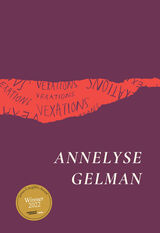 Vexations
Annelyse Gelman
University of Chicago Press, 2023 A mother and daughter journey together through a strange speculative world in this experimental book-length poem.
Annelyse Gelman’s book-length poem Vexations is a surreal, glitchy meditation on empathy, ecology, and precarity. Throughout the book winds a narrative about a mother and daughter as they move through a world of social and economic collapse in search of a post-capitalist safe haven. All the while, they also navigate a condition that affects the daughter’s empathic abilities, making her vulnerable to emotional contagion.
Vexations is titled and structured after Erik Satie’s composition of the same name, a piece that requires patience, endurance, and concentration from both its audience and its players. Similarly, Gelman’s Vexations employs repetition and variation to engage the reader’s attention. Hers is an ambient poetry, drawing on the aesthetic qualities of drone music and sampling voices and sounds to create a lush literary backdrop filled with pulsing psychedelic detail.
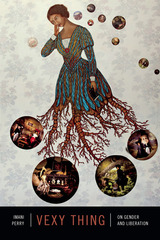 Vexy Thing: On Gender and Liberation
Imani Perry
Duke University Press, 2018 Even as feminism has become increasingly central to our ideas about institutions, relationships, and everyday life, the term used to diagnose the problem—“patriarchy”—is used so loosely that it has lost its meaning. In Vexy Thing Imani Perry resurrects patriarchy as a target of critique, recentering it to contemporary discussions of feminism through a social and literary analysis of cultural artifacts from the Enlightenment to the present. Drawing on a rich array of sources—from nineteenth-century slavery court cases and historical vignettes to writings by Toni Morrison and Audre Lorde and art by Kara Walker and Wangechi Mutu—Perry shows how the figure of the patriarch emerged as part and parcel of modernity, the nation-state, the Industrial Revolution, and globalization. She also outlines how digital media and technology, neoliberalism, and the security state continue to prop up patriarchy. By exploring the past and present of patriarchy in the world we have inherited and are building for the future, Perry exposes its mechanisms of domination as a necessary precursor to dismantling it.
VHF and UHF Antennas
R.A. Burberry
The Institution of Engineering and Technology, 1992 This book describes VHF and UHF antennas for the range 30-3000 MHz developed over the last 50 years. Many designs that have not previously been described in detail are covered. The author's long, practical experience is shown in numerous examples of new uses for old designs.
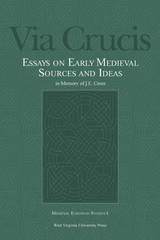 VIA CRUCIS: ESSAYS ON EARLY MEDIEVAL SOURCES AND IDEAS
THOMAS N. HALL
West Virginia University Press, 2002 This book originated as a series of papers delivered at a Symposium on Irish and Anglo-Saxon Literary Culture in Honor of J. E. Cross, held in conjunction with the 30th International Congress on Medieval Studies at Kalamazoo in May 1996. The purpose of that symposium was to bring together a number of friends and admirers of Professor Cross to celebrate his remarkably rich career as a scholar of Old English and Insular Latin literature; Anglo-Saxon manuscripts; and medieval sermons, saints’ lives, and apocrypha. Just over a decade earlier, a group of colleagues had honored Professor Cross with a Festschrift published as a special volume of Leeds Studies in English, but in the years since that collection appeared, Professor Cross had managed to launch into the most productive period of his entire career, producing over thirty new articles and books since 1984, including his ground-breaking monograph on the Pembroke 25 homiliary, a facsimile edition of the Copenhagen Wulfstan manuscript for the series Early English Manuscripts in Facsimile, a book on the Gospel of Nicodemus and Vindicta Salvatoris apocrypha from the St Omer 202 homiliary, and an edition and translation of Archbishop Wulfstan’s canon laws. Surely these achievements were worthy of fresh recognition, we reasoned, and a small cohort of Professor Cross’s friends accordingly began conspiring to host a symposium in his honor with an eye toward producing a second Festschrift. Kalamazoo was the logical site for this event. Professor Cross had frequented the Medieval Congress at Kalamazoo for as long as any of us could remember, had chaired and presented in numerous sessions, and was a plenary speaker in 1990. It was also at Kalamazoo that Professor Cross initiated discussions of a plan to revise and update J. D. A. Ogilvy’s Books Known to the English, 597-1066, an ambitious project that has since given rise to two large collaborative ventures to which many Anglo-Saxonists around the world now contribute: Fontes Anglo-Saxonici and Sources of Anglo-Saxon Literary Culture. Kalamazoo was thus a perfect match for Professor Cross, and with the kind indulgence of the Medieval Congress program committee, we proceeded to organize five sessions for the 1996 meeting on Irish and Anglo-Saxon studies as a tribute to Professor Cross’s work in these areas. The timing, as it turned out, proved meaningful: Professor Cross died unexpectedly the following December, just seven months after the symposium, and the Kalamazoo conference was consequently the last opportunity most of us had to see him.
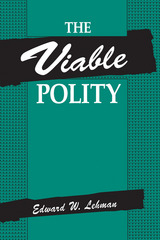 Viable Polity
Edward Lehman
Temple University Press, 1992 "A well-written, intelligent discussion of an important issue."
--Edward Portis, Texas A&M University
Viewing the rapid changes in our political landscape, Edward W. Lehman observes that understanding political processes has become increasingly critical, and he suggests new criteria for evaluating the interaction of state and society. The Viable Polity challenges the customary ways that political successes and failures have been treated. Lehman concentrates on the fundamental assumptions needed to assess a democratic system's viability and explores the legitimation-crisis paradigm, insisting that we must move beyond its hollow rhetoric.
Lehman then begins the conscious building of the viability paradigm. He contends that political viability must be judged along three interdependent dimensions: a state's capacity to pursue its goals effectively; the polity's ability to elicit citizen participation efficiently; and the possible legitimacy of prevailing political game rules.
Armed with this framework, the author delves into three pivotal anomalies of modern democratic life. First, he considers how enhancing capacities in one sector can actually undermine the overall effectiveness of the state as well as foster inefficient involvement and erode legitimacy. Second, he examines the apparent contradiction implicit in the coexistence of extensive public apathy and widespread moralistic participation in democratic polities. Third, he investigates the circumstances that presently permit high political legitimacy to co-exist with growing distrust of government leaders. Finally, Lehman contrasts the impediments to viability that are unique to the American political system with those that are more widely shared by liberal democracies.
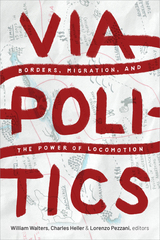 Viapolitics: Borders, Migration, and the Power of Locomotion
William Walters, Charles Heller, and Lorenzo Pezzani, editors
Duke University Press, 2021 Vehicles, their infrastructures, and the environments they traverse are fundamental to the movement of migrants and states' attempts to govern them. This volume's contributors use the concept of viapolitics to name and foreground this contested entanglement and examine the politics of migration and bordering across a range of sites. They show how these elements constitute a key site of knowledge and struggle in migratory processes and offer a privileged vantage point from which to interrogate practices of mobility and systems of control in their deeper histories and wider geographic connections. This transdisciplinary group of scholars explores a set of empirically rich and diverse cases: from the Spanish and European authorities' attempts to control migrants' entire trajectories to infrastructures of escort of Indonesian labor migrants; from deportation train cars in the 1920s United States to contemporary stowaways at sea; from illegalized migrants walking across treacherous Alpine mountain passes to aerial geographies of deportation. Throughout, Viapolitics interrogates anew the phenomenon called “migration,” questioning how different forms of contentious mobility are experienced, policed, and contested.
Contributors. Ethan Blue, Maribel Casas-Cortes, Julie Y. Chu, Sebastian Cobarrubias, Glenda Garelli, Charles Heller, Sabine Hess, Bernd Kasparek, Clara Lecadet, Johan Lindquist, Renisa Mawani, Lorenzo Pezzani, Ranabir Samaddar, Amaha Senu, Martina Tazzioli, William Walters
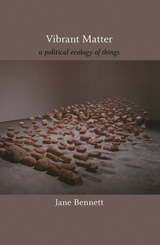 Vibrant Matter: A Political Ecology of Things
Jane Bennett
Duke University Press, 2010 In Vibrant Matter the political theorist Jane Bennett, renowned for her work on nature, ethics, and affect, shifts her focus from the human experience of things to things themselves. Bennett argues that political theory needs to do a better job of recognizing the active participation of nonhuman forces in events. Toward that end, she theorizes a “vital materiality” that runs through and across bodies, both human and nonhuman. Bennett explores how political analyses of public events might change were we to acknowledge that agency always emerges as the effect of ad hoc configurations of human and nonhuman forces. She suggests that recognizing that agency is distributed this way, and is not solely the province of humans, might spur the cultivation of a more responsible, ecologically sound politics: a politics less devoted to blaming and condemning individuals than to discerning the web of forces affecting situations and events. Bennett examines the political and theoretical implications of vital materialism through extended discussions of commonplace things and physical phenomena including stem cells, fish oils, electricity, metal, and trash. She reflects on the vital power of material formations such as landfills, which generate lively streams of chemicals, and omega-3 fatty acids, which can transform brain chemistry and mood. Along the way, she engages with the concepts and claims of Spinoza, Nietzsche, Thoreau, Darwin, Adorno, and Deleuze, disclosing a long history of thinking about vibrant matter in Western philosophy, including attempts by Kant, Bergson, and the embryologist Hans Driesch to name the “vital force” inherent in material forms. Bennett concludes by sketching the contours of a “green materialist” ecophilosophy.
 Vibrant Mosaic: A Deaf Sociologist Explores Issues Impacting Deaf and Hard of Hearing People
John B. Christiansen
Gallaudet University Press, 2025 In Vibrant Mosaic, John B. Christiansen examines a variety of topics that are relevant to deaf and hard of hearing people through the lens of a deaf sociologist. The book explores the arts and sports, the intersections of various cultures within Deaf communities, work and rehabilitation, advocacy, telecommunications and technology, and the Deaf President Now protest. Written in a conversational tone, each chapter is thoughtfully framed by a narrative vignette, illustrating the lived experiences of individuals and serving as a gateway to a broader discussion. Christiansen invites readers to engage with the rich history and contributions of deaf and hard of hearing people and shows how they have shaped their communities and transformed broader societal structures. Vibrant Mosaic is a celebration of a dynamic, multifaceted mosaic and its enduring impact on the human experience.
 Vibrational Communication in Animals
Peggy S. M. Hill
Harvard University Press, 2008 In creatures as different as crickets and scorpions, mole rats and elephants, there exists an overlooked channel of communication: signals transmitted as vibrations through a solid substrate. Peggy Hill summarizes a generation of groundbreaking work by scientists around the world on this long understudied form of animal communication.
Beginning in the 1970s, Hill explains, powerful computers and listening devices allowed scientists to record and interpret vibrational signals. Whether the medium is the sunbaked savannah or the stem of a plant, vibrations can be passed along from an animal to a potential mate, or intercepted by a predator on the prowl. Vibration appears to be an ancient means of communication, widespread in both invertebrate and vertebrate taxa. Hill synthesizes in this book a flowering of research, field studies documenting vibrational signals in the wild, and the laboratory experiments that answered such questions as what adaptations allowed animals to send and receive signals, how they use signals in different contexts, and how vibration as a channel might have evolved.
Vibrational Communication in Animals promises to become a foundational text for the next generation of researchers putting an ear to the ground.
Vibrator Nation: How Feminist Sex-Toy Stores Changed the Business of Pleasure
Lynn Comella
Duke University Press, 2017 In the 1970s a group of pioneering feminist entrepreneurs launched a movement that ultimately changed the way sex was talked about, had, and enjoyed. Boldly reimagining who sex shops were for and the kinds of spaces they could be, these entrepreneurs opened sex-toy stores like Eve’s Garden, Good Vibrations, and Babeland not just as commercial enterprises, but to provide educational and community resources as well. In Vibrator Nation Lynn Comella tells the fascinating history of how these stores raised sexual consciousness, redefined the adult industry, and changed women's lives. Comella describes a world where sex-positive retailers double as social activists, where products are framed as tools of liberation, and where consumers are willing to pay for the promise of better living—one conversation, vibrator, and orgasm at a time.
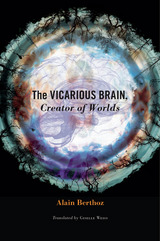 The Vicarious Brain, Creator of Worlds
Alain Berthoz
Harvard University Press, 2017 Groping around a familiar room in the dark, or learning to read again after a traumatic brain injury; navigating a virtual landscape through an avatar, or envisioning a scene through the eyes of a character—all of these are expressions of one fundamental property of life, Alain Berthoz argues. They are instances of vicariance, when the brain sidesteps an impasse by substituting one process or function for another. In The Vicarious Brain, Creator of Worlds, Berthoz shows that this capacity is the foundation of the human ability to think creatively and function in a complex world.
Vicariance is often associated with proxies and delegates, but it also refers to a biological process in which a healthy organ takes over for a defective counterpart. Berthoz, a neuroscientist, approaches vicariance through neuronal networks, asking how, for example, a blind person can develop a heightened sense of touch. He also describes how our brains model physical reality and how we use these models to understand things that are foreign to us. Forging across disciplinary boundaries, he explores notions of the vicarious in paleontology, ethology, art, literature, and psychology.
Through an absorbing examination of numerous facets of vicariance, Berthoz reveals its impact on an individual’s daily decision making and, more broadly, on the brain’s creation of worlds. As our personal and social lives are transformed by virtual realities, it is more crucial than ever before that we understand vicariance within our increasingly complex environment, and as an aspect of our own multiplying identities.
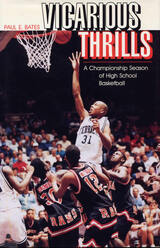 Vicarious Thrills: A Championship Season of High School Basketball
Paul E. Bates
Southern Illinois University Press, 1995
This engaging book chronicles the Carbondale Terriers’ 1993–94 season, a season in which the team progressed all the way to the state high school basketball championship game before ending the season with a one-point loss.
Although arranged chronologically, the book is much more than a team diary. Paul E. Bates, whose son was one of the team’s starting guards, brings his sensitivity and expertise as an educational psychologist to bear on team sports in general and on how they define and are defined by the players and coaches that make up the teams and by the communities in which they thrive.
Bates frames the team’s experience by sharing his own personal love of basketball, beginning with his childhood years in Decatur, Illinois, when Stephen Decatur High School was a perennial Illinois high school powerhouse. Through his exploration of the sport and his involvement and interest in it, Bates creates a book that serves both as a rousing tale of youthful achievement and as a history of high school basketball in the state of Illinois.
Throughout his account, Bates repeatedly emphasizes his belief that extraordinary accomplishment is no accident but rather the result of years of preparation, dedication, and hard work. Most of the key performers on the 1993–94 Terriers, for example, had played together on a grade school all-star team that was undefeated. Then, in junior high, this group went on to win numerous championships, and in high school their remarkable success continued, even though their accomplishments were humbled by season-ending losses.
But Vicarious Thrills leads the reader through a very personal account of both the ups and downs of championship basketball. Triumph does not occur without defeat, and it is through defeat that the team members, as well as their families and other supporters, learn many important lessons. As significant as the individual and team accomplishments are in making up this story, the 1993–94 basketball season is more importantly a beginning rather than the defining moment in the lives of these young men.
As an inspiration and motivation to young people, and as a spark to memories of childhood aspirations for older readers, this book is a pleasure to read for individuals of all ages.
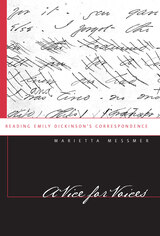 A Vice for Voices: Reading Emily Dickinson's Correspondence
Marietta Messmer
University of Massachusetts Press, 2009 Despite her reputation as a reclusive poet, Emily Dickinson wrote more than one thousand "letters to the world," engaging in lively epistolary conversations with close to one hundred correspondents. Although these letters have found many avid readers since they were first published in 1894, they have often been viewed as mere background materials or vehicles for the writer's poems. This study offers a reevaluation of their status within Dickinson's canon, arguing for "correspondence" (rather than "poetry") as her central form of expression.
Concentrating on Dickinson's exchanges with childhood friends, as well as with Susan Gilbert Dickinson, Elizabeth Holland, Austin Dickinson, Thomas Wentworth Higginson, and the mysterious "Master," Marietta Messmer explores the poet's gradual shift from writing confessional letters to developing her unique "vice for voices" by creating fictionalized epistolary personae. While radically challenging nineteenth-century letter-writing conventions, these personae also subvert the narrowly circumscribed roles available to women at that time. Messmer shows how Dickinson used this double-voiced mode of correspondence to manipulate and interrogate a variety of male-dominated, "authorized" literary, religious, and sociocultural discourses.
 The Vice of Luxury: Economic Excess in a Consumer Age
David Cloutier
Georgetown University Press, 2015 Luxury. The word alone conjures up visions of attractive, desirable lifestyle choices, yet luxury also faces criticism as a moral vice harmful to both the self and society. Engaging ideas from business, marketing, and economics, The Vice of Luxury takes on the challenging task of naming how much is too much in today's consumer-oriented society. David Cloutier’s critique goes to the heart of a fundamental contradiction. Though overconsumption and materialism make us uneasy, they also seem inevitable in advanced economies. Current studies of economic ethics focus on the structural problems of poverty, of international trade, of workers' rights—but rarely, if ever, do such studies speak directly to the excesses of the wealthy, including the middle classes of advanced economies. Cloutier proposes a new approach to economic ethics that focuses attention on our everyday economic choices. He shows why luxury is a problem, explains how to identify what counts as the vice of luxury today, and develops an ethic of consumption that is grounded in Christian moral convictions.
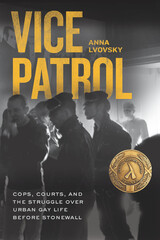 Vice Patrol: Cops, Courts, and the Struggle over Urban Gay Life before Stonewall
Anna Lvovsky
University of Chicago Press, 2021 In the mid-twentieth century, gay life flourished in American cities even as the state repression of queer communities reached its peak. Liquor investigators infiltrated and shut down gay-friendly bars. Plainclothes decoys enticed men in parks and clubs. Vice officers surveilled public bathrooms through peepholes and two-way mirrors.
In Vice Patrol, Anna Lvovsky chronicles this painful story, tracing the tactics used to criminalize, profile, and suppress gay life from the 1930s through the 1960s, and the surprising controversies those tactics often inspired in court. Lvovsky shows that the vice squads’ campaigns stood at the center of live debates about not only the law’s treatment of queer people, but also the limits of ethical policing, the authority of experts, and the nature of sexual difference itself—debates that had often unexpected effects on the gay community’s rights and freedoms. Examining those battles, Vice Patrol enriches understandings of the regulation of queer life in the twentieth century and disputes about police power that continue today.
 Vice Patrol: Cops, Courts, and the Struggle over Urban Gay Life before Stonewall
Anna Lvovsky
University of Chicago Press, 2021 This is an auto-narrated audiobook version of this book.
In the mid-twentieth century, gay life flourished in American cities even as the state repression of queer communities reached its peak. Liquor investigators infiltrated and shut down gay-friendly bars. Plainclothes decoys enticed men in parks and clubs. Vice officers surveilled public bathrooms through peepholes and two-way mirrors.
In Vice Patrol, Anna Lvovsky chronicles this painful story, tracing the tactics used to criminalize, profile, and suppress gay life from the 1930s through the 1960s, and the surprising controversies those tactics often inspired in court. Lvovsky shows that the vice squads’ campaigns stood at the center of live debates about not only the law’s treatment of queer people, but also the limits of ethical policing, the authority of experts, and the nature of sexual difference itself—debates that had often unexpected effects on the gay community’s rights and freedoms. Examining those battles, Vice Patrol enriches understandings of the regulation of queer life in the twentieth century and disputes about police power that continue today.
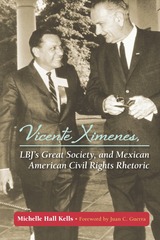 Vicente Ximenes, LBJ's Great Society, and Mexican American Civil Rights Rhetoric
Michelle Hall Kells, with a foreword by Juan C. Guerra
Southern Illinois University Press, 2018 Beginning as a grassroots organizer in the 1950s, Vicente Ximenes was at the forefront of the movement for Mexican American civil rights through three presidential administrations, joining Lyndon B. Johnson’s Great Society and later emerging as one of the highest-ranking appointees in Johnson’s administration. Ximenes succeeded largely because he could adapt his rhetoric for different audiences in his speeches and writings. Michelle Hall Kells elucidates Ximenes’s achievements through a rhetorical history of his career as an activist.
Kells draws on Ximenes’s extensive archive of speeches, reports, articles, and oral interviews to present the activist’s rhetorical history. After a discussion of Ximenes’s early life, the author focuses on his career as an activist, examining Ximenes’s leadership in several key civil rights events, including the historic 1967 White House Cabinet Committee Hearings on Mexican American Affairs. Also highlighted is his role in advancing Mexican Americans and Latinos from social marginalization to greater representation in national politics.
This book shows us a remarkable man who dedicated the majority of his life to public service, using rhetoric to mobilize activists for change to secure civil rights advances for his fellow Mexican Americans.
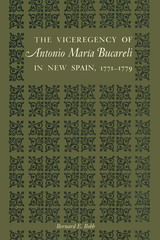 The Viceregency of Antonio María Bucareli in New Spain, 1771–1779
By Bernard E. Bobb
University of Texas Press, 1962 When Antonio María Bucareli took up his duties in 1771 as the forty-sixth viceroy of New Spain, he assumed command of a magnificent complexity of land areas, large and small, whose people constituted a cultural and social entity ranging from the traditional Apache to the European gentleman of the Enlightenment. He governed a key area at a significant time. Shortly before Bucareli's arrival in Mexico, José de Gálvez had completed an intensive inspection of the country, had instituted many reforms, and was ready to present the new viceroy with progressive policies for administrative reorganization. How Bucareli, a loyal, indefatigable Spanish aristocrat, reacted to the new order is the particular concern of this book. It examines the actions and reflections of this cautious and conservative man as they relate to certain major problems of his administration: defense, the colonization of the Californias, mining, the Roman Catholic Church, the interior provinces, and—above all—filling Spanish coffers with Mexican pesos as resurgent Spain strove to regain her former position in world affairs. The period of Bucareli's viceregency is seen as a transitional one, during which the seeds of the Enlightenment, of change, even of rebellion, were sown but had not yet begun to sprout. Bucareli, conservative by nature and training, continued to administer New Spain on the basis of a well-established and traditional system, although he supported changes of mere modification or those offering greater efficiency. Evidence of his dual success is the fact that revenues climbed steadily during his tenure and that Charles III was exceptionally pleased with his performance, while at the same time he won from people of all stations a degree of respect and affection far beyond that usually accorded to a viceroy. Prior to the publication of Bucareli, only two other full-scale studies of Spanish viceroys existed, and both of them were concerned with sixteenth-century officials. The appearance of this book, providing at once a study of an important figure and of the system of viceregal administration as it had developed by the latter part of the eighteenth century, filled a long-existing gap in Latin American literature. The heart of this study comes from the prodigious correspondence that passed between the Viceroy and Madrid. Authority for most statements was found in the thousands of documents that the author perused in the Archivo General de Indies in Seville and in the Archivo General de la Nación in Mexico City.
Vices, Virtues, and Consequences: Essays in Moral and Political Philosophy
Peter Simpson
Catholic University of America Press, 2019 Vices, Virtues, and Consequences offers a broad study of the basic and universal issues in ethics and politics, the issues of what the human good is and how to attain it and avoid its opposite. These questions have long been debated and are no less debated today. However, according to author Peter Phillips Simpson, within the mainstream of Anglo-American modern philosophy they have been debated too narrowly. This narrowness is one of our modern vices, and it does much to encourage other vices, in particular that of despair of universal and objective reason. The essays in this collection not only attack these vices, but also attempt to replace them with the contrary virtues.
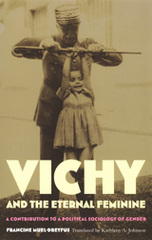 Vichy and the Eternal Feminine: A Contribution to a Political Sociology of Gender
Francine Muel-Dreyfus
Duke University Press, 2001 In this nuanced history of occupied France, Francine Muel-Dreyfus presents a powerful examination of the political and social construction of gender under the Vichy regime. Arguing that the regime used symbolic violence to reshape a liberal culture once based on individual rights into one of deference to hierarchical authority, Muel-Dreyfus shows how Vichy invoked theories of “natural” gender inequality and “eternal” opposition between the masculine and the feminine to justify women’s legal and social subordination, and how these ideologies were incorporated into the French woman’s sense of self. Drawing on an extensive body of legislative, religious, educational, medical, and literary texts, Muel-Dreyfus examines how the Vichy regime brutally resurrected the gender politics that had been rejected during France’s social struggles in the 1930s. Strikingly, she reveals how this resurrection in turn fed into racial politics: childless women, for instance, and those who had abortions were construed—like Jews—as threats to France’s racial “purity.” With its atendant patterns of social inclusion and exclusion that were deeply rooted in the political and cultural history of the Third Republic, Muel-Dreyfus claims, a pervasive range of gendered metaphors helped to structure the very laws and policies of the Vichy regime. The French language edition of this book was published in 1996 to wide acclaim. Contributing to theories about the role of gender in political philosophy, to the cultural anthropology of symbolic representation, and to our understanding of the history of fascism, Vichy and the Eternal Feminine will appeal to French, European, and twentieth-century historians; students and scholars of gender and racial studies; political scientists; and anthropologists.
The Vichy Syndrome: History and Memory in France since 1944
Henry Rousso
Harvard University Press, 1991 From the Liberation purges to the Barbie trial, France has struggled with the memory of the Vichy experience: a memory of defeat, occupation, and repression. In this provocative study, Henry Rousso examines how this proud nation—a nation where reality and myth commingle to confound understanding—has dealt with les années noires. Specifically, he studies what the French have chosen to remember—and to conceal.
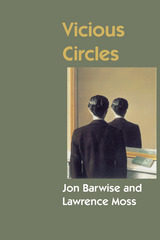 Vicious Circles
Jon Barwise and Lawrence S. Moss
CSLI, 1996 The subject of non-wellfounded sets came to prominence with the 1988 publication of Peter Aczel's book on the subject. Since then, a number of researchers in widely differing fields have used non-wellfounded sets (also called "hypersets") in modeling many types of circular phenomena. The application areas range from knowledge representation and theoretical economics to the semantics of natural language and programming languages.
Vicious Circles offers an introduction to this fascinating and timely topic. Written as a book to learn from, theoretical points are always illustrated by examples from the applications and by exercises whose solutions are also presented. The text is suitable for use in a classroom, seminar, or for individual study.
In addition to presenting the basic material on hypersets and their applications, this volume thoroughly develops the mathematics behind solving systems of set equations, greatest fixed points, coinduction, and corecursion. Much of this material has not appeared before. The application chapters also contain new material on modal logic and new explorations of paradoxes from semantics and game theory.
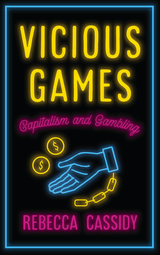 Vicious Games: Capitalism and Gambling
Rebecca Cassidy
Pluto Press, 2020 Gambling is everywhere, on our TVs and phones, on billboards on our streets, and emblazoned across the chests of idolised sports stars. Why has gambling suddenly expanded? How was it transformed from a criminal activity to a respectable business run by multinational corporations listed on international stock markets? And who are the winners and losers created by this transformation?
Vicious Games is based on field research with the people who produce, shape and consume gambling. Rebecca Cassidy explores the gambling industry's affinity with capitalism and the free market and how the UK has led the way in exporting 'light touch' regulation and 'responsible gambling' around the world. She reveals how the industry extracts wealth from some of our poorest communities, and examines the adverse health effects on those battling gambling addiction.
The gambling industry has become increasingly profitable and influential, emboldened by thirty years of supportive government policies and boosted by unnatural profits. Through an anthropological excavation, Vicious Games opens up this process, with the intention of creating alternative, more equitable futures.
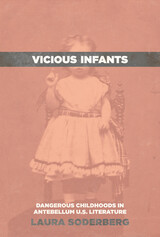 Vicious Infants: Dangerous Childhoods in Antebellum U.S. Literature
Laura Soderberg
University of Massachusetts Press, 2021 Childhood as scholars often recognize it—innocent, vulnerable, and above all, precious—is anchored in the cultural imagination of the early nineteenth-century United States, when an attitude of child worship drove sentimental politics and literature. But, not all childhoods were defined by love, education, and nurture. Singled out by nineteenth-century legal and medical establishments, children already marginalized by slavery, ethnicity, and poverty were increasingly branded as incorrigible, delinquent, and antisocial.
Vicious Infants offers a counterhistory of literary childhood as both perceived social threat and site of resistance, revealing that many children were not only cut off from family and society, they were also preemptively excluded from the rewards of citizenship and adulthood. Turning to prison documents, medical journals, overlooked periodical fiction, and literary works from William Apess, Harriet Wilson, Herman Melville, Susan Paul, and Harriet Beecher Stowe, Laura Soderberg recovers alternate narratives of childhood and provides an important window into the cultural links between race, reproduction, and childhood in the antebellum period.
 Vicissitudes: Histories and Destinies of Psychoanalysis
Edited by Naomi Segal and Sharon Kivland
University of London Press, 2012 The legacy of Italy's experience of political violence and terrorism in the anni di piombo ('years of lead', c. 1969-83) continues to exercise the Italian imagination to an extraordinary degree. Cinema has played a particularly prominent role in articulating the ongoing impact of the anni di piombo and in defining the ways in which Italians remember and work through the atrocities and traumas of those years. Terrorism, Italian Style brings together some of the most important scholars contributing to the study of cinematic representations of the anni di piombo. Drawing on a comparative approach and a broad range of critical perspectives (including genre theory, family and gender issues, trauma theory and ethics), the book addresses an extensive range of films produced between the 1970s and the present and articulates their significance and relevance to contemporary Italian society and culture. Ruth Glynn is Senior Lecturer in Italian at the University of Bristol.Giancarlo Lombardi is Professor of Italian Literature at the City University of New York. Alan O'Leary is Senior Lecturer in Italian at the University of Leeds.
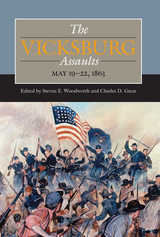 The Vicksburg Assaults, May 19-22, 1863
Edited by Steven E. Woodworth and Charles D. Grear
Southern Illinois University Press, 2019 After a series of victories through Mississippi early in the spring of 1863, General Ulysses S. Grant’s Army of the Tennessee had reached the critical point in its campaign to capture Vicksburg. Taking the city on the hill would allow the Union to control the Mississippi River and would divide the Confederacy in half. Confederate morale was low, and a Union victory in the war appeared close before the start of Grant’s assault against General John C. Pemberton’s Army of Mississippi.
But due to difficult terrain, strong defenses, and uncoordinated movements, the quick triumph Grant desired was unattainable. On the afternoon of May 19, with little rest, preparation, or reconnaissance, Union forces charged the Confederate lines only to be repulsed. A respite between the assaults allowed both sides to reinforce their positions. Early on May 22 the Union artillery sought to soften the stronghold’s defenses before the general attack, but despite the Union forces’ preparation, the fighting proved even more disorganized and vicious. Again Grant failed to move Pemberton. Not wanting to risk more soldiers in a third attack, Grant conceded to the necessity of laying siege. Confederate morale climbed as the Southerners realized they had held their ground against an overwhelming force.
Editors Steven E. Woodworth and Charles D. Grear have assembled five captivating essays that examine Grant’s unsuccessful assaults against Confederate defensive lines around Vicksburg. Ranging from military to social history, the essays further historical debates on prominent topics, such as the reactions of Midwesterners to the first failures of Grant’s Vicksburg campaign. Two essays from opposing sides analyze the controversial decisions surrounding the Railroad Redoubt, the site of the bloodiest fighting on May 22. Another investigates how the tenacity of Texan reinforcements forced Union soldiers to abandon their gains.
Peppered with first-hand observations and bolstered by an impressive depth of research, this anthology is an invitingly written account and comprehensive assessment. By zeroing in on the two assaults, the contributors offer essential clarity and understanding of these important events within the larger scope of the Civil War’s Vicksburg Campaign.
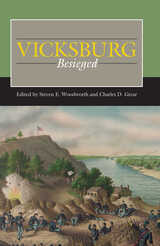 Vicksburg Besieged
Edited by Steven E. Woodworth and Charles D. Grear
Southern Illinois University Press, 2020 A detailed analysis of the end of the Vicksburg Campaign and the forty-day siege
Vicksburg, Mississippi, held strong through a bitter, hard-fought, months-long Civil War campaign, but General Ulysses S. Grant’s forty-day siege ended the stalemate and, on July 4, 1863, destroyed Confederate control of the Mississippi River. In the first anthology to examine the Vicksburg Campaign’s final phase, nine prominent historians and emerging scholars provide in-depth analysis of previously unexamined aspects of the historic siege.
Ranging in scope from military to social history, the contributors’ invitingly written essays examine the role of Grant’s staff, the critical contributions of African American troops to the Union Army of the Tennessee, both sides’ use of sharpshooters and soldiers’ opinions about them, unusual nighttime activities between the Union siege lines and Confederate defensive positions, the use of West Point siege theory and the ingenuity of Midwestern soldiers in mining tunnels under the city’s defenses, the horrific experiences of civilians trapped in Vicksburg, the Louisiana soldier's defense of Jackson amid the strains of piano music, and the effect of the campaign on Confederate soldiers from the Trans-Mississippi region.
The contributors explore how the Confederate Army of Mississippi and residents of Vicksburg faced food and supply shortages as well as constant danger from Union cannons and sharpshooters. Rebel troops under the leadership of General John C. Pemberton sought to stave off the Union soldiers, and though their morale plummeted, the besieged soldiers held their ground until starvation set in. Their surrender meant that Grant’s forces succeeded in splitting in half the Confederate States of America.
Editors Steven E. Woodworth and Charles D. Grear, along with their contributors—Andrew S. Bledsoe, John J. Gaines, Martin J. Hershock, Richard H. Holloway, Justin S. Solonick, Scott L. Stabler, and Jonathan M. Steplyk—give a rare glimpse into the often overlooked operations at the end of the most important campaign of the Civil War.
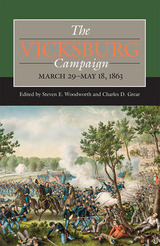 The Vicksburg Campaign, March 29–May 18, 1863
Edited by Steven E. Woodworth and Charles D. Grear
Southern Illinois University Press, 2013 Ulysses S. Grant’s ingenious campaign to capture the last Confederate stronghold on the Mississippi River was one of the most decisive events of the Civil War and one of the most storied military expeditions in American history. The ultimate victory at Vicksburg effectively cut the Confederacy in two, gave control of the river to Union forces, and delivered a devastating blow from which the South never fully recovered. Editors Steven E. Woodworth and Charles D. Grear have assembled essays by prominent and emerging scholars, who contribute astute analysis of this famous campaign’s most crucial elements and colorful personalities. Encompassed in this first of five planned volumes on the Vicksburg campaign are examinations of the pivotal events that comprised the campaign’s maneuver stage, from March to May of 1863. The collection sheds new light on Grant’s formidable intelligence network of former slaves, Mississippi loyalists, and Union spies; his now legendary operations to deceive and confuse his Confederate counterparts; and his maneuvers from the perspective of classic warfare. Also presented are insightful accounts of Grant’s contentious relationship with John A. McClernand during the campaign; interactions between hostile Confederate civilians and Union army troops; and the planning behind such battles as Grierson’s Raid, Port Gibson, Raymond, Jackson, Champion Hill, and Big Black River Bridge.
 Vico Genealogist Of Modernity
Robert C. Miner
University of Notre Dame Press, 2002 In this lucid and probing study, Robert C. Miner argues that Giambattista Vico (1668–1744) was the architect of a subversive, genealogical approach to modernity. Miner documents the genesis of Vico’s stance toward modernity in the first phase of his thought. Through close examination of his early writings, centering on Vico’s critique of Descartes and his elaboration of the ‘verum-factum’ principle, Vico, Genealogist of Modernity reveals that Vico strives to acknowledge the technical advances of modernity while unmasking its origins in human pride.
Miner’s careful analysis of the often neglected Universal Law shows how Vico uses Augustine to articulate a new conception of natural law that mediates between the idealism of Plato and Aristotle and the realism of Tacitus and Machiavelli. Vico emerges as a penetrating reader of traditional philosophy and philology, as well as a radical pioneer of modern historical consciousness.
Miner also traces important connections between Vico’s magnum opus, the New Science, and his earlier writings, arguing that the New Science is not merely a work of scientific history. Miner contends that this work is more fundamentally a genealogy that enacts Nietzsche’s desire to treat etymology and language as signposts for understanding the development of moral concepts. Miner shows how Vico’s genealogy attempts to disclose hidden continuities between the culture of secular modernity and the pagan institutions of idolatry, divination, and sacrifice.
Throughout this engaging work, Miner portrays Vico’s genealogy as expressly Augustinian and Catholic, yet sufficiently complex to resist assimilation to reactionary anti-modernism. According to Miner, the goal of Vico’s genealogy is to encompass the best of ancient and medieval traditions within an “encyclopedic” fusion of history and philosophy that is both modern and Christian. Although Vico sees the “age of man” as moving toward the “barbarism of reflection,” his trust in divine providence saves him from nihilistic despair. Miner concludes that Vico’s thought not only anticipates later efforts to infuse philosophy with historical consciousness, but also contains the seeds of a coherent alternative to the program of postmodern genealogy.
 Vico's New Science of the Intersubjective World
Vittorio Hösle
University of Notre Dame Press, 2016 Among the classics of the history of philosophy, the Scienza nuova (New Science) by Giambattista Vico (1668–1744) was largely neglected and generally misunderstood during the author's lifetime. From the nineteenth century onwards Vico’s views found a wider audience, and today his influence is widespread in the humanities and social sciences. The New Science is often taught in courses at colleges and universities, both in philosophy and Italian departments and in general humanities courses. Despite the excellent English translations of this enigmatic book and numerous studies in English of Vico, many sections of the work remain challenging to the modern reader. Vico's New Science of the Intersubjective World offers both an in-depth analysis of all the important ideas of the book as well as an evaluation of their contribution to our present understanding of the social world. In the first chapter, Vittorio Hösle examines Vico’s life, sources, and writings. The second and third chapters discuss the concerns and problems of the Scienza nuova. The fourth chapter traces the broader history of Vico’s reception. Hösle facilitates the understanding of many passages in the work as well as the overarching structure of its claims, which are often dispersed over many sections. Hösle reformulates Vico’s vision in such a way that it is not only of historical interest but may inspire ongoing debates about the nature of the humanities and social sciences as well as many other issues on which Vico sheds light, from the relation of poetry and poetics to the development of law. This book will prepare students and scholars for a precise study of the Scienza nuova, equipping them with the necessary categories and context and familiarizing them with the most important problems in the critical debate on Vico's philosophy.
The Victim and its Masks: An Essay on Sacrifice and Masquerade in the Maghreb
Abdellah Hammoudi
University of Chicago Press, 1993 Each year, in a solemn Sunni Muslim feast, the Ait Mizane of southern Morocco reenact the story of Abraham as a ritual sacrifice, a symbolic observance of their submission to the divine. After this sober ceremony comes a bacchanalian masquerade which seems to violate every principle the sacrifice affirmed. Because of the apparent contradiction between sacrifice and masquerade, observers have described the two as entirely separate events. This book reunites them as a single ritual process within Islamic tradition.
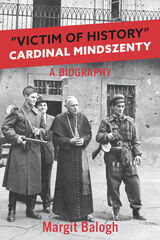 Victim of History: Cardinal Mindszenty, a biography
Margit Balogh
Catholic University of America Press, 2022 “Victim of history,” “a martyr from behind the Iron Curtain,” “the Hungarian Gandhi” – these are just some of the epithets which people used to describe Cardinal Mindszenty, archbishop of Esztergom, who was the last Hungarian prelate to use the title of prince primate. Today, Mindszenty has been forgotten in most countries except for Hungary, but when he died in 1975, he was known all over the world as a symbol of the struggle of the Catholic Church against communism.
Cardinal Mindszenty held the post of archbishop of Esztergom from 1945 until 1974, but during this period of almost three decades he served barely four years in office. The political police arrested him on December 26, 1948, and the Budapest People’s Court subsequently sentenced him to life imprisonment. Based on the Stalinist practice of show trials, one of the accusations against Mindszenty, referring to his legitimist leanings, was his alleged attempt to re-establish Habsburg rule in Hungary. He regained freedom during the 1956 revolution but only for a few days. He was granted refuge by the US Embassy in Budapest between November 4, 1956 –September 28, 1971. In the fifteen years he spent at the American embassy enormous changes took place in the world while his personality remained frozen into the past. When in 1971 Pope Paul VI received the Hungarian foreign minister, he called Mindszenty “the victim of history”. His last years were spent free at last, but far away from his homeland. In Hungary, the Catholic believers eagerly await his beatification.
Victim of the Muses: Poet as Scapegoat, Warrior and Hero in Greco-Roman and Indo-European Myth and History
Todd Merlin Compton
Harvard University Press, 2006 This book probes the narratives of poets who are exiled, tried or executed for their satire. Aesop, fabulist and riddle warrior, is assimilated to the pharmakos—the wretched human scapegoat who is expelled from the city or killed in response to a crisis—after satirizing the Delphians.
In much the same way, Dumezil's Indo-European heroes, Starkathr and Suibhne, are both warrior-poets persecuted by patron deities. This book views the scapegoat as a group's dominant warrior, sent out to confront predators or besieging forces. Both poets and warriors specialize in madness and aggression, are necessary to society, yet dangerous to society.
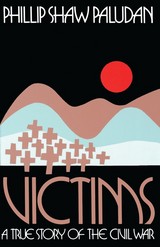 Victims: A True Story Of The Civil War
Phillip Shaw Paludan
University of Tennessee Press, 2004 "Phillip Paludan has combined the findings of the social sciences with an exercise in la petite histoire to create an intriguing study. From his base point, the massacre of thirteen Unionist mountaineers at Shelton Laurel, North Carolina, the author expands the investigation to embrace larger issues, such as the impact of the Civil War on small communities, the causation and characteristics of guerrilla warfare, and the focus underlying human perversity." —Civil War History
". . . the definitive history of the Shelton Laurel Massacre, but more important it is a pathbreaking study of a principal theater of the guerrilla aspect of the Civil War. Paludan has succeeded admirably in rooting a historically neglected topic in the lives of ordinary people."—Frank L. Byrne, American Historical Review
"The questions Paludan asks about Shelton Laurel in 1863 are appropriate to My Lai in 1968 and Auschwitz in 1944. Victims is not only a good book; it is also an important book. And it is a profoundly disturbing book."—Emory M. Thomas, Georgia Historical Quarterly
"Outwardly a superb analysis of the impact of war and war-time atrocity on the life of a remote mountain community, this slim volume harbors far-reaching implications for the study of class conflict and the modernization process in the Appalachian region."—Ron Eller, Appalachian Journal
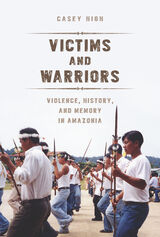 Victims and Warriors: Violence, History, and Memory in Amazonia
Casey High
University of Illinois Press, 2015 In 1956, a group of Waorani men killed five North American missionaries in Ecuador. The event cemented the Waorani's reputation as ""wild Amazonian Indians"" in the eyes of the outside world. It also added to the myth of the violent Amazon created by colonial writers and still found in academia and the state development agendas across the region. Victims and Warriors examines contemporary violence in the context of political and economic processes that transcend local events. Casey High explores how popular imagery of Amazonian violence has become part of Waorani social memory in oral histories, folklore performances, and indigenous political activism. As Amazonian forms of social memory merge with constructions of masculinity and other intercultural processes, the Waorani absorb missionaries, oil development, and logging depredations into their legacy of revenge killings and narratives of victimhood. High shows that these memories of past violence form sites of negotiation and cultural innovation, and thus violence comes to constitute a central part of Amazonian sociality, identity, and memory.
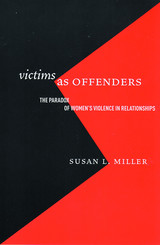 Victims as Offenders: The Paradox of Women's Violence in Relationships
Miller, Susan L.
Rutgers University Press, 2005 Arrests of women for assault increased more than 40 percent over the past decade, while male arrests for this offense have fallen by about one percent. Some studies report that for the first time ever the rate of reported intimate partner abuse among men and women is nearly equal. Susan L. Miller’s timely book explores the important questions raised by these startling statistics. Are women finally closing the gender gap on violence? Or does this phenomenon reflect a backlash shaped by men who batter? How do abusive men use the criminal justice system to increase control over their wives? Do police, courts, and treatment providers support aggressive arrest policies for women? Are these women “victims” or “offenders”? In answering these questions, Miller draws on extensive data from a study of police behavior in the field, interviews with criminal justice professionals and social service providers, and participant observation of female offender programs. She offers a critical analysis of the theoretical assumptions framing the study of violence and provides insight into the often contradictory implications of the mandatory and pro-arrest policies enacted in the 1980s and 1990s. Miller argues that these enforcement strategies, designed to protect women, have often victimized women in different ways. Without sensationalizing, Miller unveils a reality that looks very different from what current statistics on domestic violence imply.
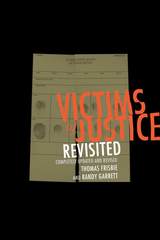 Victims of Justice Revisited: Completely Updated and Revised
Thomas Frisbie and Randy Garrett
Northwestern University Press, 2005 Perhaps no legal case has done more to reshape America's debate over the death penalty than Illinois's prosecution and conviction of Rolando Cruz. This updated and significantly expanded edition of Victims of Justice tells the pivotal story of Cruz and his two co-defendants after the 1983 murder of ten-year-old Jeanine Nicarico of Naperville, Illinois. The book follows the story from the day the crime occurred to the groundbreaking trial of seven law officers accused of conspiring to deny Cruz a fair trial.
The kidnapping of Jeanine Nicarico from her quiet suburban home and her brutal slaying sparked a public demand for justice. But the longer authorities strove to execute Cruz and the two other men, the more evidence emerged that the defendants were innocent-and that the death penalty process in America itself was deeply flawed.
Here is the start of a chain reaction that led to a moratorium on the death penalty in Illinois and the clearing out of Death Row, as Illinois Governor George Ryan-worried about unfairness in death penalty convictions-granted clemency to all those awaiting execution. This is a detailed study of a nationally known case that should be cited whenever serious scholars examine how capital cases are prosecuted in America. Here is the most thorough investigation yet published into the background of the man who-after Cruz already was on Death Row-claimed to be the real killer.
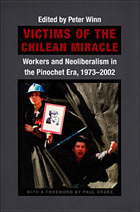 Victims of the Chilean Miracle: Workers and Neoliberalism in the Pinochet Era, 1973–2002
Peter Winn, ed.
Duke University Press, 2004 Chile was the first major Latin American nation to carry out a complete neoliberal transformation. Its policies—encouraging foreign investment, privatizing public sector companies and services, lowering trade barriers, reducing the size of the state, and embracing the market as a regulator of both the economy and society—produced an economic boom that some have hailed as a “miracle” to be emulated by other Latin American countries. But how have Chile’s millions of workers, whose hard labor and long hours have made the miracle possible, fared under this program? Through empirically grounded historical case studies, this volume examines the human underside of the Chilean economy over the past three decades, delineating the harsh inequities that persist in spite of growth, low inflation, and some decrease in poverty and unemployment. Implemented in the 1970s at the point of the bayonet and in the shadow of the torture chamber, the neoliberal policies of Augusto Pinochet’s dictatorship reversed many of the gains in wages, benefits, and working conditions that Chile’s workers had won during decades of struggle and triggered a severe economic crisis. Later refined and softened, Pinochet’s neoliberal model began, finally, to promote economic growth in the mid-1980s, and it was maintained by the center-left governments that followed the restoration of democracy in 1990. Yet, despite significant increases in worker productivity, real wages stagnated, the expected restoration of labor rights faltered, and gaps in income distribution continued to widen. To shed light on this history and these ongoing problems, the contributors look at industries long part of the Chilean economy—including textiles and copper—and industries that have expanded more recently—including fishing, forestry, and agriculture. They not only show how neoliberalism has affected Chile’s labor force in general but also how it has damaged the environment and imposed special burdens on women. Painting a sobering picture of the two Chiles—one increasingly rich, the other still mired in poverty—these essays suggest that the Chilean miracle may not be as miraculous as it seems.
Contributors.
Paul Drake
Volker Frank
Thomas Klubock
Rachel Schurman
Joel Stillerman
Heidi Tinsman
Peter Winn
Victims or Villains: Jewish Images in Classic English Detective Fiction
Malcolm J. Turnbull
University of Wisconsin Press, 1998 Portrayed as dubious moneylenders, underworld operatives, megalomaniacs, Bolshevik saboteurs, or unscrupulous war-profiteers, Jewish characters have surfaced in English detective fiction from the very beginning. Starting with Conan Doyle, and focusing on the Golden Age of the genre, Tunrbull uses multiple examples to trace the evolution of Jewish caricature in British crime writing, and examines fictional representations of Jews in relation to burgeoning antisemitic sentiment within British society. Attention is paid to crime writers as wide-ranging as Baroness Orczy, Sydney Horler, R. Austin Freeman, Ngaio Marsh, and S. T. Haymon, and the depiction of Jews by Golden Age giants Dorothy L. Sayers, Agatha Christie, and Anthony Berkeley Cox.
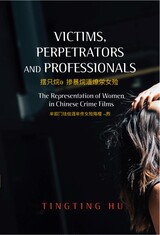 Victims, Perpetrators and Professionals: The Representation of Women in Chinese Crime Films
Tingting Hu
Sussex Academic Press, 2022 Victims, Perpetrators and Professionals; examines the representation of women in relation to violence in Chinese crime films made on the mainland, and in Hong Kong and Taiwan. It introduces a new trajectory in the investigation of the cinematic representation of female figures in relation to gender issues by interweaving Western feminist and postfeminist critiques with traditional Chinese sociocultural discourse. An in-depth narrative identifies three major representations of women: the female victim, the female perpetrator of violence, and the female professional. Salience to contemporary society shows up in many ways, passive and active, all of which reinforce a sense of male dominance and patriarchal power. Analysis bridges the gap in the field of female representation in Chinese culture/Chinese film studies by systematically examining Chinese crime films as a genre in its own right. The depiction of female victimisation at the hands of men in the selected crime films consolidates the notion of women's vulnerability and inferiority as perceived in Chinese gender discourse. On the other hand, the representation of active female perpetrators of violence, and as professional working women, presents what may be seen as a postfeminist masquerade—a cultural strategy that shows an ostensible impression of female empowerment albeit that it reinforces traditional gender hierarchies in the Chinese gender context. While graphic female victimisation is commonly presented, female perpetrators of violence and females in professional roles in crime films are shown to remain under the control of male authority, leading to the conclusion that Chinese crime films are produced in a context of heavy patriarchal power and misogyny.
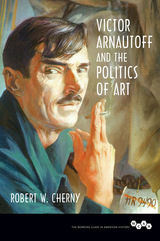 Victor Arnautoff and the Politics of Art
Robert W. Cherny
University of Illinois Press, 2017 Victor Arnautoff reigned as San Francisco's leading mural painter during the New Deal era. Yet that was only part of an astonishing life journey from Tsarist officer to leftist painter. Robert W. Cherny's masterful biography of Arnautoff braids the artist's work with his increasingly leftist politics and the tenor of his times. Delving into sources on Russian émigrés and San Francisco's arts communities, Cherny traces Arnautoff's life from refugee art student and assistant to Diego Rivera to prominence in the New Deal's art projects and a faculty position at Stanford University. As Arnautoff's politics moved left, he often incorporated working people and people of color into his treatment of the American past and present. In the 1950s, however, his participation in leftist organizations and a highly critical cartoon of Richard Nixon landed him before the House Un-American Activities Committee and led to calls for his dismissal from Stanford. Arnautoff eventually departed America, a refugee of another kind, now fleeing personal loss and the disintegration of the left-labor culture that had nurtured him, before resuming his artistic career in the Soviet Union that he had fought in his youth to destroy.
Victor Hugo and the Visionary Novel
Victor Brombert
Harvard University Press, 1984 Victor Brombert reassesses in a modern perspective the power and originality of Hugo’s work, and provides a new interpretation of Hugo’s narrative art as well as a synthesis of his poetic and moral vision. The twenty-eight drawings by Hugo reproduced in this book are further testimony to the visionary nature of Hugo’s imagination.
 Victoria County History of Cumbria: Kirkoswald and Renwick
Richard Brockington and with Sarah Rose
University of London Press, 2019 Kirkoswald and Renwick is the first parish history to be produced by the Cumbria County History Trust in collaboration with Lancaster University for the Victoria County History of Cumbria. Covering 30 square miles of agricultural land and moorland, the modern civil parish of Kirkoswald lies between the river Eden and the Pennine heights, on the western edge of the North Pennine Area of Outstanding Natural Beauty. Kirkoswald township, anciently a market and small industrial centre, lies nine miles north east of Penrith. Until 1566 Kirkoswald Castle was the principal seat of the powerful Barons Dacre of the North whose massive landholdings extended over six counties. In 1523 Lord Thomas Dacre translated St Oswald’s church, a pre-conquest foundation for which the village is named, to collegiate status, and after the Reformation the college became a gentleman's residence, acquired in 1611 by the Fetherstonhaugh family whose home it still is after 400 years and 11 generations of descent. The economy, largely dependent on agriculture, benefited for 600 years from Kirkoswald's role as a market and business centre, with some manufacturing (textiles, paper and timber) powered by the waters of the Raven Beck. From 1631 to about 1850 there was coal mining on the Pennine Edge (with associated lime-burning). In the 21st century the parish remains an unspoilt and beautiful corner of England, home to some 30 farms specialising in animal husbandry, and many retired people and commuters to Penrith and Carlisle.
 The Victoria County History of Herefordshire: Bosbury
Janet Cooper
University of London Press, 2016 Bosbury is the second parish history to be produced by the Trust for the Victoria County History of Herefordshire, following the history of Eastnor published in 2013. Like Eastnor, Bosbury is an agricultural parish, near the market town of Ledbury. It covers a relatively large area below the western slopes of the Malvern Hills. In the Middle Ages Bosbury was the site of one of the favourite residences of the bishops of Hereford; in the western part of the parish, called Upleadon, was an estate belonging first to the Knights Templar and then to the Hospitallers. From the 16th century onwards both estates passed into the hands of tenants, leaving the parish without a major resident landowner until John Stedman and Edward Higgins successively developed the Bosbury House estate in the late 18th and the 19th century. Much of that estate was given after the First World War to create the Bosbury Farm Settlement for former soldiers. The economy of the parish has always been agricultural, mixed farming being practised. Orchards have been important, particularly on the higher ground in the northern part of the parish, and hops have been grown since the 17th century. By the late 19th century the lack of industry, and indeed of any major roads, made the parish appear an oasis of rural peace. The many timber-framed buildings, particularly those along the village street, and the parish church with its detached bell tower, attracted visitors and some new residents, but the parish avoided any large-scale 20th-century development.
 The Victoria History of Essex: Harwich, Dovercourt and Parkeston in the 19th Century
Andrew Senter Andrew Morrell
University of London Press, 2019 Exploring the changing character of Harwich, Dovercourt and Parkeston through the course of the 19th century, included in this book is the economic, social and political history of the borough. The book provides an overview of the development of areas such as education, religion, public health with a strong focus on Harwich’s maritime history. The borough of Harwich, including the parish of Dovercourt, lies in the far north east corner of Essex. Its coastal location as a natural harbour at the mouth of the Orwell river dictated that Harwich had a prominent role as a port and naval base from the 14th century onwards. In the 19th century Harwich retained its military function, particularly during the Napoleonic and Crimean wars. The port declined economically as a result of losing the continental packet service in the 1830s, but it was rejuvenated by the opening of the railway in 1854. Dovercourt grew as a residential area and seaside resort in the second half of the 19th century, although the rest of the parish retained much of its traditional agricultural character. The opening of the port at nearby Parkeston in 1883 led to a rapid growth in both passenger traffic and trade to and from the continent.
 The Victoria History of Essex: Newport
Edited by Anthony Tuck
University of London Press, 2015 The parish of Newport lies in the valley of the river Cam in north-west Essex about three and a half miles south-west of the market town of Saffron Walden, and a short distance from the Hertfordshire and Cambridgeshire borders. It probably originated in the early 10th century as a royal foundation, and it soon developed some urban features such as a market. Its position on an important through route between London and East Anglia gave it a more varied character than some of its neighbouring villages, and the coming of the railway in the 19th century led to the establishment of a gas works and maltings. Even so, it remained a largely agricultural community until the mid 20th century, but thereafter its position as a thoroughfare village helped to establish Newport as a community with most of its adult population finding work elsewhere, some in London.
This book explores the varying character of Newport over eleven centuries. It examines the changing patterns of landownership, social structure and economy of the village and its institutions, not least its 16th-century grammar school. It also discusses the part played, especially in the 18th, 19th and 20th centuries, by the owners of Shortgrove Hall, within the parish, and Quendon Hall, a few miles to the south.
 The Victoria History of Essex: Southend: Victorian Town and Resort
Ken Crowe
University of London Press, 2025 The story of Southend’s growth as a town and resort in the Victorian and Edwardian periods is told here in this new history of Southend. As the nearest seaside resort to London, the town’s development has been determined in large part by the impact of its seasonal visitors. Yet it was the year-round movement of people from other parts of Essex, England and from the European continent in the late-nineteenth and early-twentieth-centuries that was to have a lasting effect on the character of the town. Richly illustrated and drawing from original sources, this volume offers new perspectives on the developments that laid the foundations of Southend as we know it today. Its thematic chapters chart the physical expansion of housing in the period and the development of the resort’s infrastructure and economy, among other topics. Although concentrating on Southend and its resort, chapters on agricultural depression and land speculation, education, clubs and societies and unemployment expand the book’s regional focus to neighbouring areas, making this valuable reading for anyone interested in the history of Essex and the UK’s seaside towns.
 The Victoria History of Gloucestershire: Cheltenham Before the Spa
Edited by Alex Craven and with Beth Hartland
University of London Press, 2018 The familiar image of Cheltenham, a large and prosperous former spa town, world-famous on account of its Georgian and Regency architecture, its festivals and educational establishments, masks an earlier history. While numerous descriptions of the town have been published over the years, most say little about the many centuries of its existence before the 1740s, when it began to develop as a fashionable resort. This is the fullest account ever attempted to chronicle those centuries, from the late Saxon period until the 18th century. In this period, Cheltenham developed into a successful small town, ranged along a single main street, with the market and trades serving not only its own needs but also those of the surrounding countryside. It draws on a range of documentary sources preserved in local and national archives, many of them never examined in detail before. It therefore helps to explain the foundations upon which present-day Cheltenham was constructed.
 The Victoria History of Gloucestershire: Yate
Rose Wallis
University of London Press, 2015 Yate is a town in South Gloucestershire, north-east of Bristol. Its ancient parish extended across a largely flat vale, which until the 13th century lay within Horwood forest, and was then cleared, inclosed and farmed as rich pasture by the tenants of the influential owners of its three manors. A limestone ridge fringing the vale provided good building stone, and across the parish seams of coal and a rare mineral - celestine - have been exploited until recent times. Yate lay on an important early route between Bristol and Oxford, and its mineral wealth attracted early railway links, so that it was well placed for industrial development. Bristol-based industries moved there during the decades after 1900, including wartime aviation production, so that Yate's population and housing began to increase.
During the 1950s a 'new town' plan was devised which carefully controlled Yate's expansion, and included pioneering housing estate design, diverse industrial development and a large and progressive shopping mall. Yate's boundaries were redrawn in 1988, and the population of this vibrant, modern town now exceeds 20,000.
 The Victoria History of Hampshire: Cliddesden, Hatch and Farleigh Wallop
Alison Deveson and Sue Lane
University of London Press, 2018 Tracing the history of two small, closely-linked parishes which lie to the south of Basingstoke on the edge of the chalk downlands, and a third parish, Hatch (abandoned towards the end of the 14th century and has formed part of both of the others), Cliddesden, Hatch and Farleigh Wallop is the latest publication from the Victoria County History of Hampshire project. Each settlement has a common manorial descent from the 15th century onwards and they were managed as components of a single estate under the lordship of the Wallop family from their seat at Farleigh House. This volume discusses the manorial owners and the development of the estate, and also includes much more about the lives and activities of ordinary people living and working in the settlements. Religious and social history of the area is covered and the survival of an unusually full set of records has enabled the history of the school to be told in detail. This, coupled with lively tales of social activities, provides a fascinating picture of rural life as it was and as it has become in the 21st century – largely a home for commuters, with Hatch absorbed into an ever-growing Basingstoke and farming undertaken from one centre across nearly all the land. Published by the Institute of Historical Research at the University of London, this is the fourth volume from the Victoria County History of Hampshire following Mapledurwell, Steventon and Basingstoke: a Medieval Town c.1000–c.1600. Each title provides a scholarly account of individual villages and towns of interest to their inhabitants, those in the wider area and to those beyond Hampshire itself.
 The Victoria History of Hampshire: Mapledurwell
John Hare, Jean Morrin, and Stan Waight
University of London Press, 2015 Eastnor is the first parish history to be produced by the Trust for the Victoria County History of Herefordshire, and complements some of the work on Ledbury undertaken for the Heritage Lottery-funded England’s Past for Everyone project between 2005 and 2009. In its expanded treatment of the parish history, emphasising the economy and society of the parish as well as landownership and religious life, Eastnor is modelled on the first individual VCH parish history to be published, that of Mapledurwell, Hampshire, in 2012. Eastnor lies at the southern end of the Malvern Hills and has always been an agricultural parish. In the 19th and 20th centuries it was dominated by the Castle, built between 1812 and 1820, and by its owners, the Somers Cocks family, Barons and later Earls Somers, and their descendants. The Somers Cocks owned most of the land in the parish and employed many of its inhabitants, and this ownership saved the parish and its many timber-framed houses from modern development. In earlier centuries the pattern of land ownership was very different; at the time of Domesday Book the bishop of Hereford’s manor covered the whole parish. From the later Middle Ages the owners of small freeholds extended their holdings, so that in the 16th and 17th centuries several gentry families owned small estates in the parish. In the course of the 18th century these were bought up by the Somers Cocks family. This book explores, using the extensive archival records, how these changes in land ownership affected the inhabitants of the parish and the way in which the land was farmed.
 The Victoria History of Hampshire: Medieval Basingstoke
John Hare
University of London Press, 2017 Basingstoke is frequently seen as a very modern town, the product of the last decades of the 20th century. In reality it has a long, rich and prosperous history. From its beginnings c.1000 it became a significant market centre for the area around, and a place on the route to London from the west. By 1500 it was among the top 60 towns in England by wealth and taxpayers, and the centre of a major industrial area, whose manufactured cloths formed part of international patterns of trade. Moreover, it is well documented particularly for the 15th and 16th century, when it was at its peak, and should provide a useful addition to the limited number of studies of small medieval towns. Much of the old town has been swept away by the shopping centre, but something of the medieval footprint survives in its street beyond this, in a few surviving buildings and above all in its magnificent church. This book examines these features as well as the families, whether outsiders or locals, who made the most of the new thriving economic conditions, and whose dynamism helped create the town’s expansion.
 The Victoria History of Hampshire: Steventon
Jean Morrin
University of London Press, 2016 Steventon, a chalkland village near Basingstoke, is best known because Jane Austen, the famous novelist and daughter of the local rector, spent the first 25 years of her life here. Unlike Chawton and Bath, no house or museum commemorates the author’s memory in Steventon but this new history explains how family life and observation of north Hampshire society shaped her early literary career. She wrote early versions of Pride and Prejudice, Sense and Sensibility and Northanger Abbey in Steventon from 1796 to 1798, drawing on local society for inspiration for characters, manners and sentiments.
But the village had a rich history before and after its famous novelist and there are many other reasons to enjoy this book. Steventon is a typical southern chalkland settlement whose history provides examples of downland agriculture, of agricultural improvements, a scandalous landlord who was driven out of the village by his son and excommunicated by the archbishop of Canterbury, a new Victorian manor house, of landlord–tenant relations and much else. It discusses the social, economic and religious lives of the ordinary people of the village together with the lords of the manor.
This is the second parish history to be published by the new Victoria History of Hampshire group, providing scholarly studies of individual places. It should be of interest to those living in and beyond the county. The first new parish history by the group, Mapledurwell, was published in 2012.
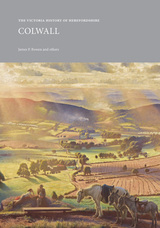 The Victoria History of Herefordshire: Colwall
James Bowen
University of London Press, 2020 This book provides a detailed history of the English village of Colwall, including its geography, economy, infrastructure, industry, and population. Colwall lies on the western slopes of the Malvern Hills, near the market town of Ledbury. The large village comprises Colwall Stone, Upper Colwall, and Colwall Green.
Discussing well-known landmarks, such as the Iron Age British Camp and the nearby mineral springs, this local history provides a narrative of the village’s development through the age of the landed gentry between the fifteenth and seventeenth centuries, the agricultural era of the eighteenth century, and the development of a spa economy in the mid-nineteenth century. Industrialization changed the town, with new railway infrastructure, tunnels, and the 1892 opening of the Schweppes bottling plant at Colwall Stone. Today, Colwall’s rural location and beautiful scenery continue to attract both visitors and new residents to the town, making this text a valuable resource for tourists and locals alike.
 The Victoria History of Herefordshire: Cradley
Anastasia Stylianou and Fergus Eskola-Oakes
University of London Press, 2025 Scenic and rural, the parish of Cradley stretches down westwards from the Malvern Hills, bordered by Worcestershire to the north and east. It is one of the largest parishes in Herefordshire, and from the medieval period to the nineteenth century was populous and prosperous. Cradley manor was a valuable holding of the medieval bishops of Hereford. The ecclesiastical benefice, Anglo-Saxon in origin, was equally lucrative, frequently passing nepotistically to well-connected young priests; however, such connections did not prevent one thirteenth-century rector being outlawed for murder! The expanding number of manors in the parish, from the thirteenth century onwards, resulted in a fragmented model of land ownership and the development of a powerful body of wealthy yeomanry, shaping the distinctive character of the parish and its governance in the early modern period. Drawing extensively on local archival sources, this volume analyses, among other topics, the centrality of agriculture to the parish's story, charting Cradley's socio-economic growth from the sixteenth to nineteenth centuries, before its subsequent decline. As such, this book constitutes an important contribution to English local history, exploring the prosperity that could be enjoyed by parishes in fertile Eastern Herefordshire, and the impact of changes in the national economy upon rural, agrarian communities.
 The Victoria History of Herefordshire: Eastnor
Janet Cooper
University of London Press, 2013 Eastnor is the first parish history to be produced by the Trust for the Victoria County History of Herefordshire, and complements some of the work on Ledbury undertaken for the Heritage Lottery-funded England’s Past for Everyone project between 2005 and 2009. In its expanded treatment of the parish history, emphasising the economy and society of the parish as well as landownership and religious life, Eastnor is modelled on the first individual VCH parish history to be published, that of Mapledurwell, Hampshire, in 2012. Eastnor lies at the southern end of the Malvern Hills and has always been an agricultural parish. In the 19th and 20th centuries it was dominated by the Castle, built between 1812 and 1820, and by its owners, the Somers Cocks family, Barons and later Earls Somers, and their descendants. The Somers Cocks owned most of the land in the parish and employed many of its inhabitants, and this ownership saved the parish and its many timber-framed houses from modern development. In earlier centuries the pattern of land ownership was very different; at the time of Domesday Book the bishop of Hereford’s manor covered the whole parish. From the later Middle Ages the owners of small freeholds extended their holdings, so that in the 16th and 17th centuries several gentry families owned small estates in the parish. In the course of the 18th century these were bought up by the Somers Cocks family. This book explores, using the extensive archival records, how these changes in land ownership affected the inhabitants of the parish and the way in which the land was farmed.
 The Victoria History of Leicestershire: Buckminster and Sewstern
Pamela J. Fisher
University of London Press, 2017 Buckminster and Sewstern, in north-east Leicestershire, are two small villages within a single parish, and although both were established before 1086, they have developed different characters. Buckminster was purely an agricultural village until the 1790s, when Sir William Manners enlarged a small park, built a mansion and began to create an estate village. Many of the houses are of red brick, and were built for estate employees by the 9th earl of Dysart between 1878 and 1935, as part of a programme of village improvements. All the land, residential and commercial properties in Buckminster were held in 2017 by the Tollemache family, descendants of Sir William and Lord Dysart. In contrast, Sewstern’s houses are individual in character, and mostly built from local limestone. Before the 20th century, many had large paddocks to the rear. The village is near the presumed ancient route known as Sewstern Lane, and a wide range of trades were followed between the 14th and 19th centuries, until the age of the railways ended the passing trade. Land in both villages was quarried for ironstone in the 20th century, then reinstated for farmland, resulting in fields that are several feet below the level of the roads and property curtilages. This book explores the similarities and differences between the two villages over more than a thousand years of recorded history.
 The Victoria History of Leicestershire: Castle Donington
Pamela J. Fisher and J.M. Lee
University of London Press, 2016 The parish of Castle Donington in north-west Leicestershire lies on the south bank of the river Trent, 20 miles north-west of Leicester and 8 miles south-east of Derby. A nucleated village developed on the present site more than 1,000 years ago. A castle was built in the 1150s, and several features of a town soon developed, including a market, fair and hospital. Secondary settlements grew up alongside the Trent, by the King’s Mills and at Cavendish Bridge, the site of an important medieval ferry. Donington Park, which originated in the early 13th century as a hunting park, became a separate estate of the earls of Huntingdon in the late 16th century. Later history has been shaped by strong religious nonconformity and the growth and then decline of traditional industries in the 18th and 19th centuries. Since then, modern transport links, including East Midlands Airport in the south of the parish, have delivered new employment opportunities. Castle Donington in the early 21st century is thriving. Many people travel in daily to work, and thousands more visit the motor-racing circuit at Donington Park and other leisure attractions each year, yet few know of the parish’s rich history. This book, the first in the Leicestershire VCH series since 1964, examines the changing patterns of landscape, landownership, working lives, social structure and religious worship in Castle Donington across many centuries, and includes the settlements at King’s Mills and Cavendish Bridge. It will be of interest to local residents, visitors, family and local historians.
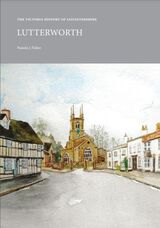 The Victoria History of Leicestershire: Lutterworth
Pamela J. Fisher
University of London Press, 2022 This volume in the Victoria County History series centers on the town of Lutterworth.
From before the Norman Conquest to the development of the jet engine, this volume tells the history of Lutterworth, a small market town in the southwest of Leicestershire. A combination of factors ensured the town’s success, including its position linking the rich agricultural land of south Leicestershire with the Warwickshire Arden and its natural resources of wood and coal. Lutterworth also played a role on the national stage, first in 1428, when the bones of the town rector, the theologian John Wyclif, were disinterred and desecrated on the instructions of the Pope. Lutterworth also made headlines between 1937 and 1942, when Frank Whittle developed the jet engine in a disused foundry in the town.
This book focuses on the people of Lutterworth and the roles they played in shaping the economy, schools, hospitals, churches, and the social life of the community. The evolution and development of the town are described in these pages, from its humble beginnings to the challenges it faces today.
 The Victoria History of Middlesex: St Clement Danes, 1660-1900
Edited by Francis Boorman
University of London Press, 2018 . This period was one of rapid urban transformation in the parish, as the large aristocratic riverside houses of the 17th century gave way to a bustling centre of commerce and culture in the 18th. The slums that developed in the 19th century were then swept away by the grand constructions of the Royal Courts of Justice and the Victoria Embankment, followed by the new thoroughfares of Aldwych and Kingsway, which are still the major landmarks in the area. Characterised by its contrasts, St Clement Danes was home to a mix of rich and poor residents, including lawyers, artisans, servants and prostitutes. The history of this fascinating area introduces a cast of characters ranging from the Twinings tea-trading family, to the rowdy theatre-going butchers of Clare Market and from the famous Samuel Johnson, to the infamous pornographers of Holywell Street. This book also unpicks the complicated structure of local government in the parish, and provides detailed accounts of the parish schools and charities.
 The Victoria History of Middlesex: St George Hanover Square
Francis Calvert Boorman
University of London Press, 2024 A compact history of the parish of St George Hanover Square in London.
The parish of St George Hanover Square encompasses the wealthy London neighborhoods of Mayfair, Belgravia, and Pimlico, as well as part of Hyde Park. This book relates the history of the parish, from its inception in 1725 to its abolition with the establishment of the London County Council in 1900. The area was transformed through rapid urbanization from largely undeveloped fields on the western fringe of London into one of the most affluent parts of the metropolis, with developments centered on a series of grand squares, including Hanover, Grosvenor, and Belgrave Squares. Through detailed thematic treatments, the book explores the local government of the vestry, as well as institutions such as schools and charities and St George’s Hospital, which is now based in South London. The wider political culture and the economy of the parish are also given their due, from the aristocrats and servants of Mayfair to the industries on the bank of the Thames, including factories and a distillery. Finally, it covers the religious life of the parish, the erection of new churches and chapels, and its division into ecclesiastical parishes and subdistricts as its population boomed in the nineteenth century.
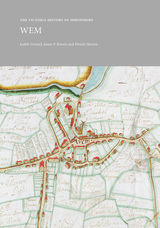 The Victoria History of Shropshire: Wem
Judith Ann Everard and James Bowen
University of London Press, 2020 The township of Wem lies on the North Shropshire Plain, about nine miles north of Shrewsbury. The centre of a much larger medieval manor and parish, the township consists of the small medieval market town and its immediate rural hinterland. Anglo-Saxon settlements existed in the area but the town developed from a Norman foundation, with a castle, parish church, market and water mill. The urban area of the township, ‘within the bars’, was distinguished from the rural, ‘without the bars’. Burgages were laid out, with a customary borough-hold tenure, but the borough never attained corporate status. Isolated from the main regional transport routes, Wem developed as a local centre of government and trade in agricultural produce, especially cheese. It was thrust onto the national stage in 1642 when Parliamentarians defeated a Royalist attack and held the town for the duration of the Civil War. The ‘great fire’ of 1677 then destroyed most of the medieval buildings in the town centre, leading to its predominantly Georgian and Victorian appearance today. The decline in agricultural employment and the withdrawal of services and industries from small market towns like Wem in recent decades is a challenge, met by the advantage of the railway station to residents who work elsewhere but choose the town as a place to live.
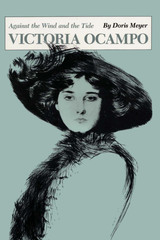 Victoria Ocampo: Against the Wind and the Tide
By Doris Meyer
University of Texas Press, 1989 The "first lady of Argentine letters," Victoria Ocampo is best known as the architect of cultural bridges between the American and European continents and as the founder and director of Sur, an influential South American literary review and publishing house. In this first biographical study in English of "la superbe Argentine," originally published in 1979, Doris Meyer considers Victoria Ocampo's role in introducing European and North American writers and artists to the South American public—through the pages of her review, through translations of their work, and through lecture tours and recitations. She examines Ocampo's personal relationships with some of the most illustrious writers and thinkers of this century—including José Ortega y Gasset, Rabindranath Tagore, Count Hermann Keyserling, Virginia Woolf, Adrienne Monnier, Vita Sackville-West, Gabriela Mistral, and many others. And she portrays an extraordinary woman who rebelled against the strictures of family and social class to become a leading personality in the fight for women's rights in Argentina and, later, a steadfast opponent of the Perón regime, for which she was sent to jail in 1953. Fifteen of Victoria Ocampo's essays, selected from her more than ten volumes of prose and translated by Doris Meyer, complement the biographical study.
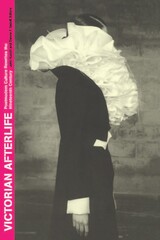 Victorian Afterlife: Postmodern Culture Rewrites the Nineteenth Century
John Kucich
University of Minnesota Press, 2000 A foundational look at contemporary uses of the Victorian and the presence of the past in postmodern culture. Celebrated films by Francis Ford Coppola, Jane Campion, and Ang Lee; best-selling novels by A. S. Byatt and William Gibson; revivals of Oscar Wilde, Lewis Carroll’s Alice, and nostalgic photography; computer graphics and cyberpunk performances: contemporary culture, high and low, has fallen in love with the nineteenth century. Major critical thinkers have found in the period the origins of contemporary consumerism, sexual science, gay culture, and feminism. And postmodern theory, which once drove a wedge between contemporary interpretation and its historical objects, has lately displayed a new self-consciousness about its own appropriations of the past. This diverse collection of essays begins a long-overdue discussion of how postmodernism understands the Victorian as its historical predecessor. Contributors: Nancy Armstrong, Brown U; Ian Baucom, Duke U; Jay Clayton, Vanderbilt U; Mary A. Favret, Indiana U; Simon Gikandi, U of Michigan; Jennifer Green-Lewis, George Washington U; Kali Israel, U of Michigan; Laurie Langbauer, U of North Carolina; Susan Lurie, Rice U; John McGowan, U of North Carolina; Judith Roof, Indiana U; Hilary M. Schor, USC; Ronald R. Thomas, Trinity College; and Shelton Waldrep, U of Southern Maine.
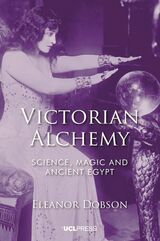 Victorian Alchemy: Science, Magic and Ancient Egypt
Eleanor Dobson
University College London, 2022 An engaging study of how Victorian-era representations of ancient Egypt blended science and mysticism.
With its material remnants paradoxically symbolizing both antiquity and modernity to Victorian audiences, ancient Egypt was at once evocative of ancient magical power and of cutting-edge science, a tension that might be productively conceived of as “alchemical.” Examining literature and other cultural forms including art, photography, and early film, Eleanor Dobson herein traces the myriad ways in which the Victorian fascination with ancient Egypt evoked the entwined forces of magic and science, providing more than a mere setting for Orientalist fantasies and nightmares. From imaging technologies and astronomy to investigations into the electromagnetic spectrum and the human mind itself, this book demonstrates how conceptions of modernity were inextricably bound up in the contemporary reception of the ancient world, illustrating how such ideas took root and flourished in the Victorian era and persist to this day.
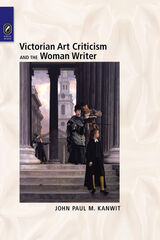 Victorian Art Criticism and the Woman Writer
John Paul M. Kanwit
Ohio State University Press, 2013 Victorian Art Criticism and the Woman Writer by John Paul M. Kanwit examines the development of specialized art commentary in a period when art education became a national concern in Britain. The explosion of Victorian visual culture—evident in the rapid expansion of galleries and museums, the technological innovations of which photography is only the most famous, the public debates over household design, and the high profile granted to such developments as the Aesthetic Movement—provided art critics unprecedented social power. Scholarship to date, however, has often been restricted to a narrow collection of male writers on art: John Ruskin, Walter Pater, William Morris, and Oscar Wilde. By including then-influential but now lesser-known critics such as Anna Jameson, Elizabeth Eastlake, and Emilia Dilke, and by focusing on critical debates rather than celebrated figures, Victorian Art Criticism and the Woman Writer refines our conception of when and how art criticism became a professional discipline in Britain. Jameson and Eastlake began to professionalize art criticism well before the 1860s, that is, before the date commonly ascribed to the professionalization of the discipline. Moreover, in concentrating on historical facts rather than legends about art, these women critics represent an alternative approach that developed the modern conception of art history. In a parallel development, the novelists under consideration—George Eliot, Charlotte Brontë, Anne Brontë, and Elizabeth Gaskell—read a wide range of Victorian art critics and used their lessons in key moments of spectatorship. This more inclusive view of Victorian art criticism provides key insights into Victorian literary and aesthetic culture. The women critics discussed in this book helped to fashion art criticism as itself a literary genre, something almost wholly ascribed to famous male critics.
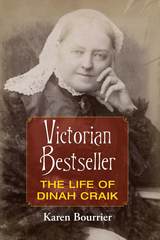 Victorian Bestseller: The Life of Dinah Craik
Karen Bourrier
University of Michigan Press, 2019 When novelist Dinah Craik (1826–87) died, expressions of grief came from Lord Alfred Tennyson, Matthew Arnold, Robert Browning, T.H. Huxley, and James Russell Lowell, among others, and even Queen Victoria picked up her pen to offer her consolation to the widower. Despite Craik’s enormous popularity throughout a literary career that spanned forty years, she is now all but forgotten. Yet, in an otherwise respectable life bookended by scandal, this was precisely the way that she wanted it.
Victorian Bestseller is the first book to relate the story of Dinah Craik’s remarkable life. Combining extensive archival work with theoretical work in disability studies and the professionalization of women’s authorship, Karen Bourrier engagingly traces the contours of this author’s life. Craik, who wrote extensively about disability in her work, was no stranger to it in her personal and professional life, marked by experiences of mental and physical disability, and the ebb and flow of health. Following scholarship in the ethics of care and disability studies, the book posits Craik as an interdependent subject, placing her within a network of writers, publishers, editors and artists, friends, and family members. Victorian Bestseller also traces the conditions in the material history of the book that allowed Victorian women writers’ careers to flourish. In doing so, the biography connects corporeality, gender, and the material history of the book to the professionalization of Victorian women’s authorship.
 The Victorian Critic and the Idea of History: Carlyle, Arnold, Pater
Peter Allan Dale
Harvard University Press, 1977 A sense of history and concern for the meaning of history dominated English thought in the nineteenth century; Peter Dale is concerned with this historicizing as it affected Victorian theories about the nature of poetry and art. Examining the critical writings of three of the period's most influential figures—Carlyle, Arnold, and Pater—Dale finds these men preoccupied with the impermanence of moral and intellectual systems and of the artistic values that depended upon them. In adjusting the absolutes of earlier periods to the new historicism the Victorians helped to usher in twentieth-century formalism.
The Victorian Critic and the Idea of History has much to offer to anyone interested in Victorian thought, as well as to modernists concerned with tracing the roots of twentieth-century poetics. It represents an admirable combination of close argument and precision with breadth of view and implication.
Victorian Critics of Democracy: Carlyle, Ruskin, Arnold, Stephen, Maine, Lecky
Benjamin Evans Lippincott
University of Minnesota Press, 1938 Victorian Critics of Democracy was first published in 1938. Minnesota Archive Editions uses digital technology to make long-unavailable books once again accessible, and are published unaltered from the original University of Minnesota Press editions.
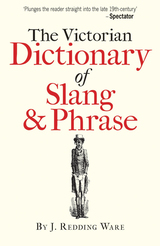 The Victorian Dictionary of Slang & Phrase
J. Redding Ware
Bodleian Library Publishing, 2015 Acutely aware of the changes affecting English at the end of the Victorian era, writer and journalist J. Redding Ware set out to record words and turns of phrase from all walks of life, from the curses in common use by sailors to the rhyming slang of the street and the jargon of the theater dandies. In doing so, he extended the lifespan of words like “air-hole,” “lally-gagging,” and “bow-wow mutton.”
First published in 1909 and reproduced here with a new introduction by Oxford English Dictionary former editor John Simpson, The Victorian Dictionary of Slang and Phrase 1909 reflects the rich history of unofficial English. Many of the expressions are obsolete; one is not likely to have the misfortune of encountering a “parlour jumper.” Order a “shant of bivvy” at the pub and you’ll be met with a blank stare. But some of the entries reveal the origins of expressions still in use today, such as calling someone a “bad egg” to indicate that they are dishonest or of ill-repute. While showing the significant influence of American English on Victorian slang, the Dictionary also demonstrates how impressively innovative its speakers were. A treasure trove of everyday language of the nineteenth century, this book has much to offer in terms of insight into the intriguing history of English and will be of interest to anyone with a passion for words.
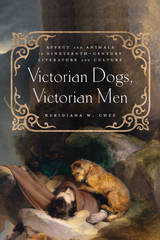 Victorian Dogs, Victorian Men: Affect and Animals in Nineteenth-Century Literature and Culture
Keridiana W. Chez
Ohio State University Press, 2017 Victorian Dogs, Victorian Men: Affect and Animals in Nineteenth-Century Literature and Culture by Keridiana W. Chez is the first monograph located at the intersection of animal and affect studies to examine how gender is produced via the regulation of interspecies relationships. Looking specifically at the development of the human-dog relationship, Chez argues that the bourgeoisie fostered connections with canine companions in order to mediate and regulate gender dynamics in the family. As Chez shows, the aim of these new practices was not to use animals as surrogates to fill emotional vacancies but rather to incorporate them as “emotional prostheses.”
Chez traces the evolution of the human-dog relationship as it developed parallel to an increasingly imperialist national discourse. The dog began as the affective mediator of the family, then addressed the emotional needs of its individual members, and finally evolved into both “man’s best friend” and worst enemy. By the last decades of the nineteenth century, the porous human-animal boundary served to produce the “humane” man: a liberal subject enabled to engage in aggressive imperial projects. Reading the work of Charles Dickens, George Eliot, Margaret Marshall Saunders, Bram Stoker, and Jack London, Victorian Dogs, Victorian Men charts the mobilization of affect through transatlantic narratives, demonstrating the deep interconnections between animals, affect, and gender.
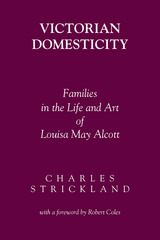 Victorian Domesticity: Families in the Life and Art of Louisa May Alcott
Charles Strickland
University of Alabama Press, 1985 The subject of Victorian Domesticity is family life in America. The life and works of Louisa May Alcott served as the vehicle for exploring and analyzing this subject. Although Alcott was deeply influenced by popular currents of sentimentality, her own experience exposed her to the confusions and contradictions generated when sentiment confronted the reality of life in 19th-century America. In the first chapter Strickland outlines the ways in which sentimentality colored the perception of 19th-century Americans about such issues as courtship, marriage, the relationship between the sexes, generational relationships, and the relationship between the nuclear family and the community outside the family. Chapters two and three trace Alcott’s childhood and adolescent experiences, exploring the tensions that developed between Louisa and her father, and detailing the ways in which she carried the double burden of being both poor and female as she sought her identity as a writer. The following six chapters treat the varieties of family life that appear in Alcott’s stories, the impact of feminism on her life, and her emphasis on the importance of child nurture. In the final two chapters the author treats the relationships that Alcott perceived between the family and the world around it and assesses the legacy of the Victorian family idea.
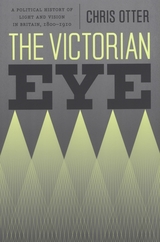 The Victorian Eye: A Political History of Light and Vision in Britain, 1800-1910
Chris Otter
University of Chicago Press, 2008 During the nineteenth century, Britain became the first gaslit society, with electric lighting arriving in 1878. At the same time, the British government significantly expanded its power to observe and monitor its subjects. How did such enormous changes in the way people saw and were seen affect Victorian culture? To answer that question, Chris Otter mounts an ambitious history of illumination and vision in Britain, drawing on extensive research into everything from the science of perception and lighting technologies to urban design and government administration. He explores how light facilitated such practices as safe transportation and private reading, as well as institutional efforts to collect knowledge. And he contends that, contrary to presumptions that illumination helped create a society controlled by intrusive surveillance, the new radiance often led to greater personal freedom and was integral to the development of modern liberal society.
The Victorian Eye’s innovative interdisciplinary approach—and generous illustrations—will captivate a range of readers interested in the history of modern Britain, visual culture, technology, and urbanization.
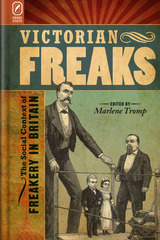 Victorian Freaks: The Social Context of Freakery in Britain
Marlene Tromp
Ohio State University Press, 2008 While “freaks” have captivated our imagination since well before the nineteenth century, the Victorians flocked to shows featuring dancing dwarves, bearded ladies, “missing links,” and six-legged sheep. Indeed, this period has been described by Rosemarie Garland-Thomson as the epoch of “consolidation” for freakery: an era of social change, enormously popular freak shows, and taxonomic frenzy. Victorian Freaks: The Social Context of Freakery in Britain, edited by Marlene Tromp, turns to that rich nexus, examining the struggle over definitions of “freakery” and the unstable and sometimes conflicting ways in which freakery was understood and deployed. As the first study centralizing British culture, this collection discusses figures as varied as Joseph Merrick, “The Elephant Man”; Daniel Lambert, “King of the Fat Men”; Julia Pastrana, “The Bear Woman”; and Laloo “The Marvellous Indian Boy” and his embedded, parasitic twin. The Victorian Freaks contributors examine Victorian culture through the lens of freakery, reading the production of the freak against the landscape of capitalist consumption, the medical community, and the politics of empire, sexuality, and art. Collectively, these essays ask how freakery engaged with notions of normalcy and with its Victorian cultural context.
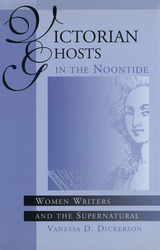 Victorian Ghosts in the Noontide: Women Writers and the Supernatural
Vanessa D. Dickerson
University of Missouri Press, 1996 During the nineteenth century, British society was making rapid advancements in science and technology. While the men became materially productive, women were expected to be the fulcrums of society's changes. As one means of adjusting to these changes, many women focused on supernaturalism and spirituality. In Victorian Ghosts in the Noontide, Vanessa D. Dickerson analyzes women's spirituality in a materialistic age by examining the supernatural fiction of Charlotte and Emily Brontë, Elizabeth Gaskell, and George Eliot and provides interpretive readings of familiar texts like Jane Eyre and Wuthering Heights. Other works by lesser-known authors are also examined. Technological advances eliminated many of the jobs women were accustomed to doing. This left women looking for their place in society. A sense of "in-betweenness" developed in these women who were now expected to attend not only to the physical but also to the moral and spiritual needs of the family. As an answer to this "in-betweenness" some channeled their power toward the art of writing. Because people in the mid-1800s were so thoroughly engaged in scientific thought and advancements, supernatural folklore and spirituality were disreputable ideas for anyone, especially women, to explore. Ghosts and spirits were tied to old-wives' tales, superstitions, and legends. However, by focusing on these concepts and using fiction as an outlet, women were able to make great strides in being seen and heard. The art of writing functioned as an exploration of their spiritualism in which women discovered expression, freedom, and power. This perceptive, well-written book will add a new dimension to our understanding of women's supernatural writings of the Victorian era. Scholars of Victorian literature, women's studies, and popular culture will benefit from its insights.
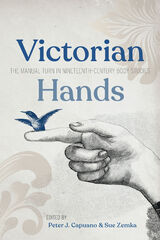 Victorian Hands: The Manual Turn in Nineteenth-Century Body Studies
Edited by Peter J. Capuano and Sue Zemka
Ohio State University Press, 2020 Until recently, the embodied hand has paradoxically escaped the notice of nineteenth-century cultural and literary historians precisely because of its centrality. The essays in Peter J. Capuano and Sue Zemka’s new collection, Victorian Hands: The Manual Turn in Nineteenth-Century Body Studies, join an emerging body of work that seeks to remedy this. Casting new light on an array of well-known authors—Charlotte Brontë, Christina Rossetti, George Eliot, Wilkie Collins, William Morris, Thomas Hardy, Henry James, and Oscar Wilde—the volume explores the role of the hand as a nexus between culture and physical embodiment. The contributors to this volume address a wide range of manual topics and concerns, including those related to religion, medicine, science, industry, paranormal states, language, digital humanities, law, photography, disability, and art history. Examining hands, language, materiality, and agency, these contributors employ their expertise as Victorianists in order to understand what hands have to tell us about the cultural preoccupations of the nineteenth century and how the unique conditions of Britain at the time shaped the modern emergence of our cultural relationship with our hands.
Contributors
James Eli Adams, Karen Bourrier, Aviva Briefel, Peter J. Capuano, Jonathan Cheng, Kate Flint, Pamela K. Gilbert, Tamara Ketabgian, J. Hillis Miller, Deborah Denenholz Morse, Daniel A. Novak, Julianne Smith, Herbert F. Tucker, and Sue Zemka
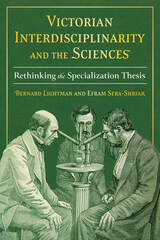 Victorian Interdisciplinarity and the Sciences: Rethinking the Specialization Thesis
Efram Sera-Shriar
University of Pittsburgh Press, 2024 The specialization thesis—the idea that nineteenth-century science fragmented into separate forms of knowledge that led to the creation of modern disciplines—has played an integral role in the way historians have described the changing disciplinary map of nineteenth-century British science. This volume critically reevaluates this dominant narrative in the historiography. While new disciplines did emerge during the nineteenth century, the intellectual landscape was far muddier, and in many cases new forms of specialist knowledge continued to cross boundaries while integrating ideas from other areas of study. Through a history of Victorian interdisciplinarity, this volume offers a more complicated and innovative analysis of discipline formation. Harnessing the techniques of cultural and intellectual history, studies of visual culture, Victorian studies, and literary studies, contributors break out of subject-based silos, exposing the tension between the rhetorical push for specialization and the actual practice of knowledge sharing across disciplines during the nineteenth century.
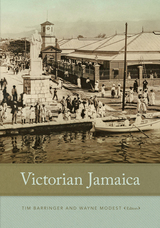 Victorian Jamaica
Timothy Barringer and Wayne Modest, editors
Duke University Press, 2018 Victorian Jamaica explores the extraordinary surviving archive of visual representation and material objects to provide a comprehensive account of Jamaican society during Queen Victoria's reign over the British Empire, from 1837 to 1901. In their analyses of material ranging from photographs of plantation laborers and landscape paintings to cricket team photographs, furniture, and architecture, as well as a wide range of texts, the contributors trace the relationship between black Jamaicans and colonial institutions; contextualize race within ritual and performance; and outline how material and visual culture helped shape the complex politics of colonial society. By narrating Victorian history from a Caribbean perspective, this richly illustrated volume—featuring 270 full-color images—offers a complex and nuanced portrait of Jamaica that expands our understanding of the wider history of the British Empire and Atlantic world during this period.
Contributors. Anna Arabindan-Kesson, Tim Barringer, Anthony Bogues, David Boxer, Patrick Bryan, Steeve O. Buckridge, Julian Cresser, John M. Cross, Petrina Dacres, Belinda Edmondson, Nadia Ellis, Gillian Forrester, Catherine Hall, Gad Heuman, Rivke Jaffe, O'Neil Lawrence, Erica Moiah James, Jan Marsh, Wayne Modest, Daniel T. Neely, Mark Nesbitt, Diana Paton, Elizabeth Pigou-Dennis, Veerle Poupeye, Jennifer Raab, James Robertson, Shani Roper, Faith Smith, Nicole Smythe-Johnson, Dianne M. Stewart, Krista A. Thompson
Victorian Literature and the Physics of the Imponderable
Sarah C. Alexander
University of Pittsburgh Press, 2015 The Victorians are known for their commitment to materialism, evidenced by the dominance of empiricism in the sciences and realism in fiction. Yet there were other strains of thinking during the period in the physical sciences, social sciences, and literature that privileged the spaces between the material and immaterial. This book examines how the emerging language of the “imponderable” helped Victorian writers and physicists make sense of new experiences of modernity. As Sarah Alexander argues, while Victorian physicists were theorizing ether, energy and entropy, and non-Euclidean space and atom theories, writers such as Charles Dickens, William Morris, and Joseph Conrad used concepts of the imponderable to explore key issues of capitalism, imperialism, and social unrest.
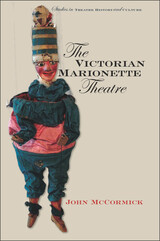 The Victorian Marionette Theatre
John Mccormick
University of Iowa Press, 2004 In this fascinating and colorful book, researcher and performer John McCormick focuses on the marionette world of Victorian Britain between its heyday after 1860 and its waning years from 1895 to 1914. Situating the rich and diverse puppet theatre in the context of entertainment culture, he explores both the aesthetics of these dancing dolls and their sociocultural significance in their life and time. The history of marionette performances is interwoven with live-actor performances and with the entire gamut of annual fairs, portable and permanent theatres, music halls, magic lantern shows, waxworks, panoramas, and sideshows. McCormick has drawn upon advertisements in the Era, an entertainment paper, between the 1860s and World War I, and articles in the World’s Fair, a paper for showpeople, in the first fifty years of the twentieth century, as well as interviews with descendants of the marionette showpeople and close examinations of many of the surviving puppets. McCormick begins his study with an exploration of the Victorian marionette theatre in the context of other theatrical events of the day, with proprietors and puppeteers, and with the venues where they performed. He further examines the marionette’s position as an actor not quite human but imitating humans closely enough to be considered empathetic; the ways that physical attributes were created with wood, paint, and cloth; and the dramas and melodramas that the dolls performed. A discussion of the trick figures and specialized acts that each company possessed, as well as an exploration of the theatre’s staging, lighting, and costuming, follows in later chapters. McCormick concludes with a description of the last days of marionette theatre in the wake of changing audience expectations and the increasing popularity of moving pictures. This highly enjoyable and readable study, often illuminated by intriguing anecdotes such as that of the Armenian photographer who fell in love with and abducted the Holden company’s Cinderella marionette in 1881, will appeal to everyone fascinated by the magic of nineteenth-century theatre, many of whom will discover how much the marionette could contribute to that magic.
Victorian Medicine and Popular Culture
Louise Penner
University of Pittsburgh Press, 2015 This collection of essays explores the rise of scientific medicine and its impact on Victorian popular culture. Chapters include an examination of Charles Dickens’s involvement with hospital funding, concerns over milk purity and the theatrical portrayal of drug addiction, plus a whole section devoted to the representation of medicine in crime fiction. This is an interdisciplinary study involving public health, cultural studies, the history of medicine, literature and the theatre, providing new insights into Victorian culture and society.
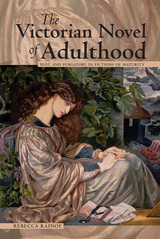 The Victorian Novel of Adulthood: Plot and Purgatory in Fictions of Maturity
Rebecca Rainof
Ohio University Press, 2015 In The Victorian Novel of Adulthood, Rebecca Rainof confronts the conventional deference accorded the bildungsroman as the ultimate plot model and quintessential expression of Victorian nation building. The novel of maturity, she contends, is no less important to our understanding of narrative, Victorian culture, and the possibilities of fiction.
Reading works by Charles Dickens, George Eliot, Henry James, John Henry Newman, and Virginia Woolf, Rainof exposes the little-discussed theological underpinnings of plot and situates the novel of maturity in intellectual and religious history, notably the Oxford Movement. Purgatory, a subject hotly debated in the period, becomes a guiding metaphor for midlife adventure in secular fiction. Rainof discusses theological models of gradual maturation, thus directing readers’ attention away from evolutionary theory and geology, and offers a new historical framework for understanding Victorian interest in slow and deliberate change.
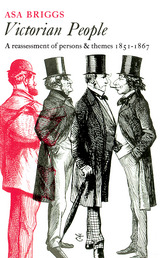 Victorian People: A Reassessment of Persons and Themes, 1851-67
Asa Briggs
University of Chicago Press, 1975 This text looks at the people, ideas and events between the Great Exhibition of 1851 and the Second Reform Act of 1867. From "John Arthur Roebuck and the Crimean War", and "Samuel Smiles and the Gospel of Work" to "Thomas Hughes and the Public Schools" and "Benjanmin Disraeli and the Leap in the Dark", Asa Briggs provides an assessment of Victorian achievements; and in doing so conjures up an enviable picture of the progress and independence of the last century.
"For expounding this theme, this interaction of event and personality, Mr. Briggs is abundantly and happily endowed. He is always readable, often amusing, never facetious. He is widely read and widely interested. He has a sound historic judgment, and an unfailing sense for what is significant in the historic sequence and what is merely topical. . . . Above all, he is in sympathy with the age of which he is writing."—Times Literary Supplement
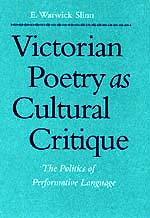 Victorian Poetry as Cultural Critique: The Politics of Performative Language
E. Warwick Slinn
University of Virginia Press, 2003 In recent cultural studies, poetry has become something of a neglected genre. Warwick Slinn seeks to reverse that trend and argues that a fundamental continuity between the meaning of a poetic trope and the social function of language can be established through speech act theory--specifically through the linguistically based model of performativity.
Victorian Poetry as Cultural Critique discusses five Victorian poems in order to show how their display of language enacts a cultural critique, examining the conditions and realization of social and political discourses. Slinn begins by distinguishing the main conceptual strands of performativity and then explains how each poem dramatizes a fluid mix of identity, power, and ideology. By foregrounding such events as speech acts, these poems expose the politics of power relationships and show how performative language is inextricable from the means by which power relationships are enacted. Focusing on the internal dynamics of specific poems, Slinn challenges the separation of poetic language from social criticism and eventually questions traditional perceptions of poetic form itself.
The selected poems, by Elizabeth Barrett Browning, Robert Browning, Arthur Hugh Clough, Dante Gabriel Rossetti, and Augusta Webster, offer a range of contentious issues that are in themselves politically challenging. The poets address such diverse and problematic concerns as slavery, sexual politics, prostitution, consciousness, agency, aestheticism, religious belief, and philosophical idealism. The discussion of each poem attends to the complexity of the poem's utterance, its historical contexts, and its broader implications for cultural meaning.
--------------------------------------------------------------------------------
E. Warwick Slinn, Associate Professor in the School of English and Media Studies, Massey University, New Zealand, is the author of Browning and the Fictions of Identity and The Discourse of Self in Victorian Poetry (Virginia).
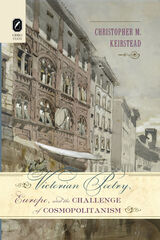 Victorian Poetry, Europe, and the Challenge of Cosmopolitanism
Christopher M. Keirstead
Ohio State University Press, 2011 The scope and complexity of the encounter with Europe in Victorian poetry remains largely underappreciated despite recent critical attention to the genre’s global and transnational contexts. Providing much more than colorful settings or a convenient place of self-exile from England, Europe—as destination and idea—formed the basis of a dynamic, evolving form of critical cosmopolitanism much in tune with attempts to theorize the concept today. Christopher M. Keirstead’s Victorian Poetry, Europe, and the Challenge of Cosmopolitanism synthesizes the complex relationship between several notable Victorian poets, including Elizabeth Barrett Browning, Robert Browning, Matthew Arnold, and A. C. Swinburne, and their respective attitudes toward Europe as a cosmopolitan whole. Examining their international relationships and experiences, the monograph explores the ways in which these poets worked to reconcile their emotional and intellectual affinity for world citizenship with their British identity. This book reveals how a diverse range of poets sought to resituate the form within a broad European political and cultural frame of reference. At the same time, a strong awareness of the difficulties of sustaining genuine, transformative contact between cultures permeates the work of these poets. The challenge of cosmopolitanism thus consisted not only in the threat it posed to entrenched assumptions about what was normative, natural, or universal but also in the challenge cosmopolitanism posed to itself.
|
|
